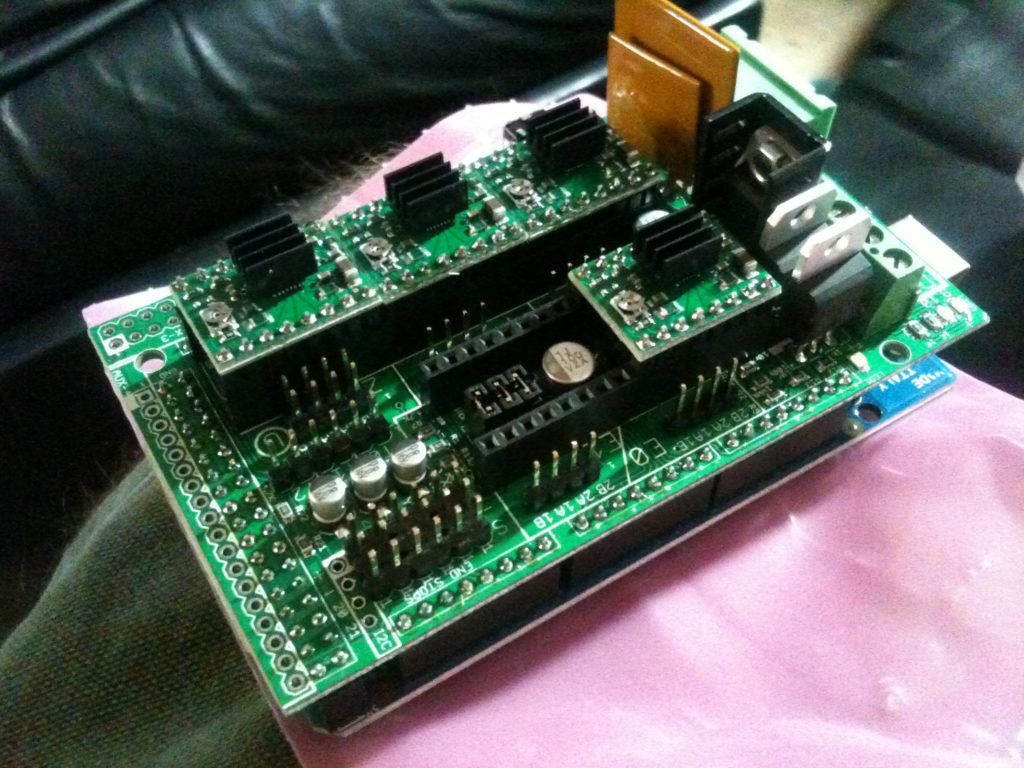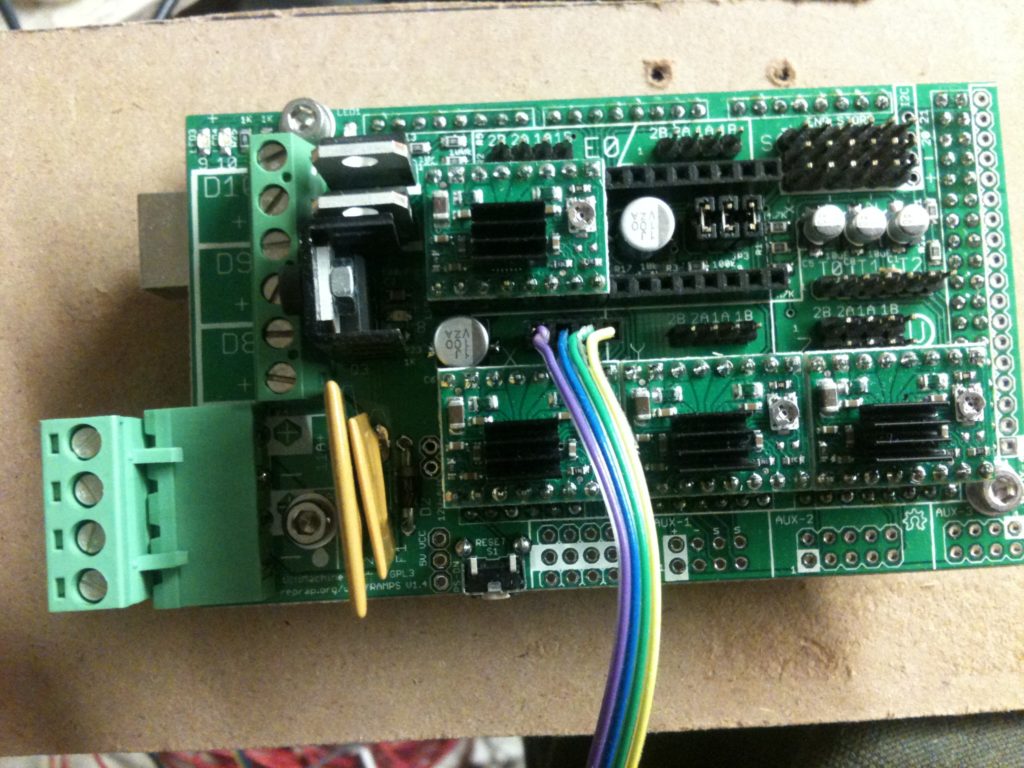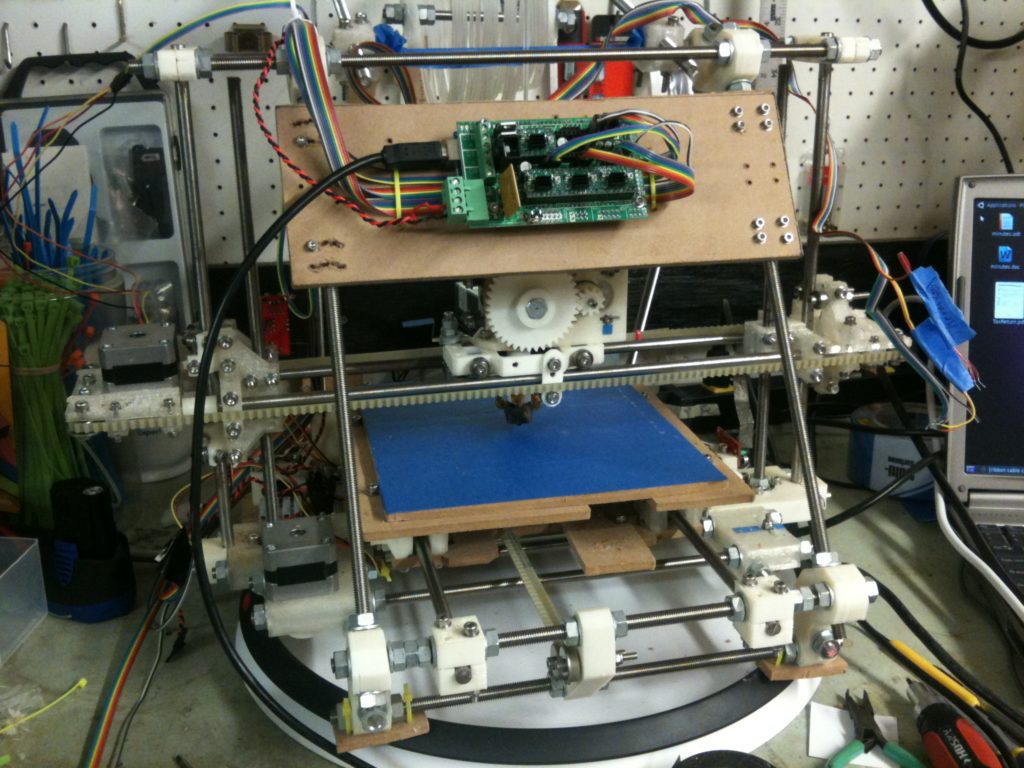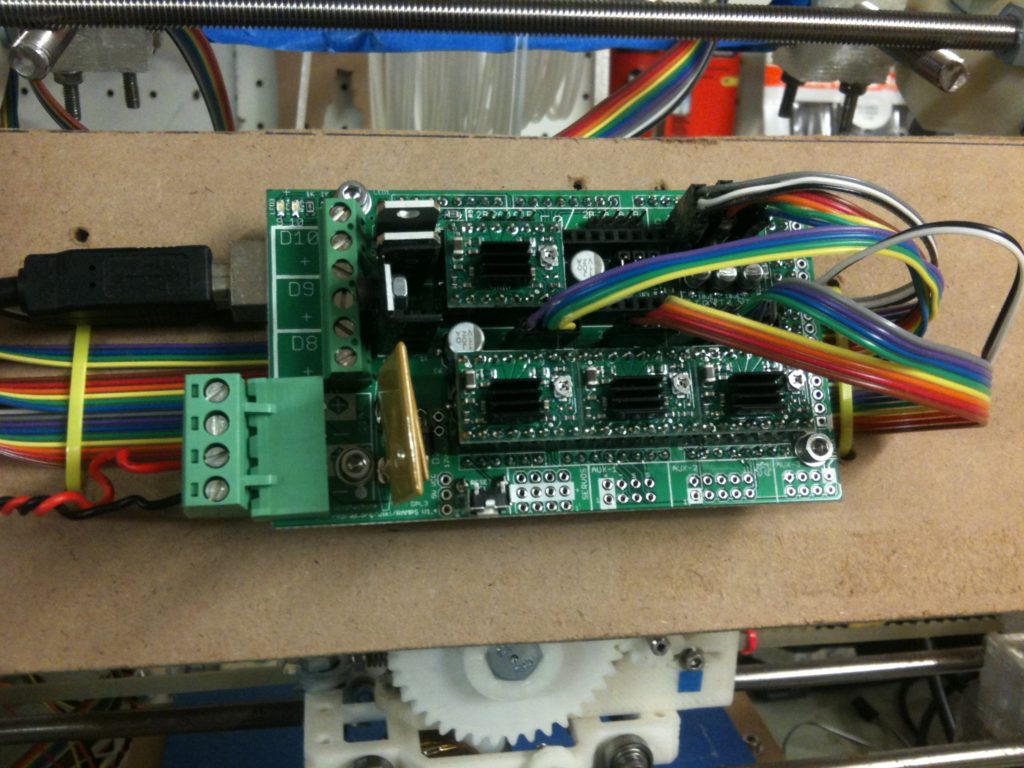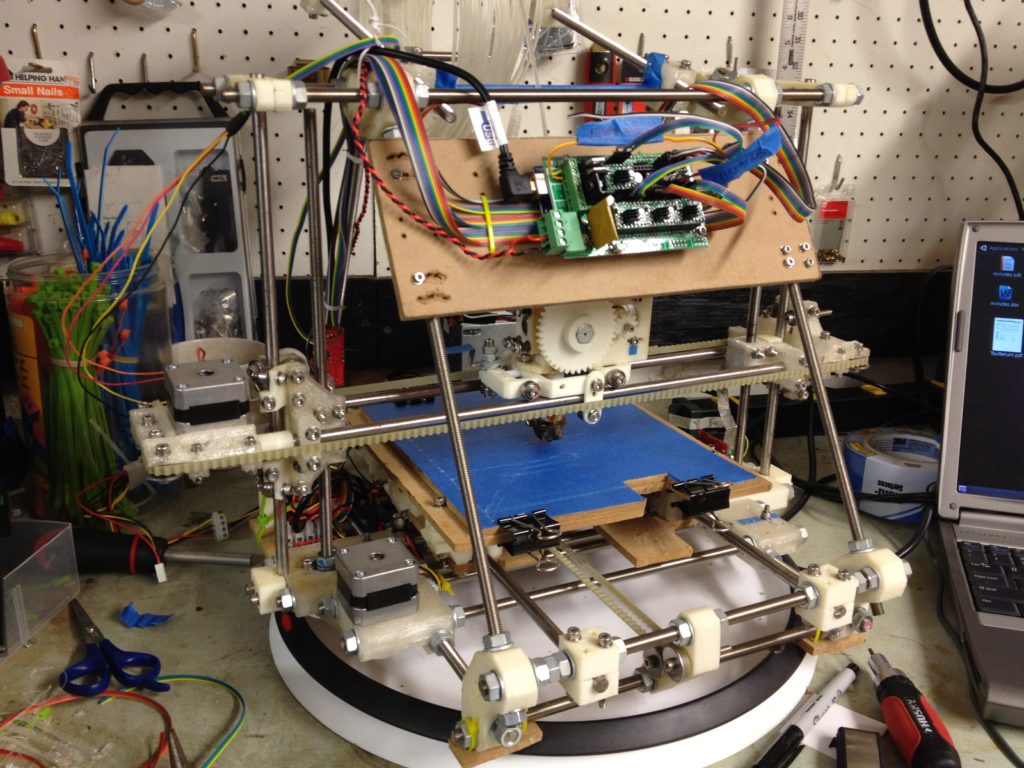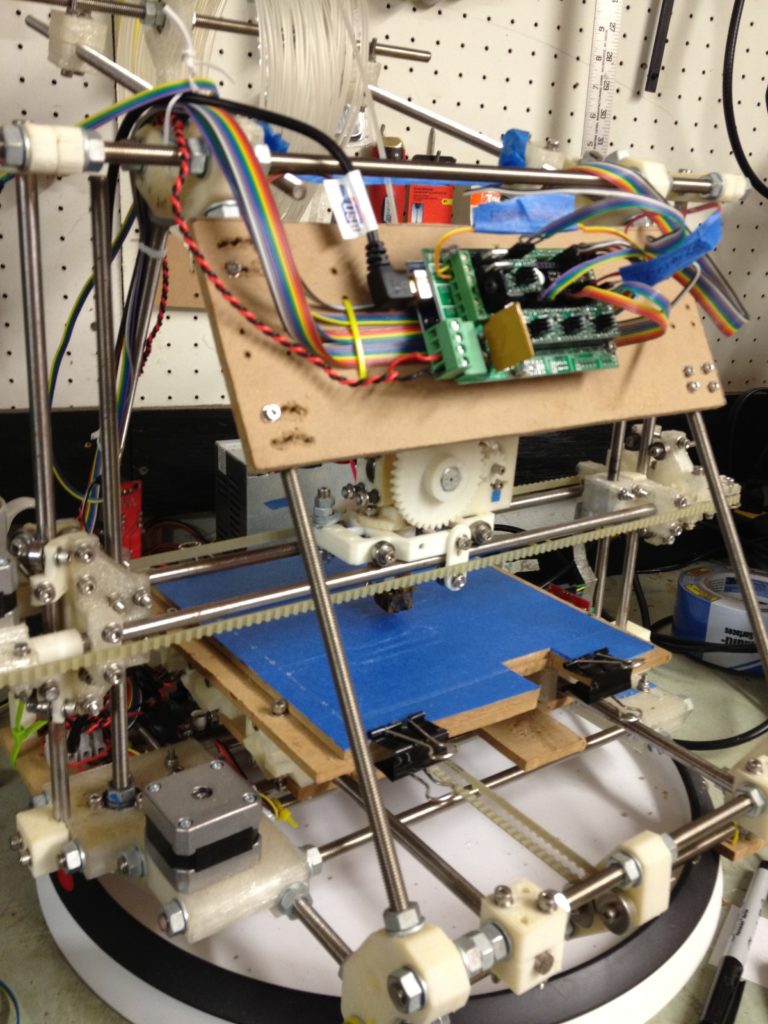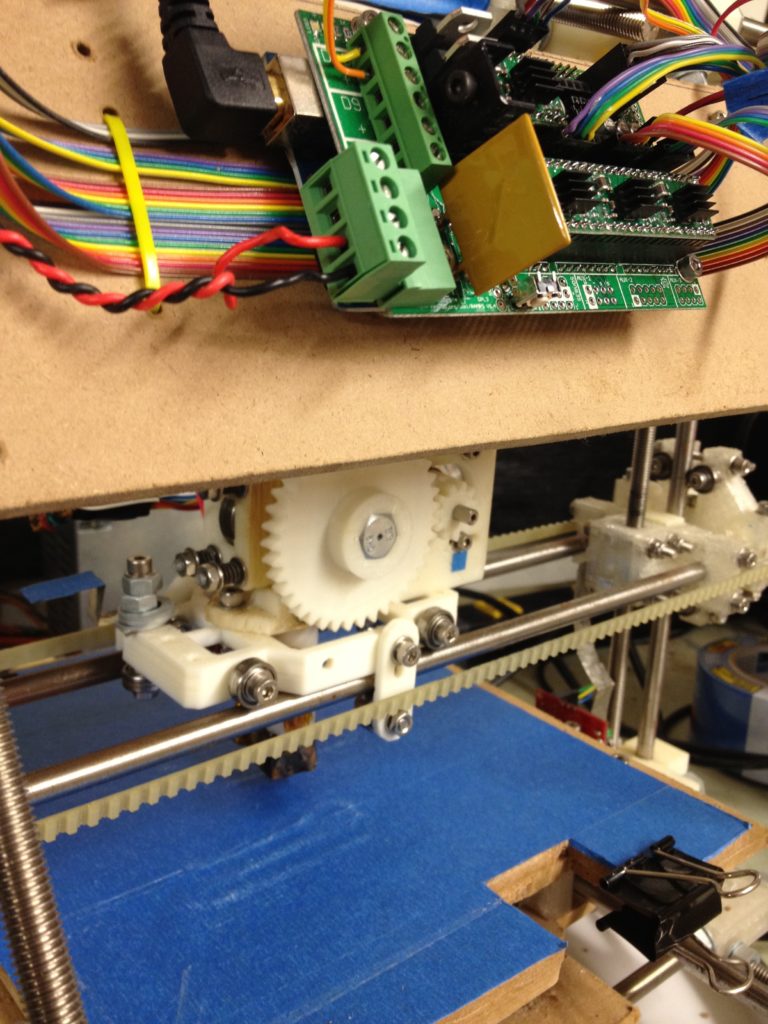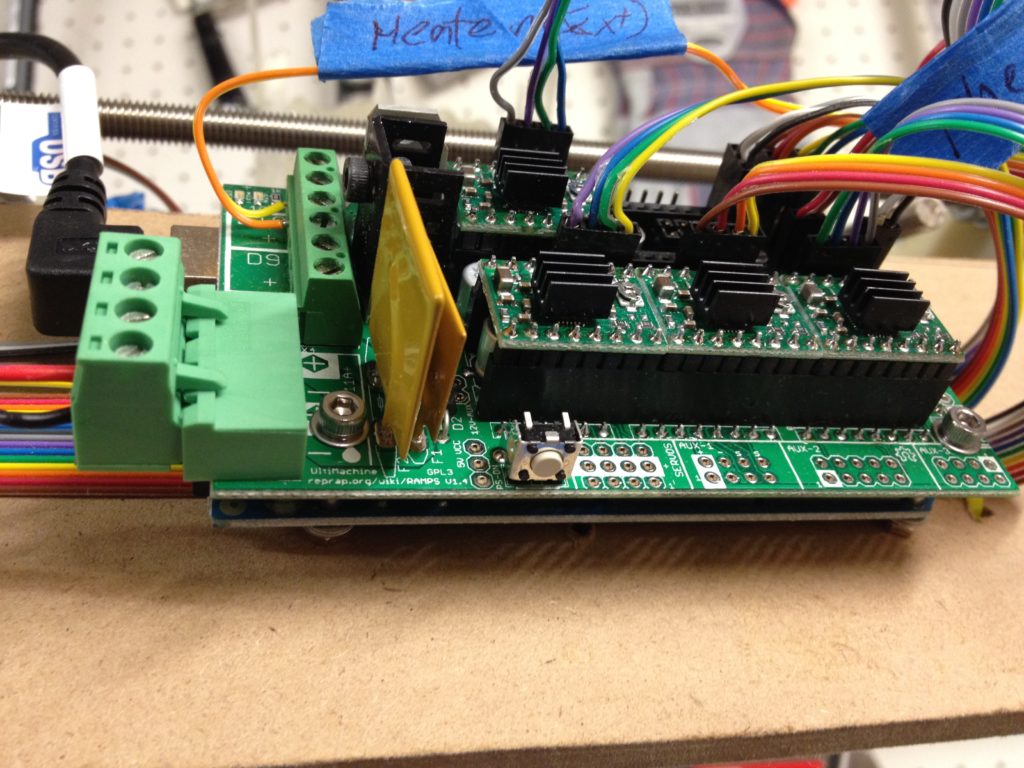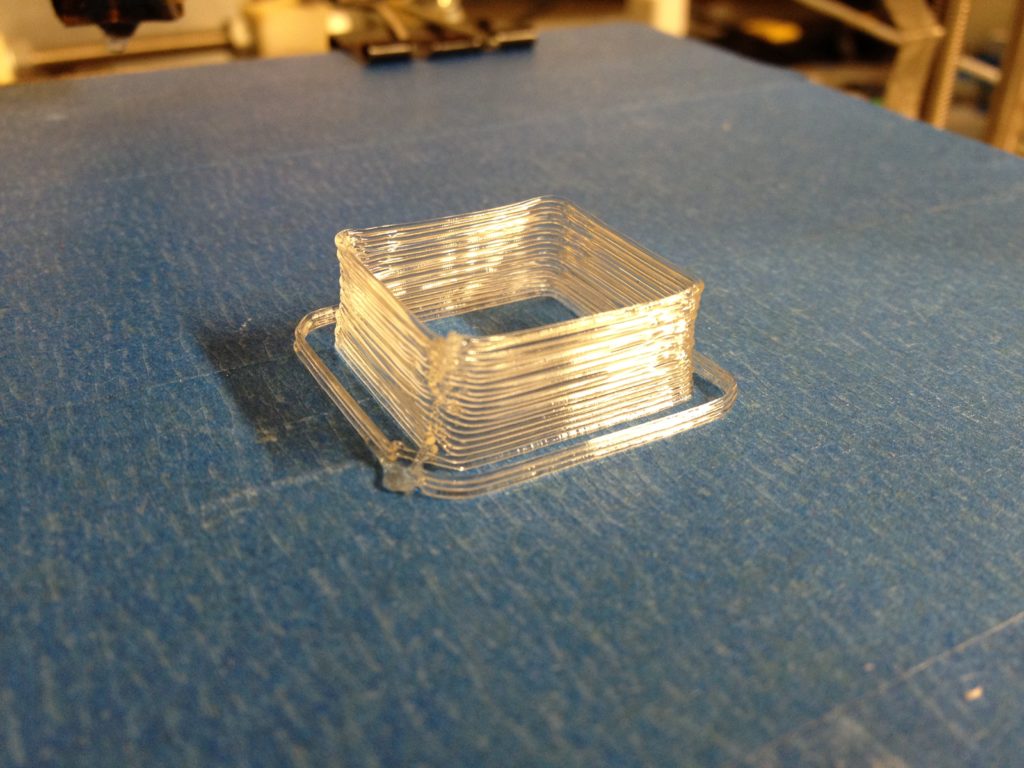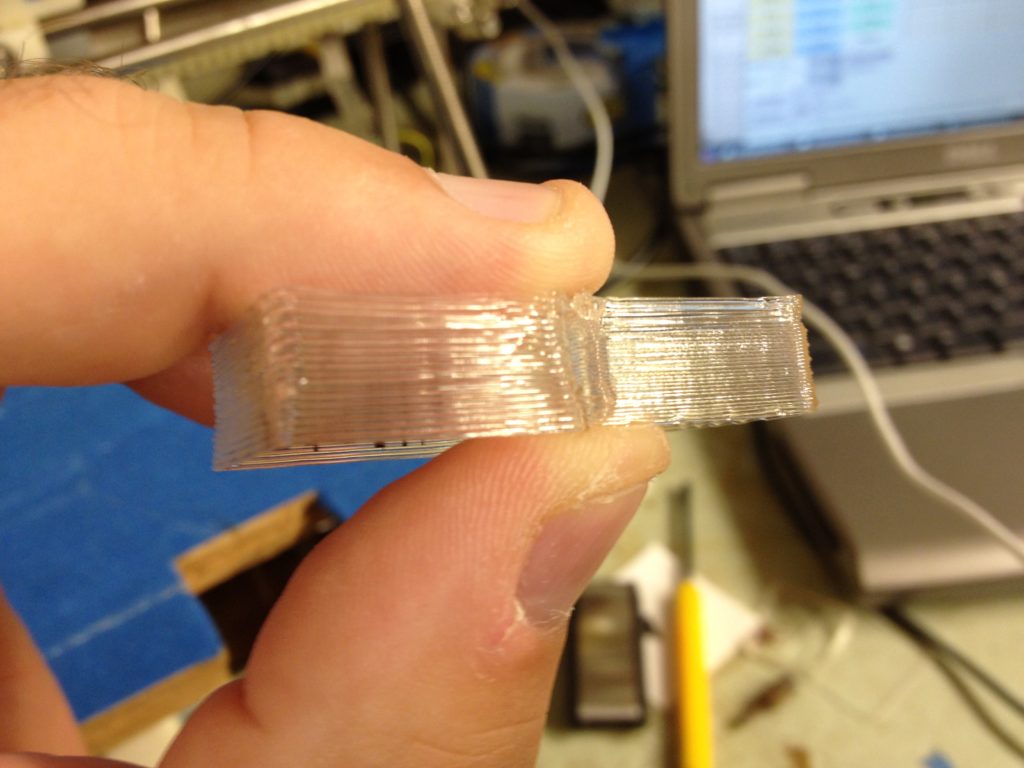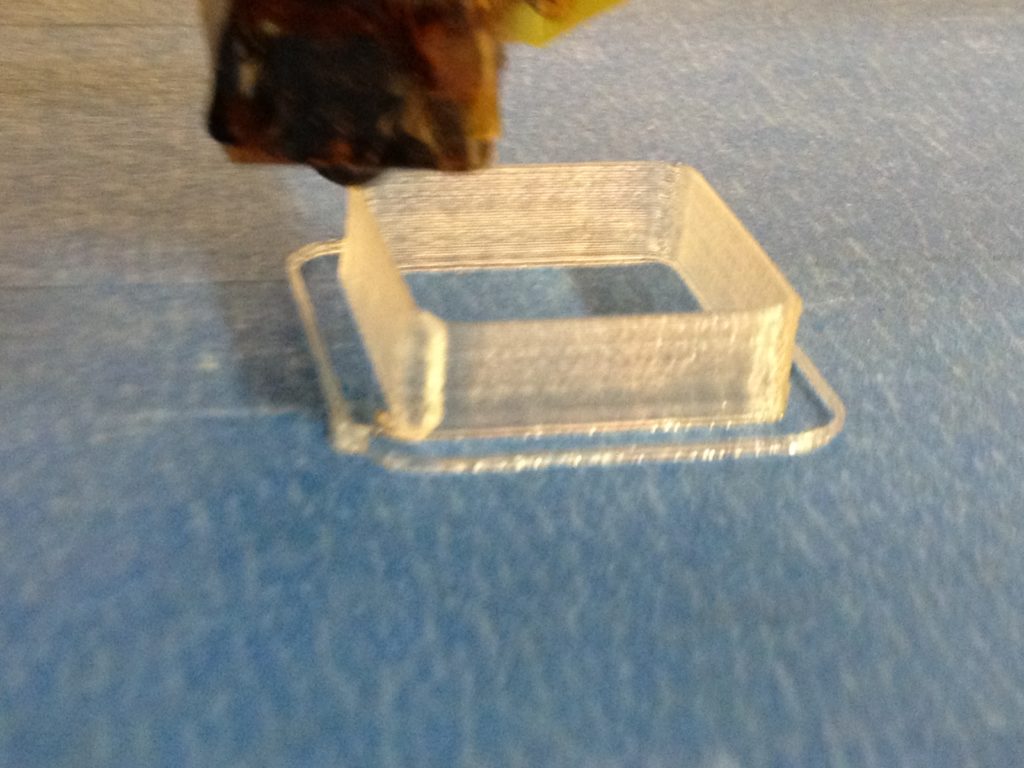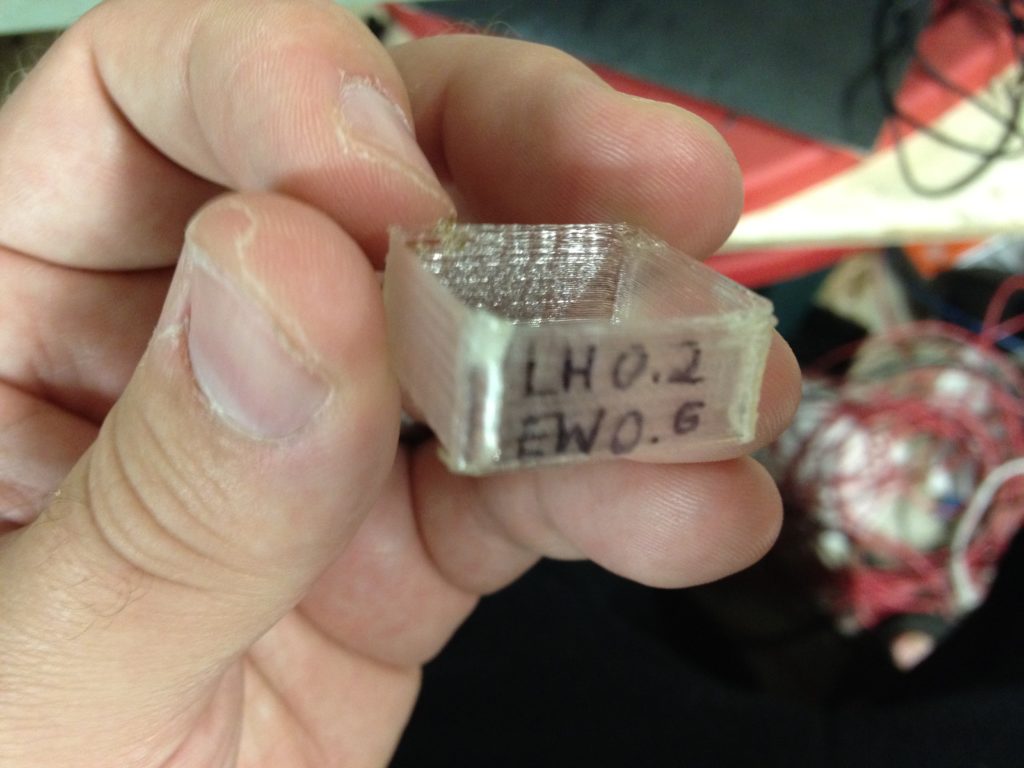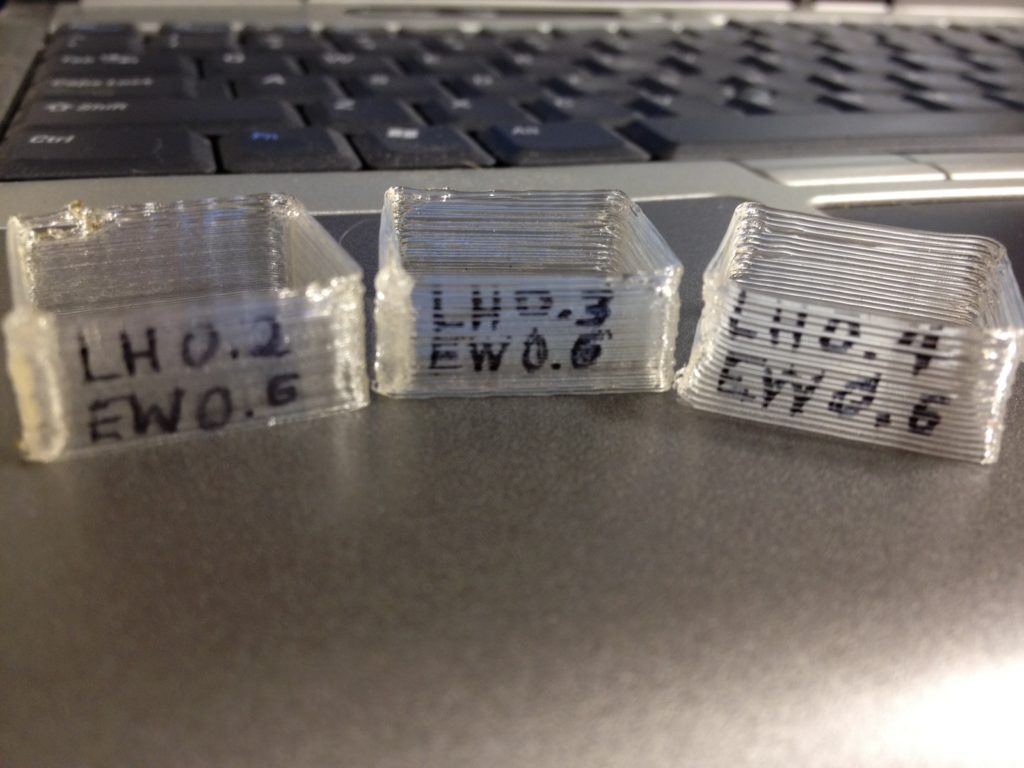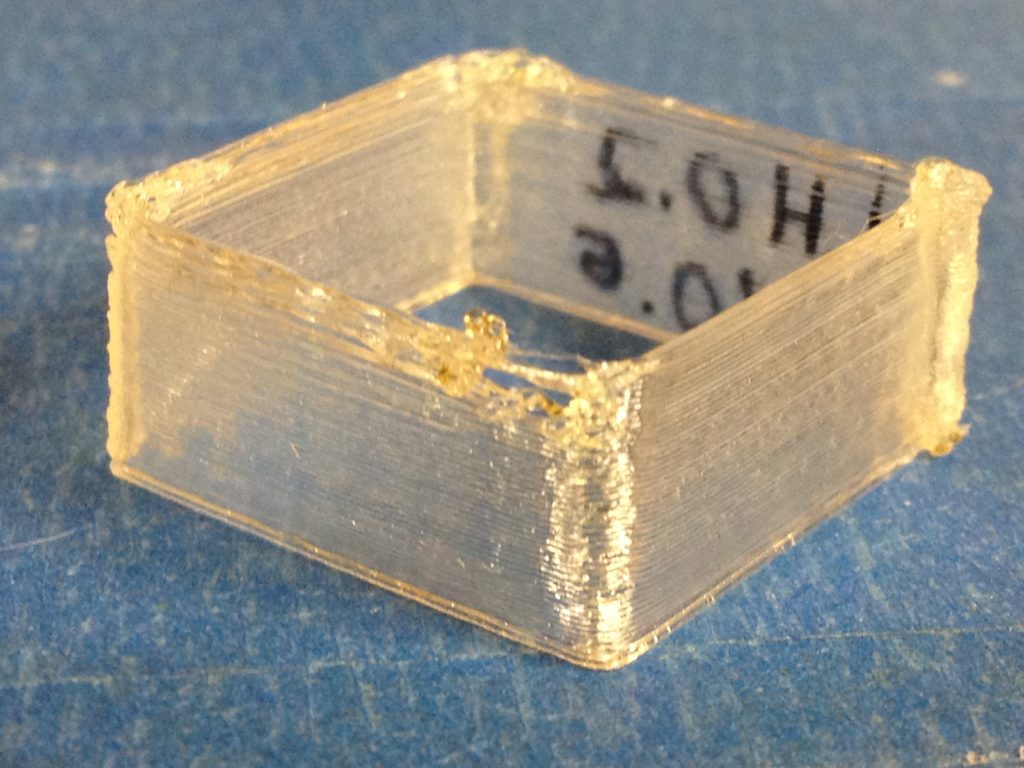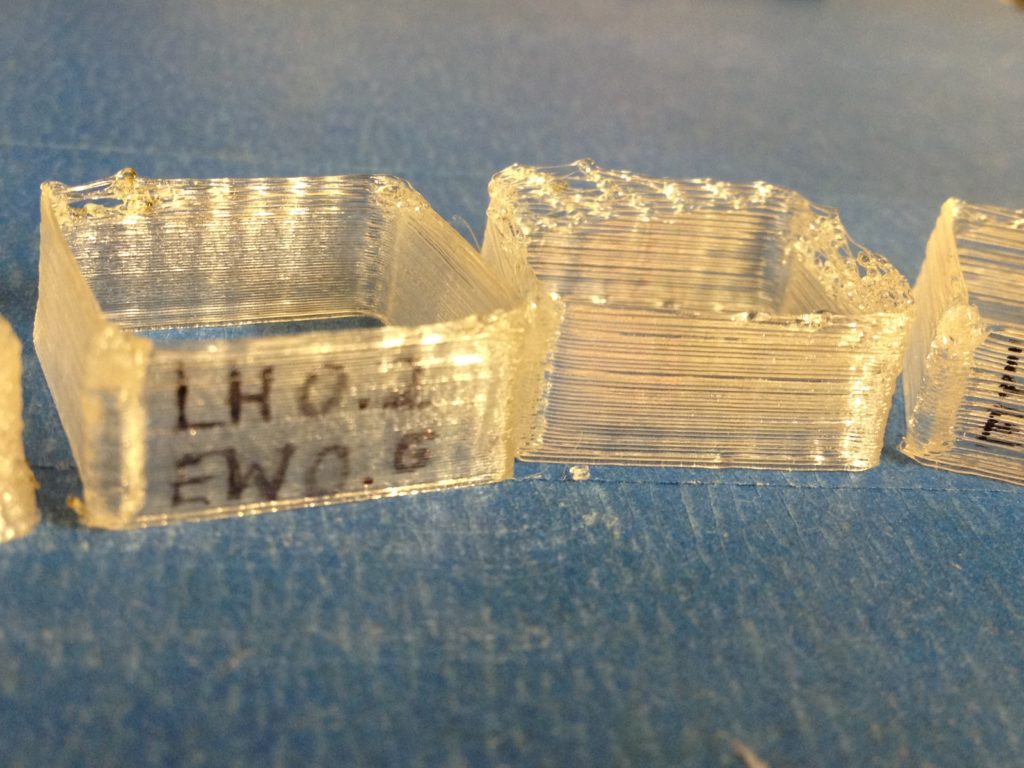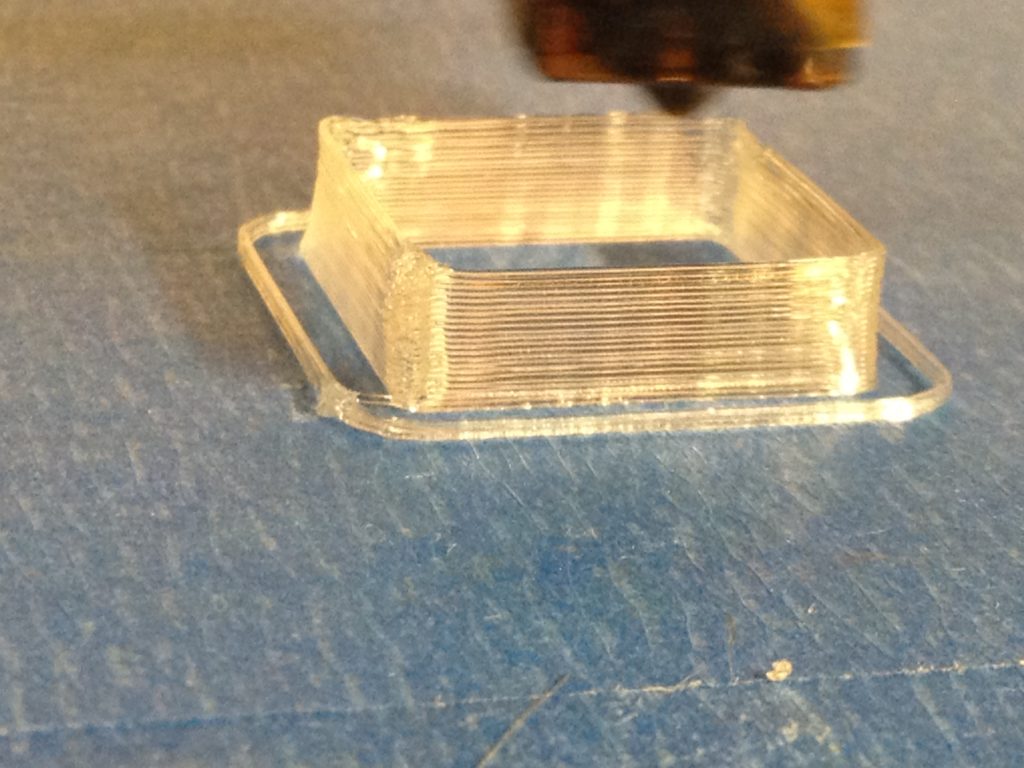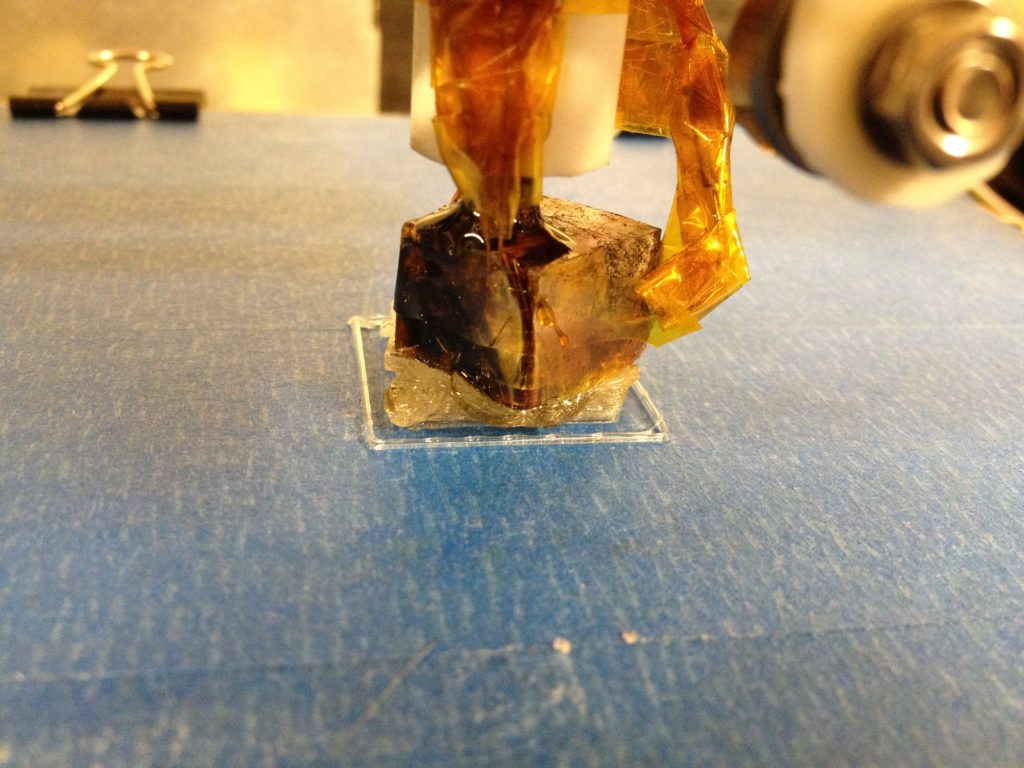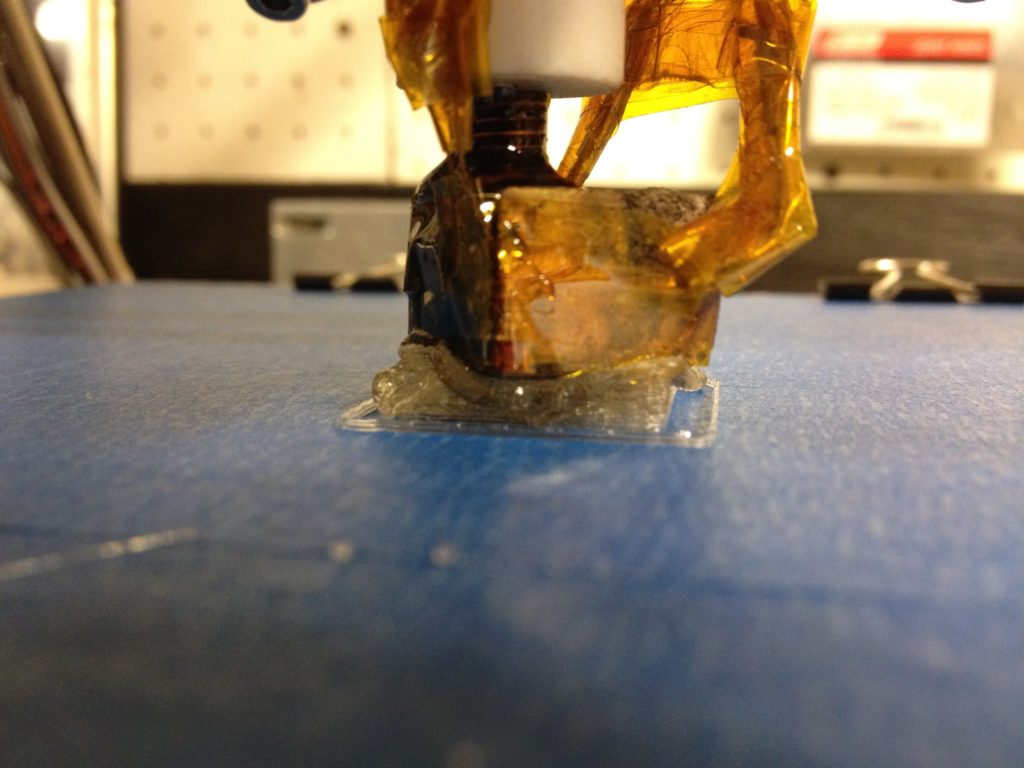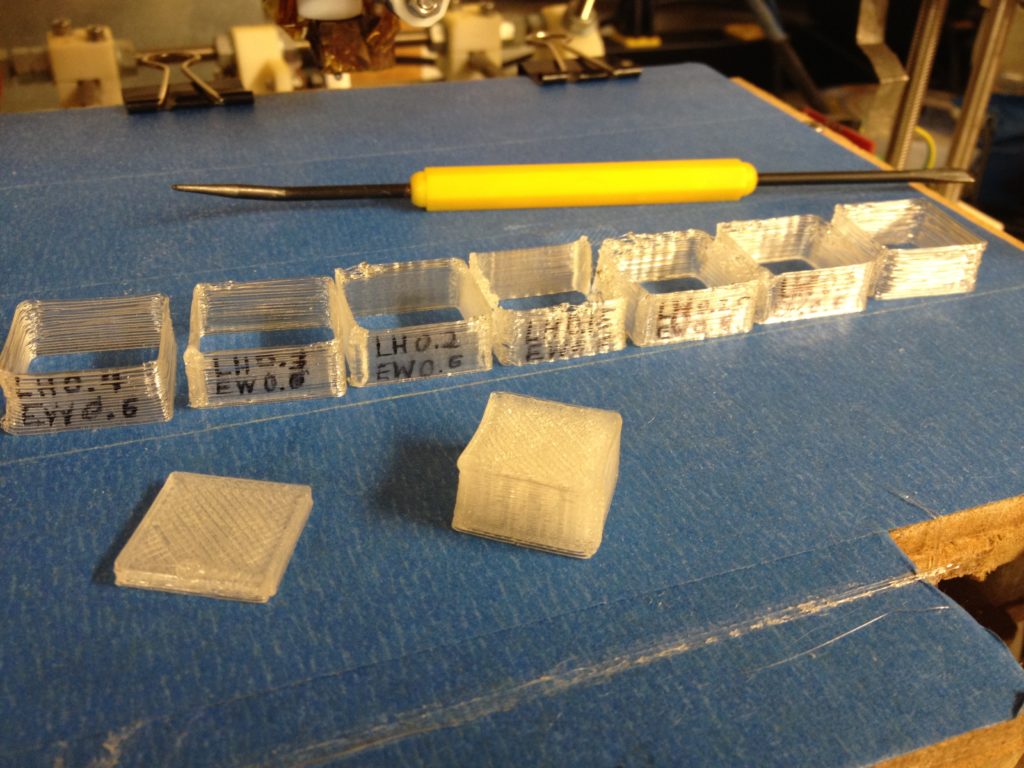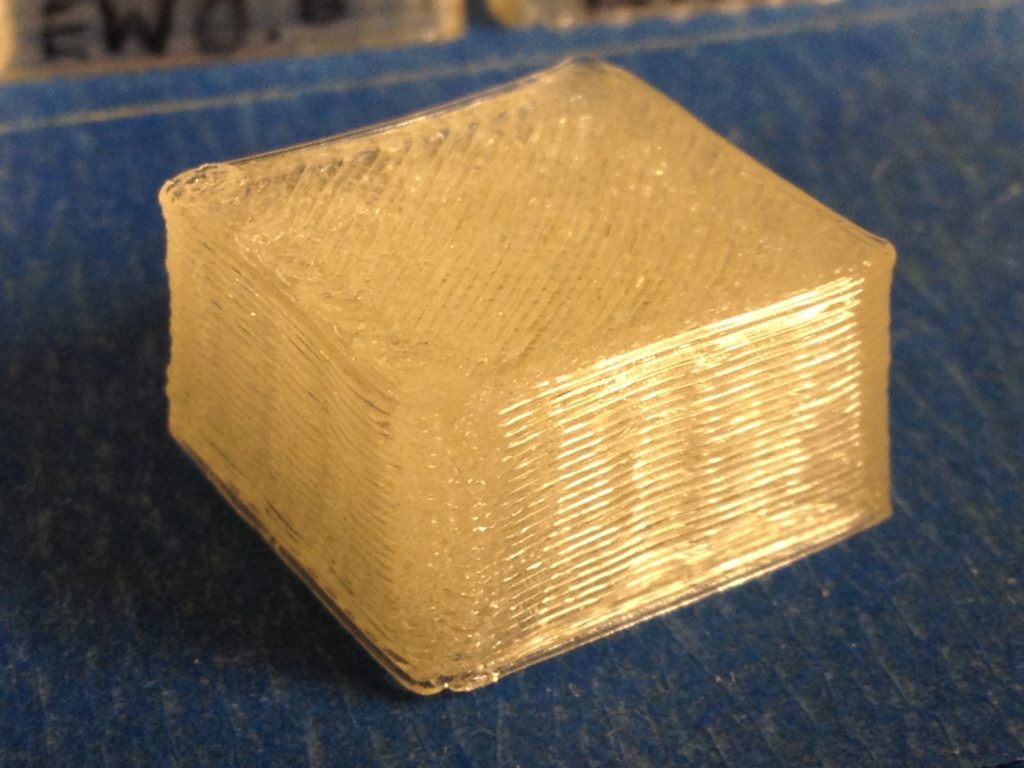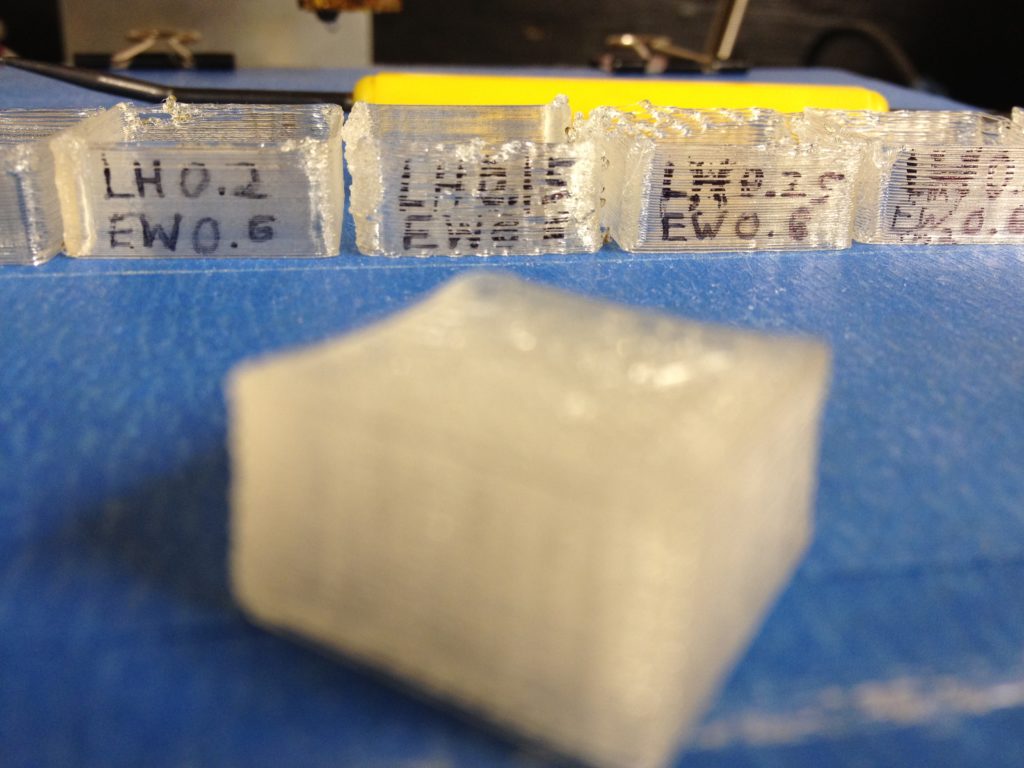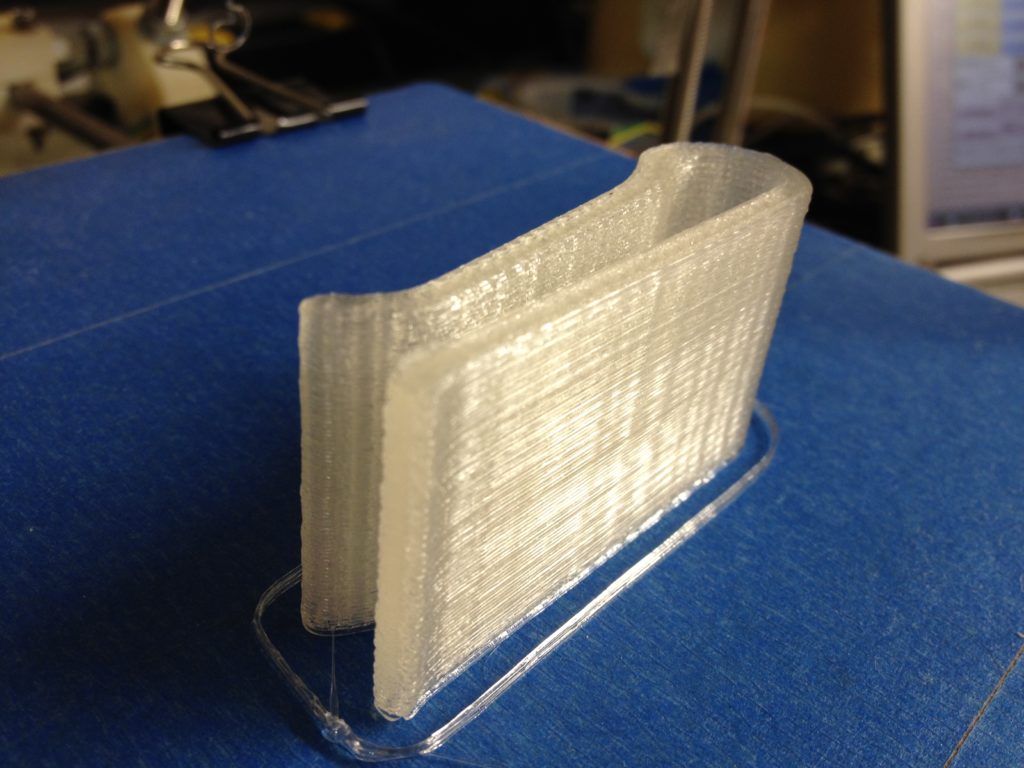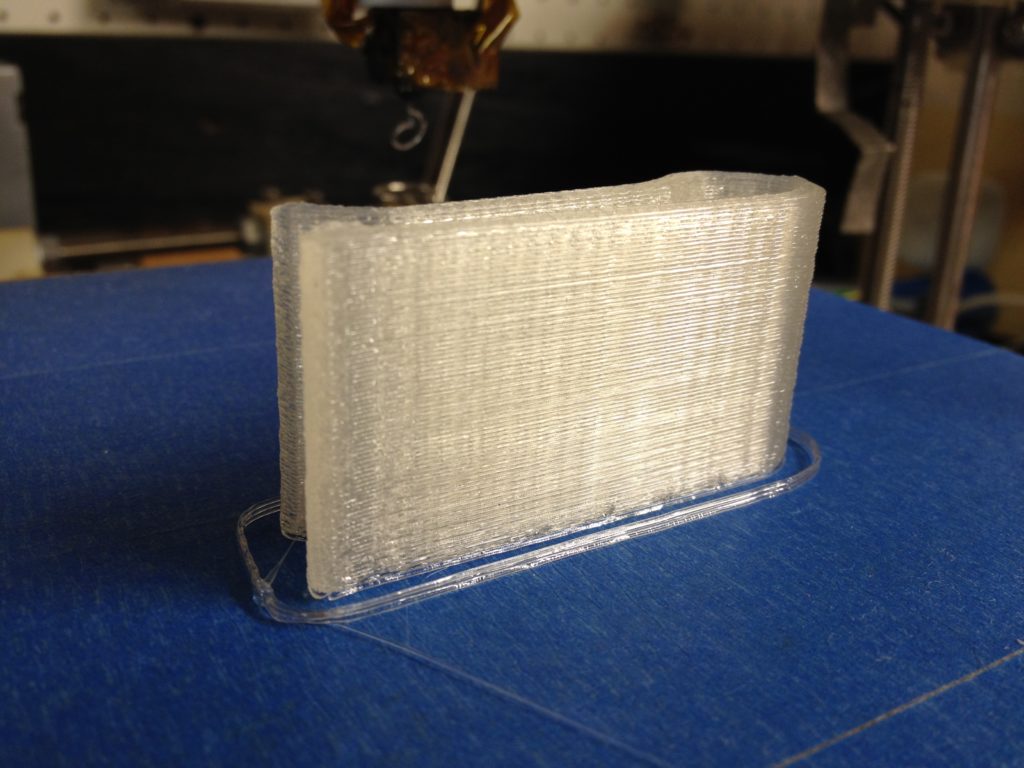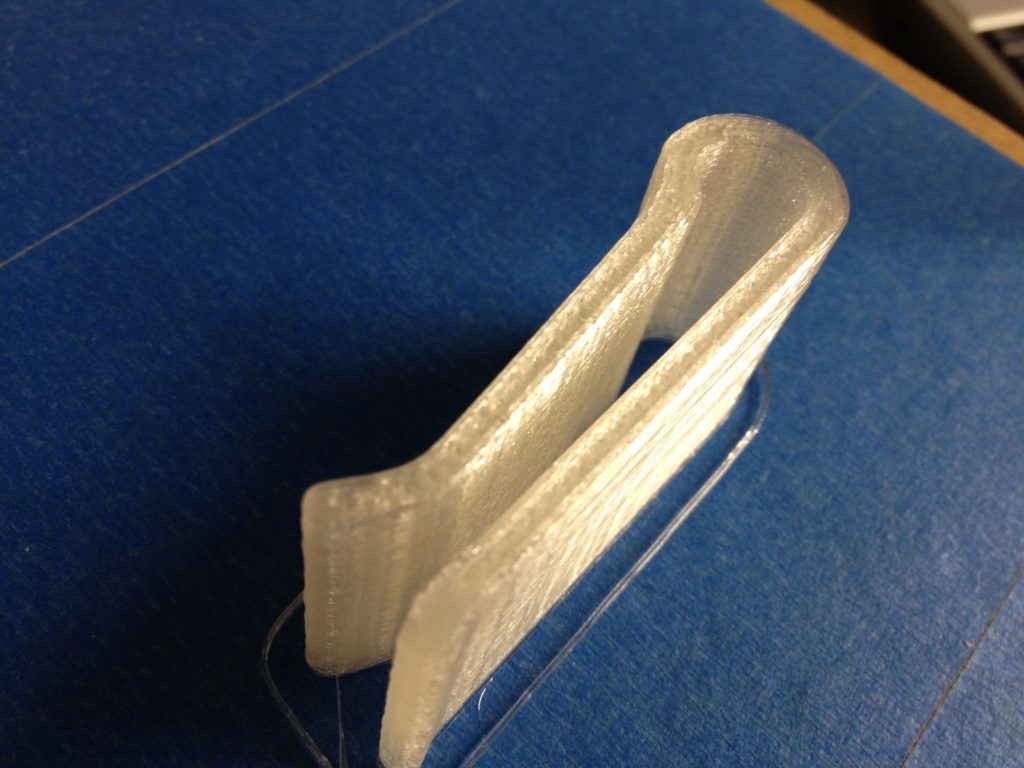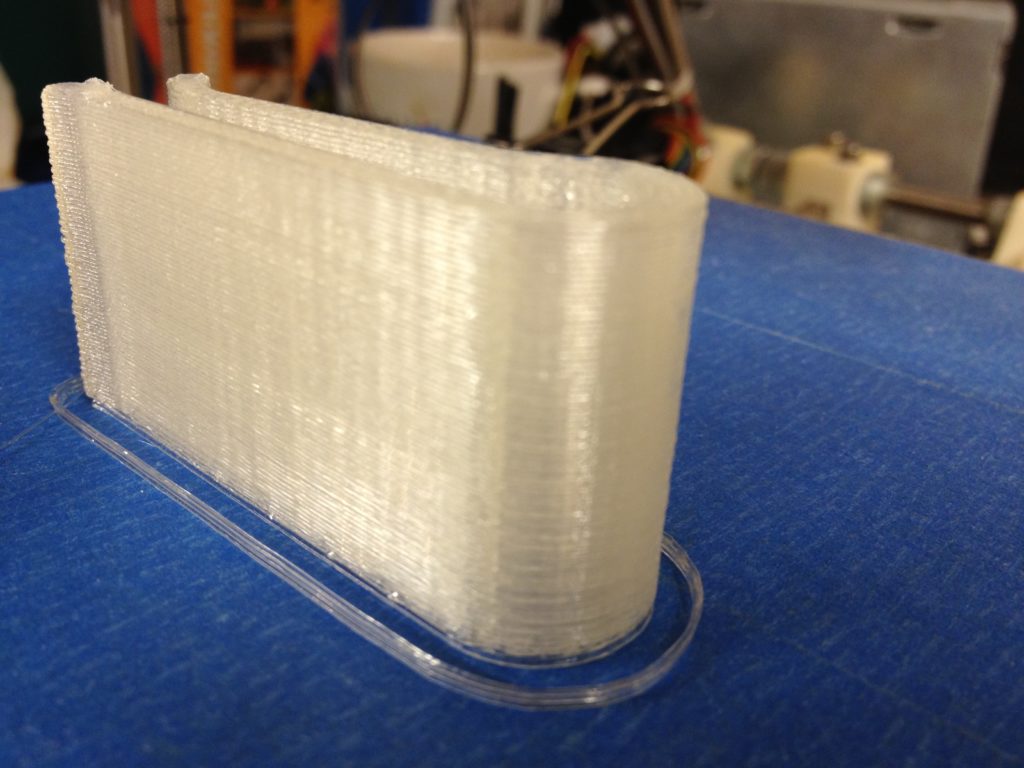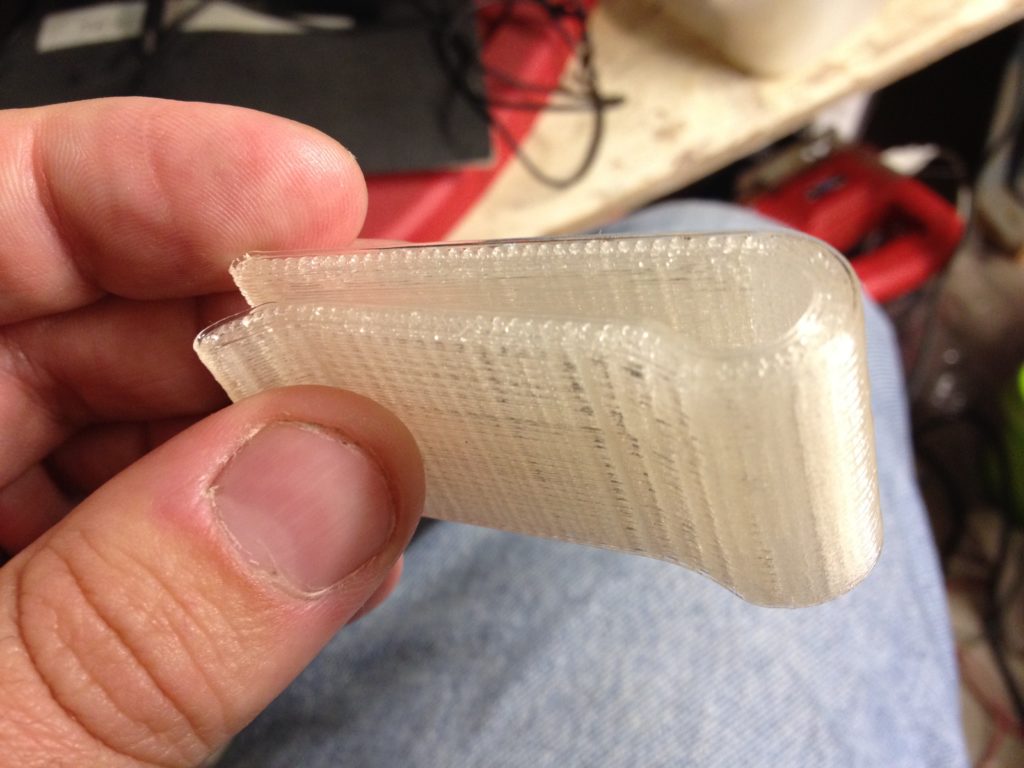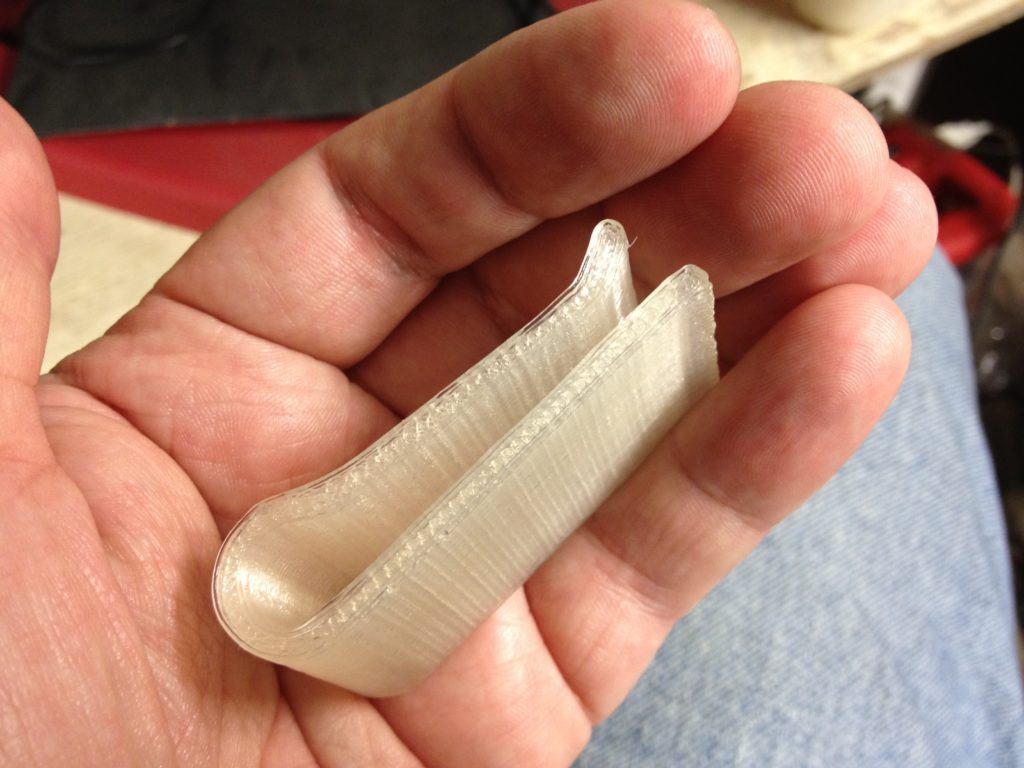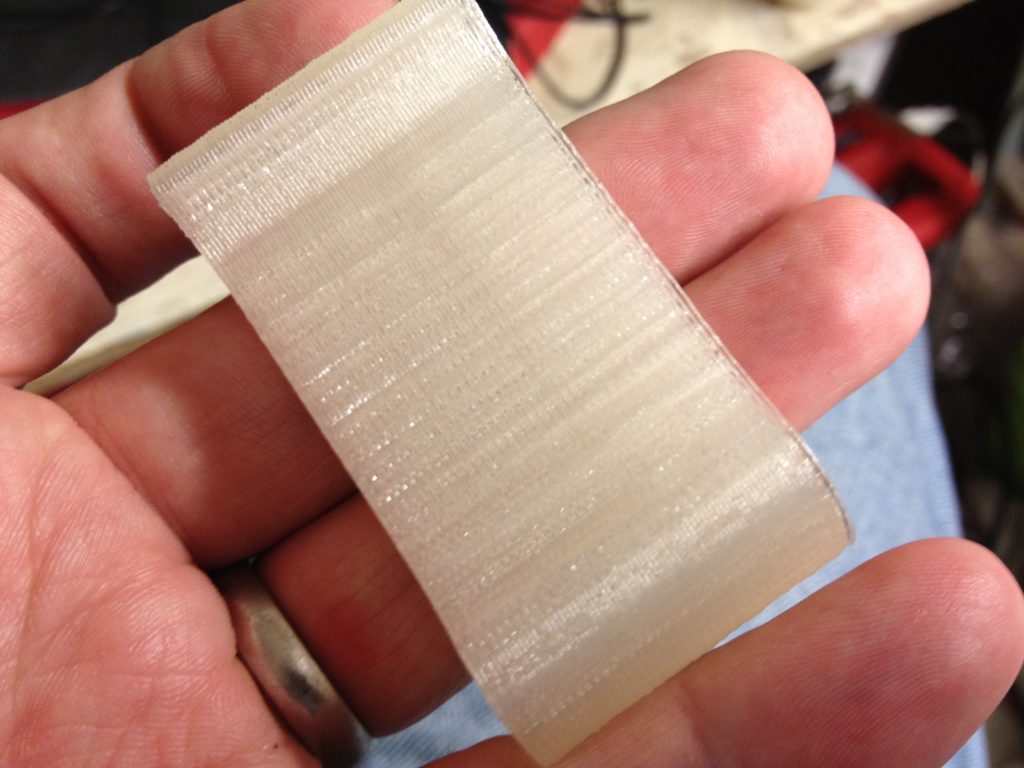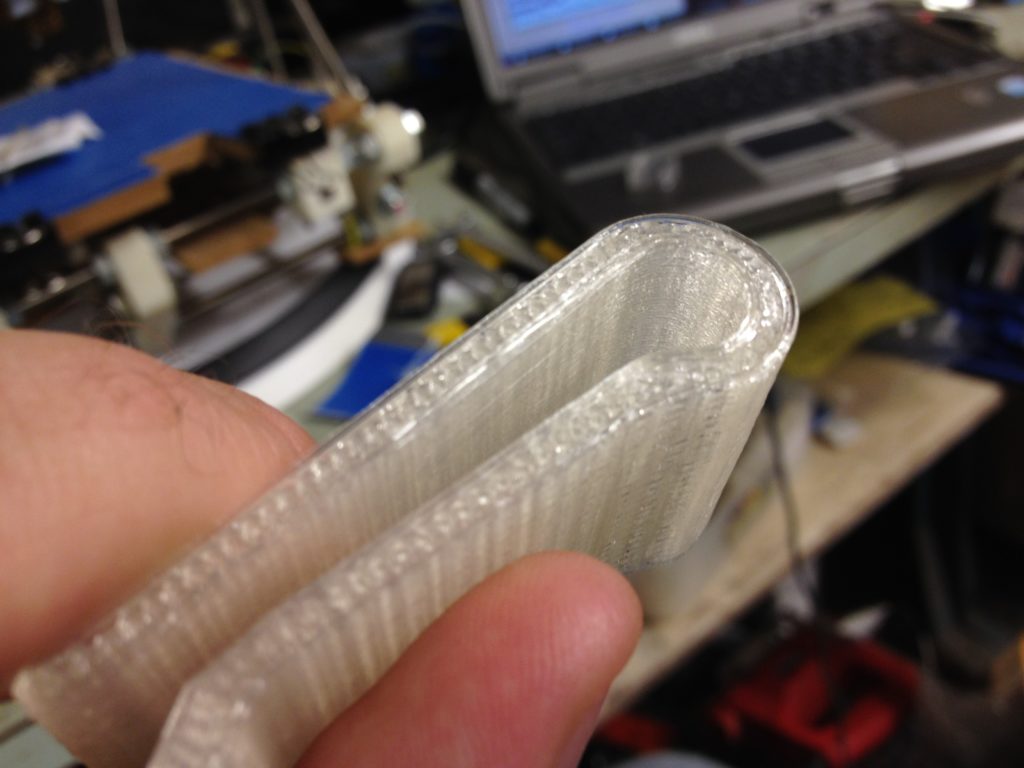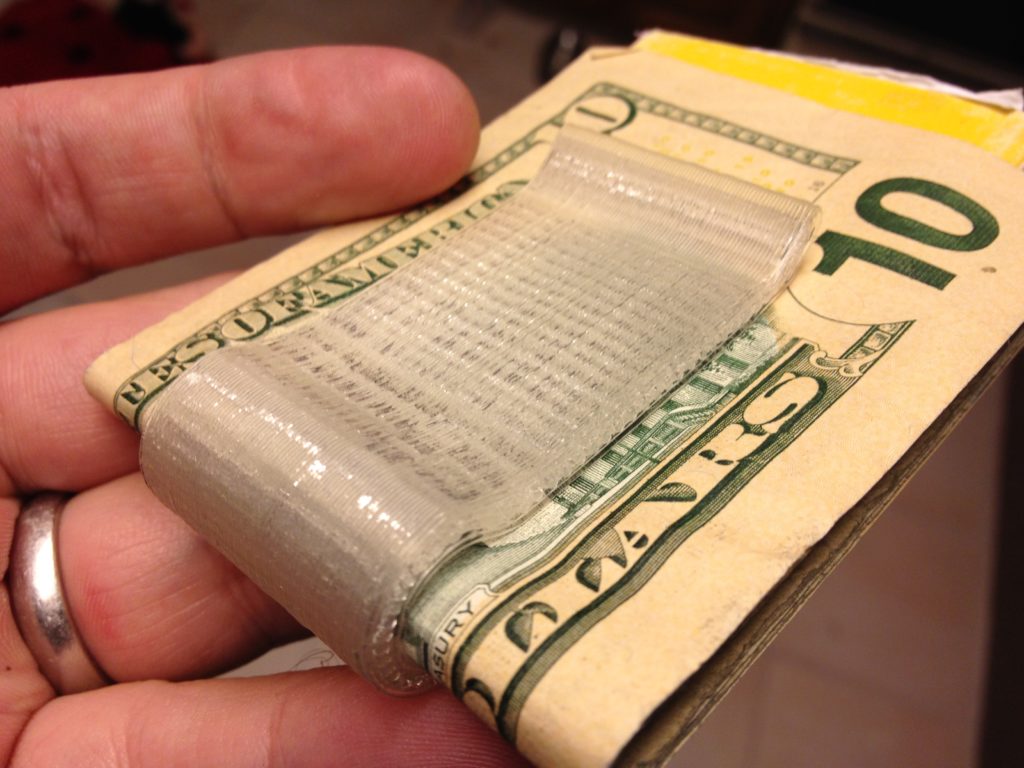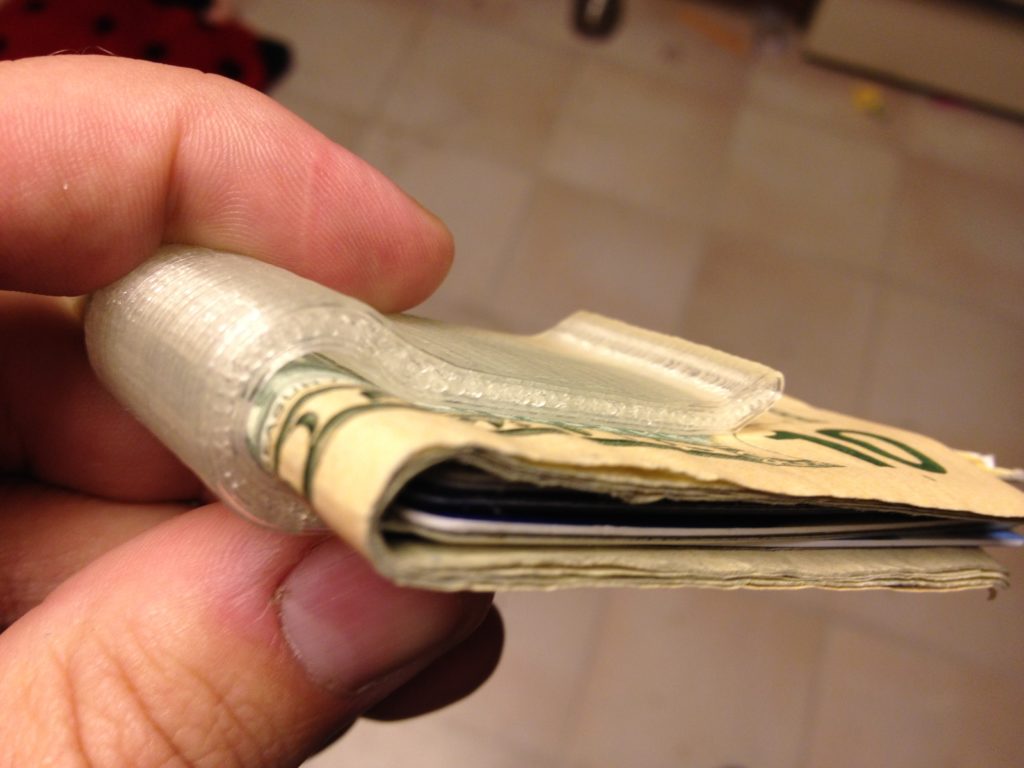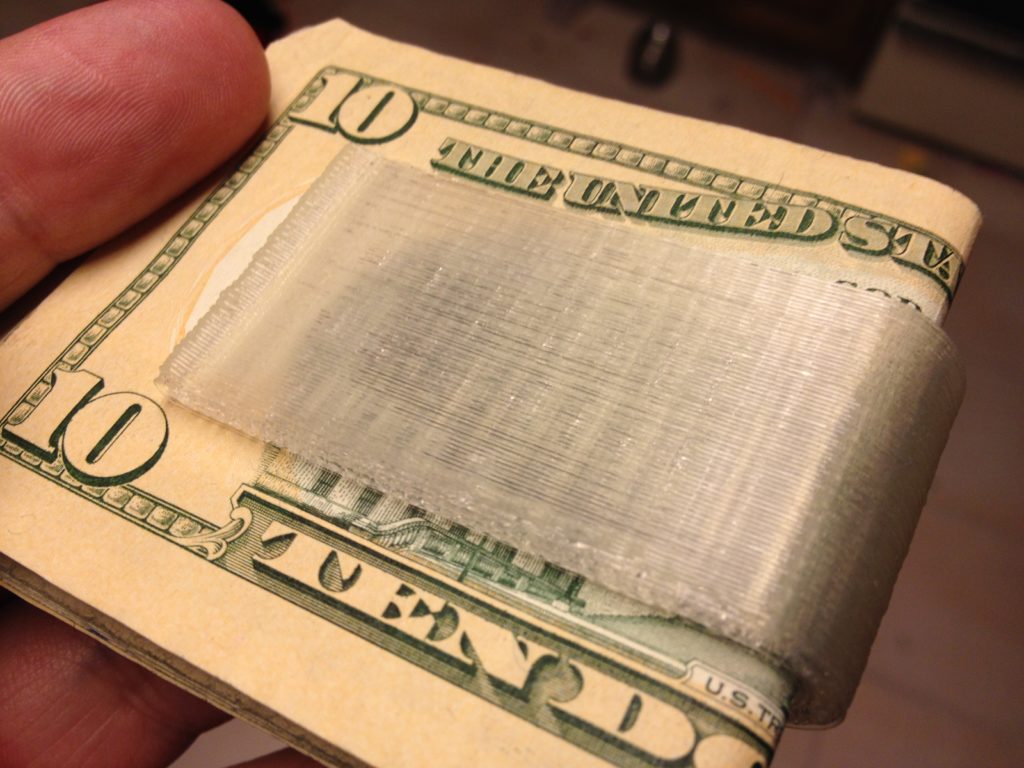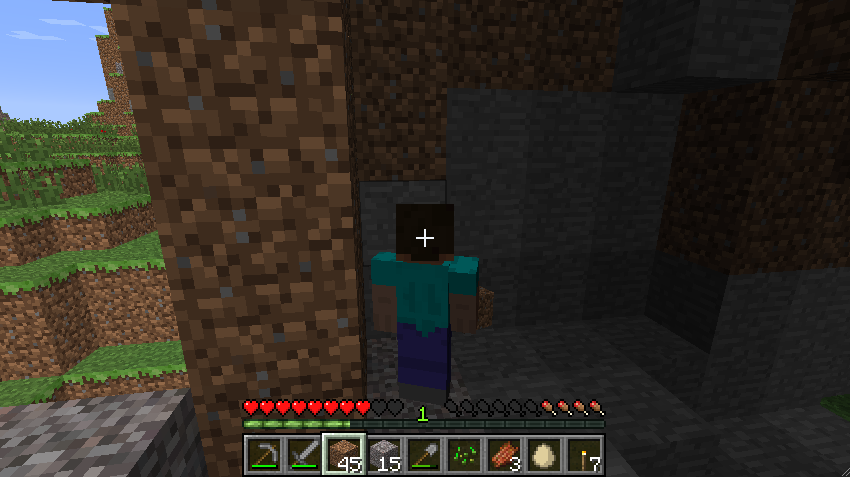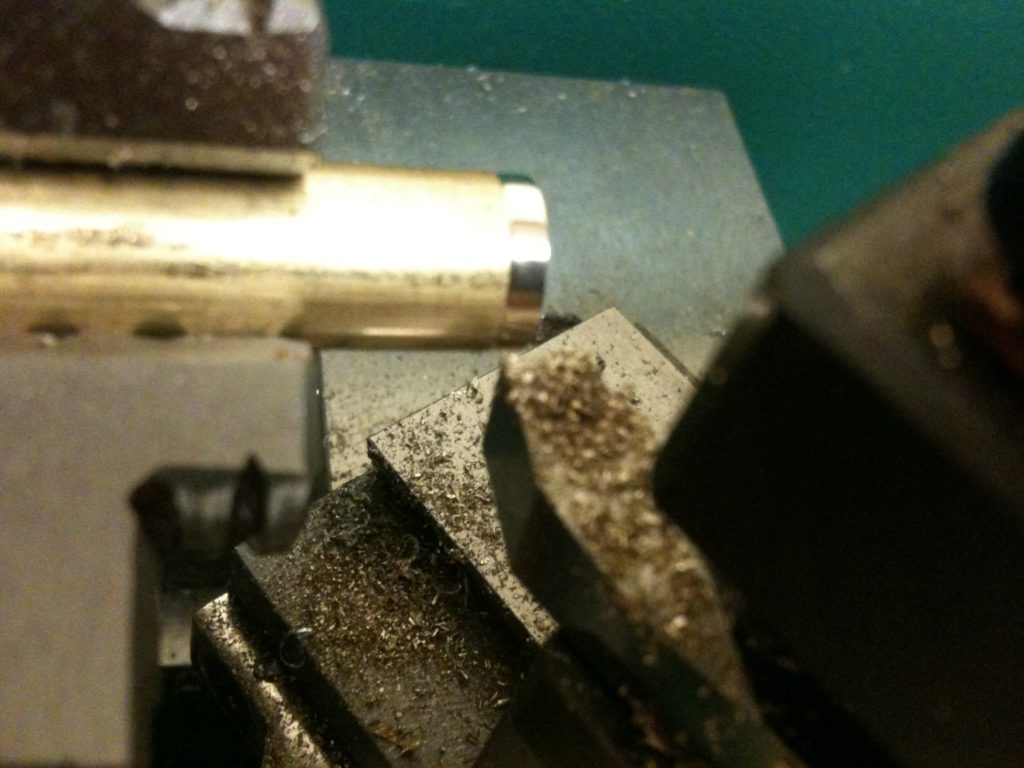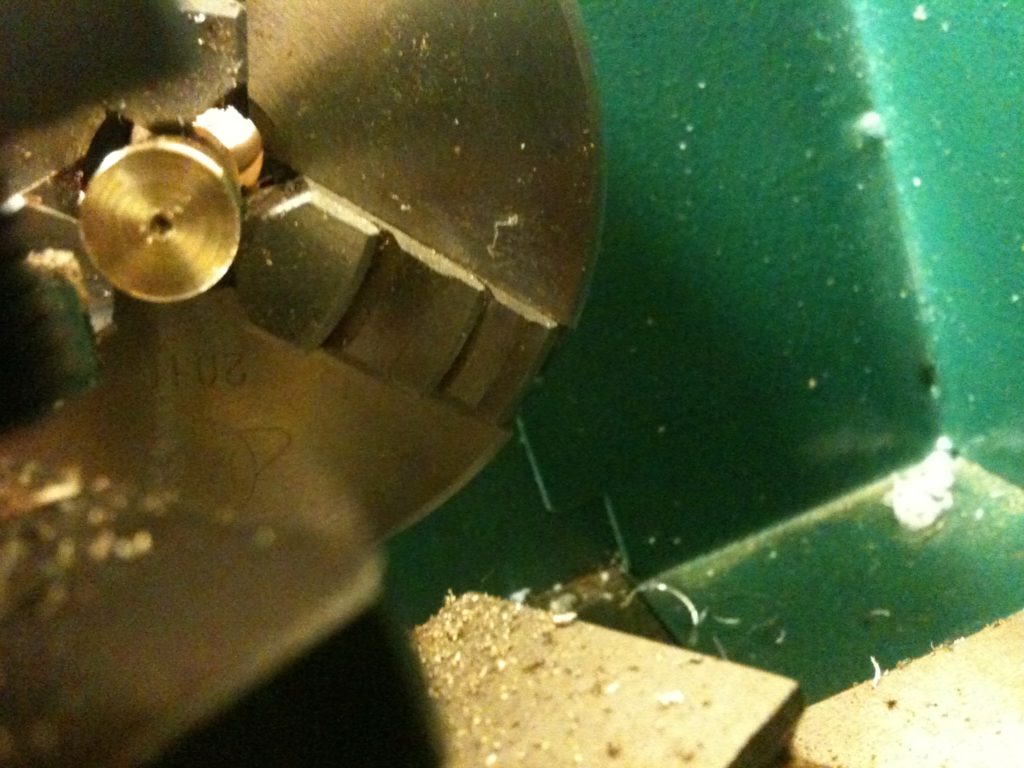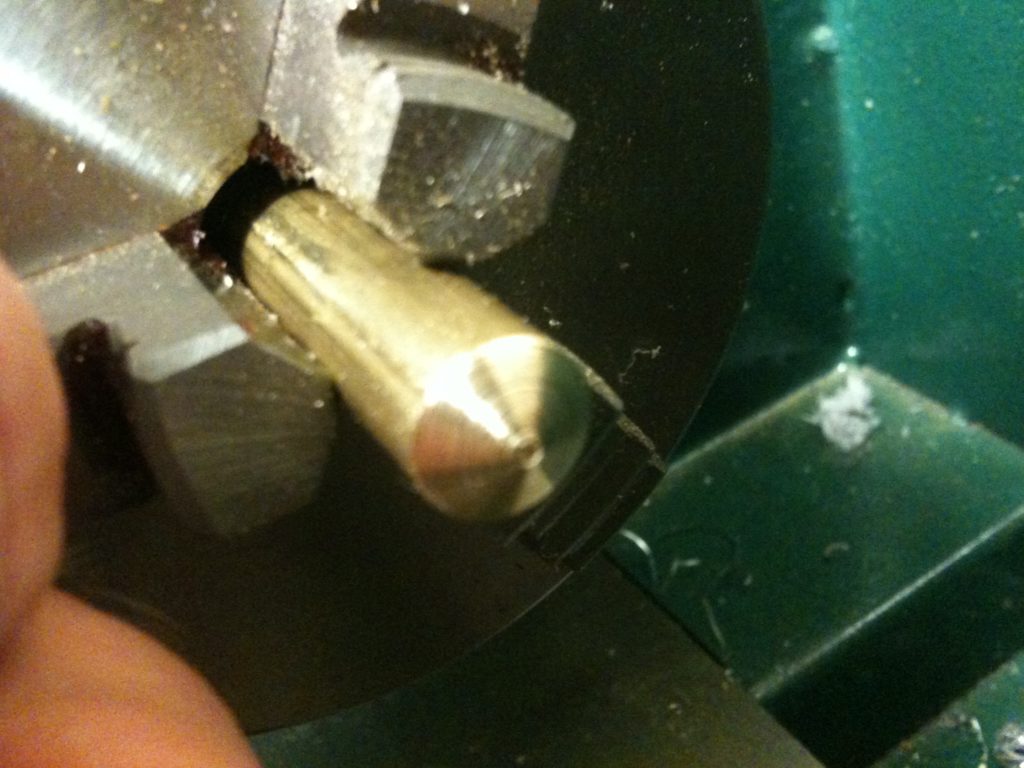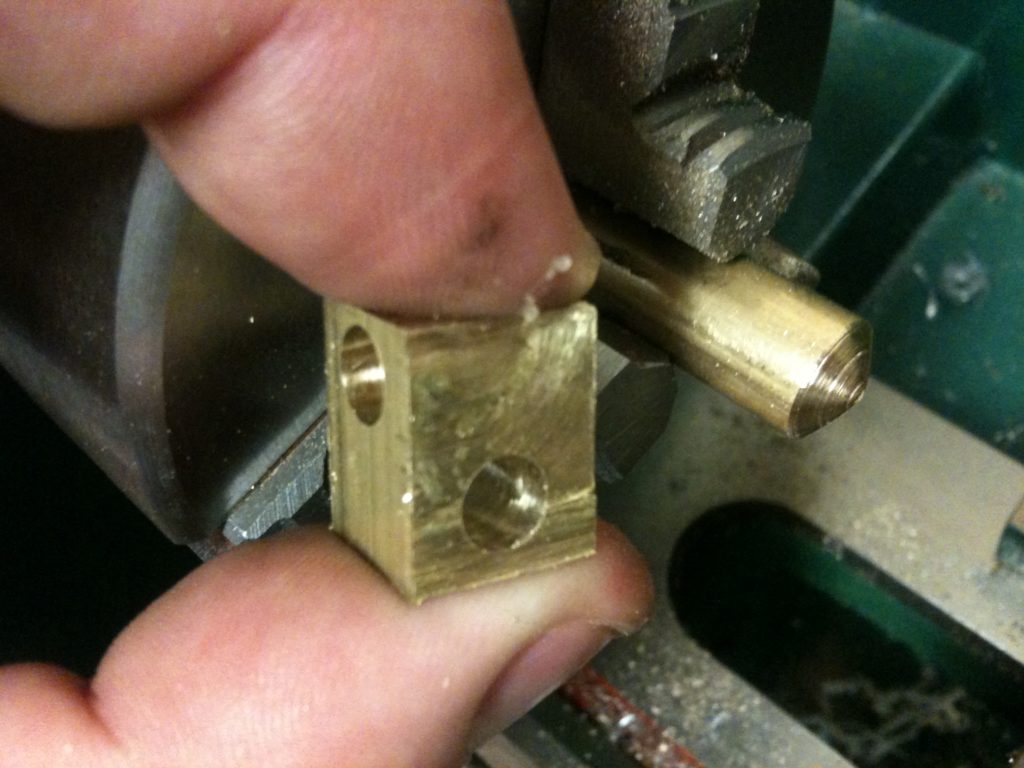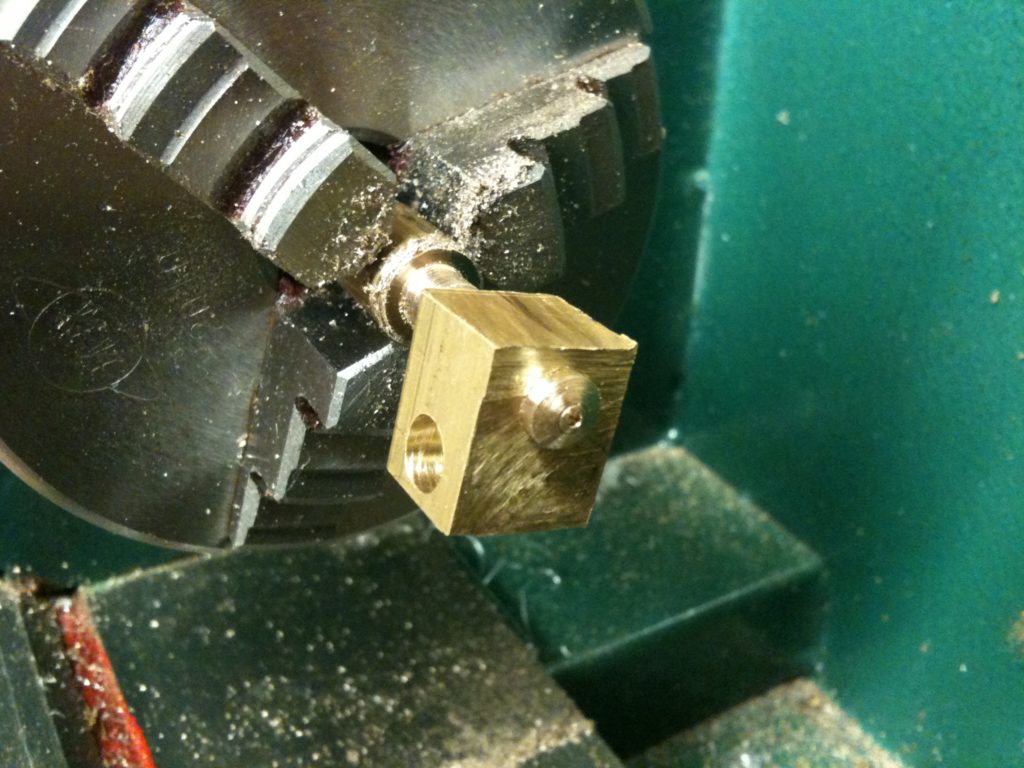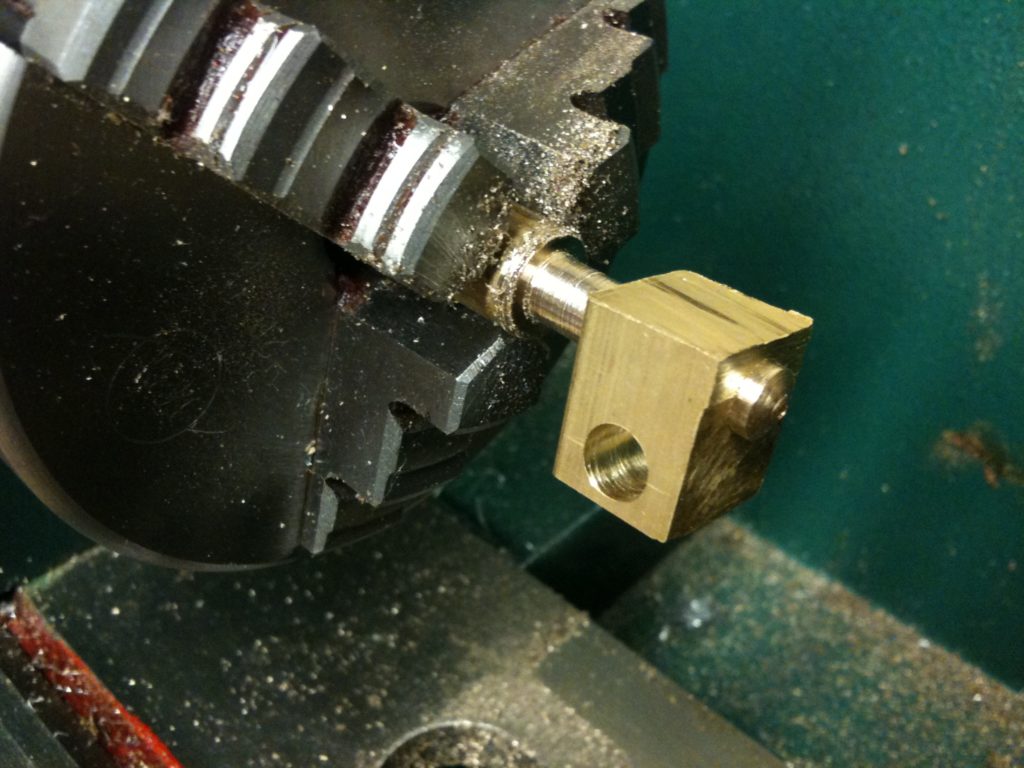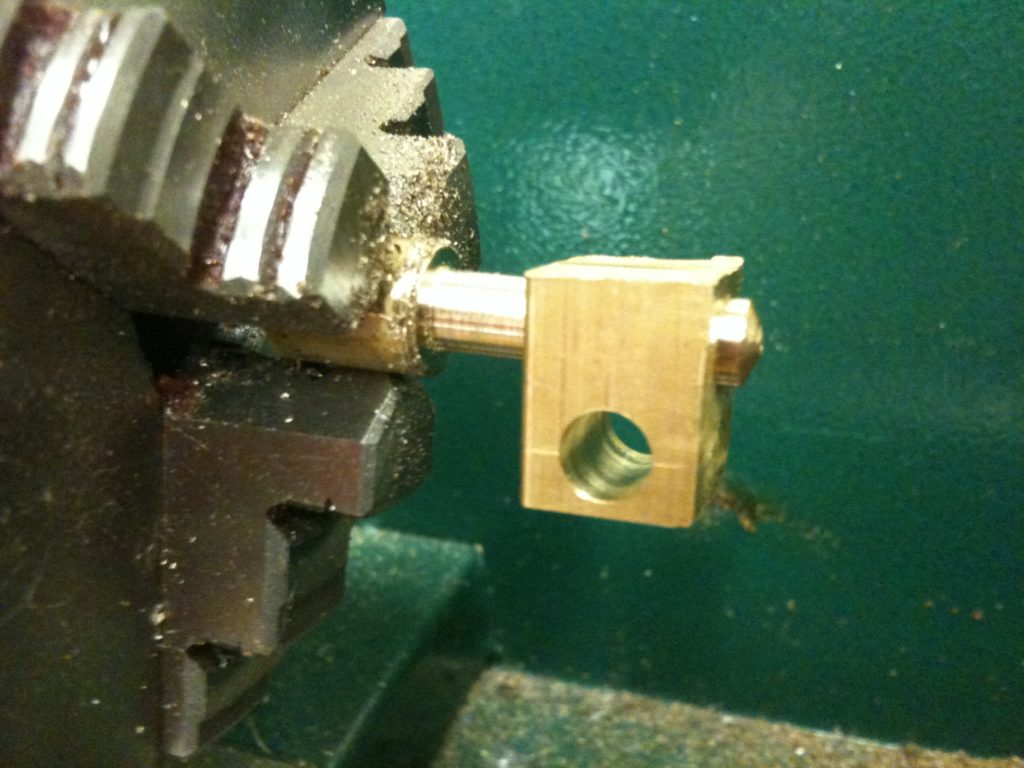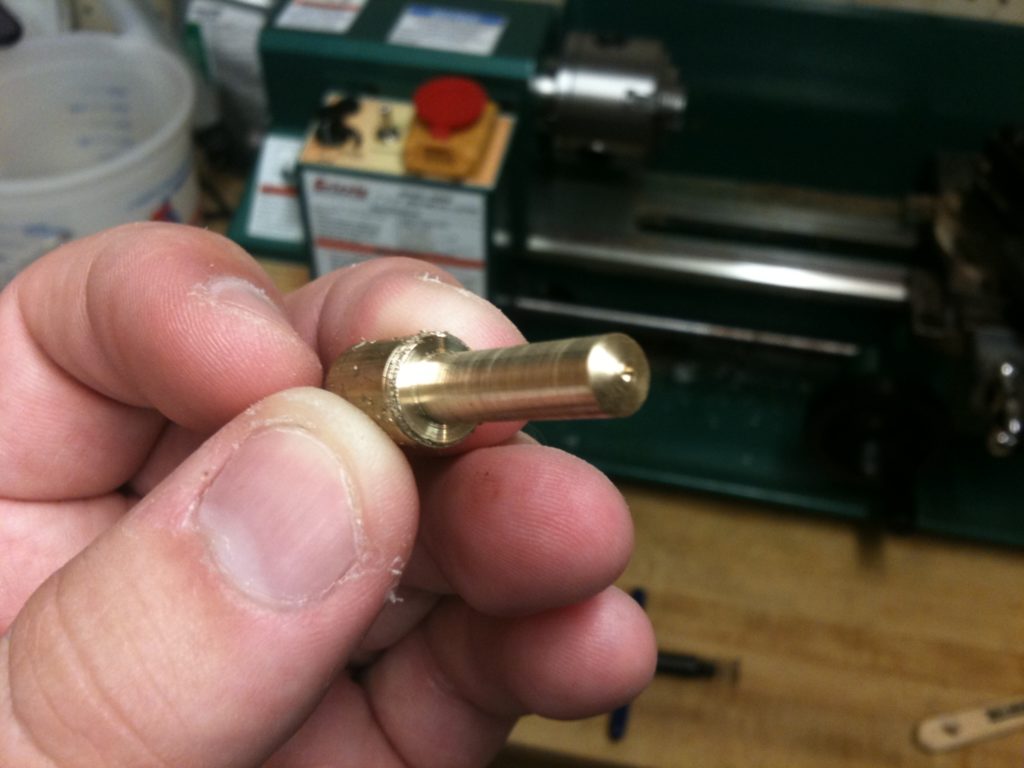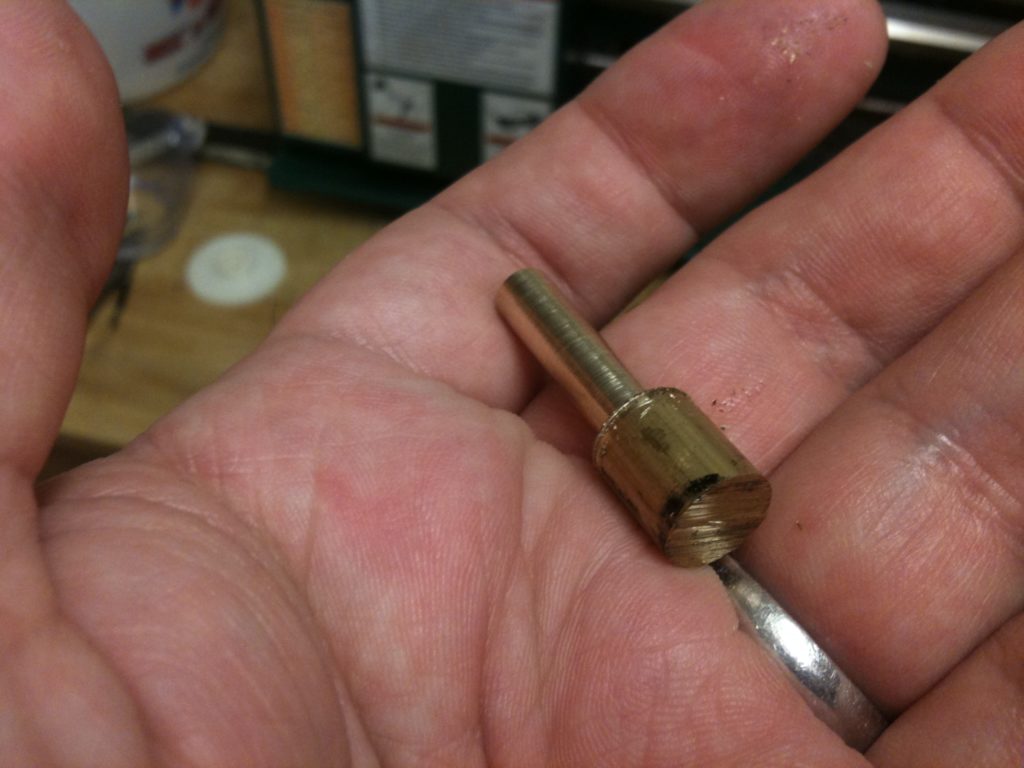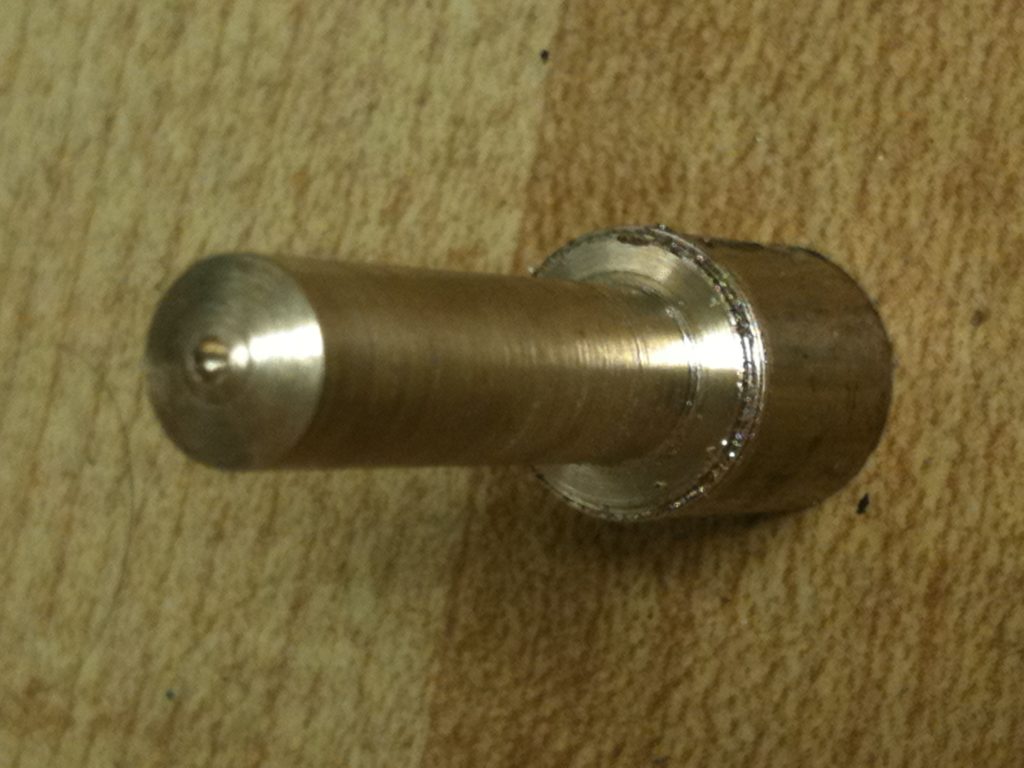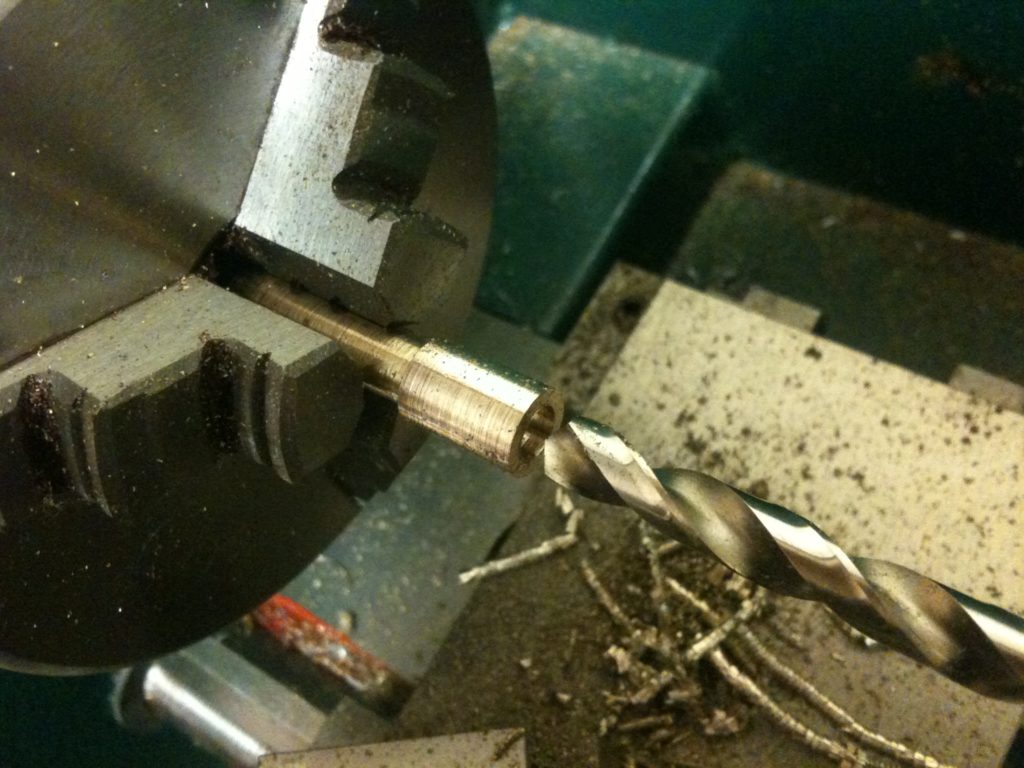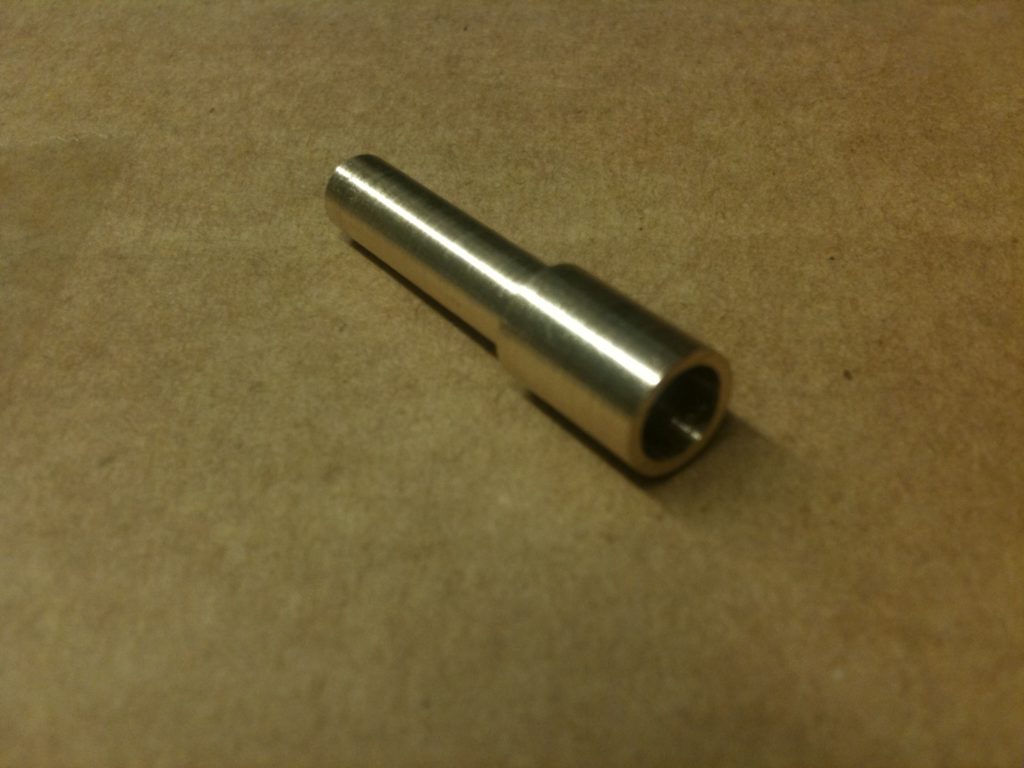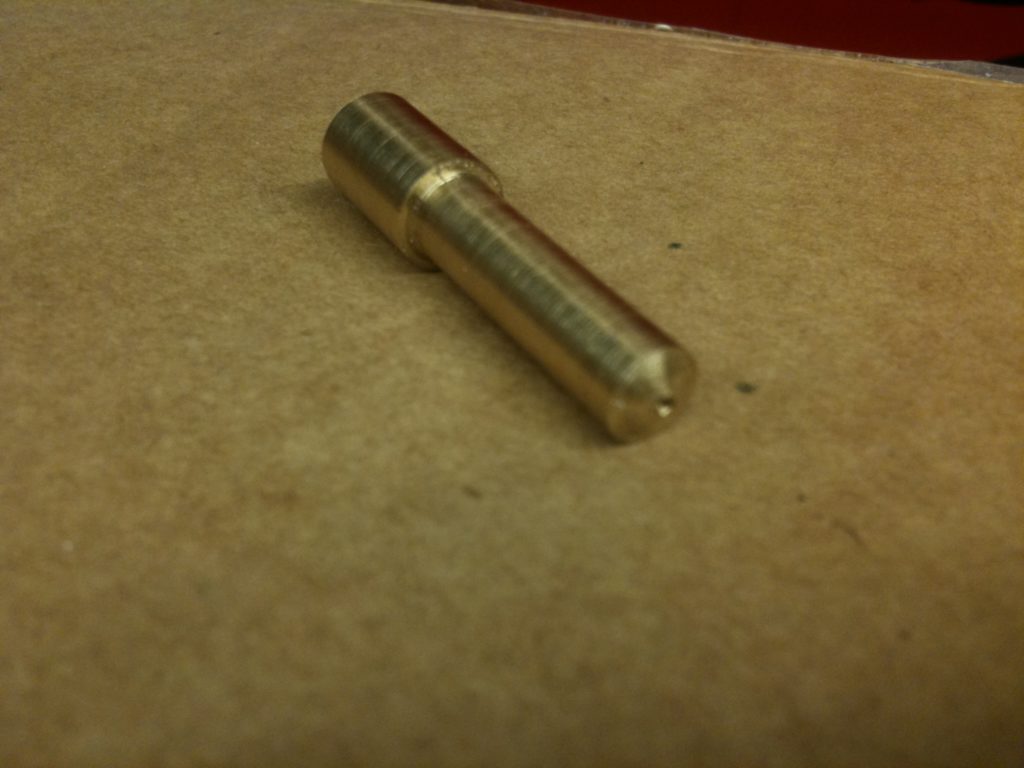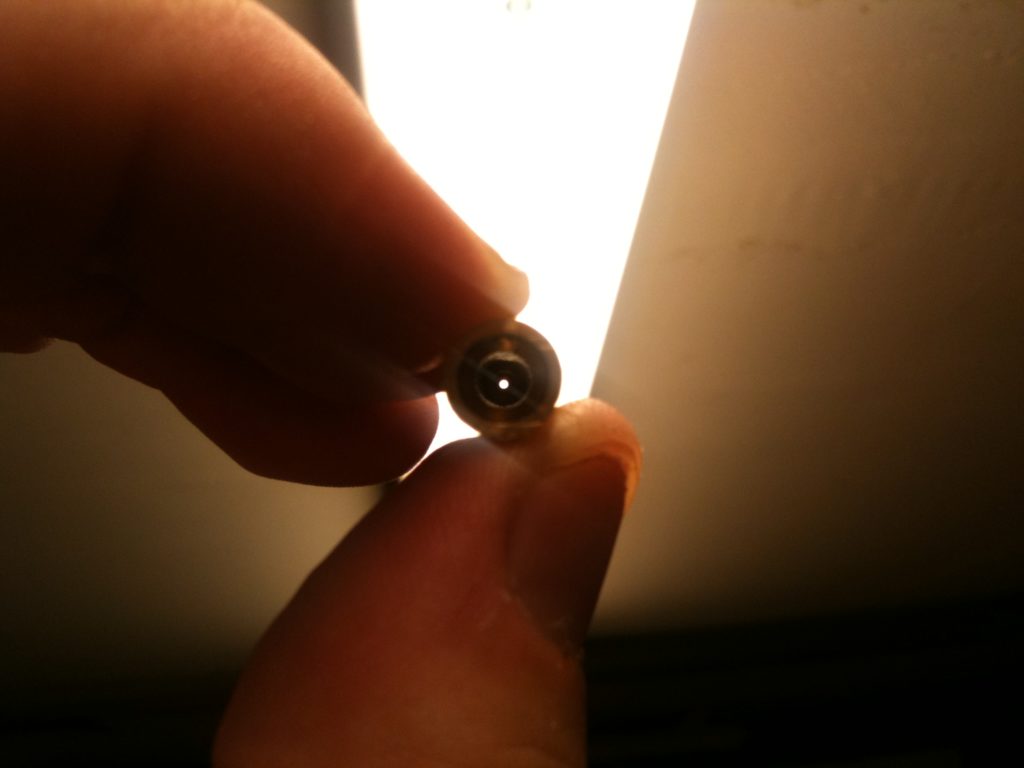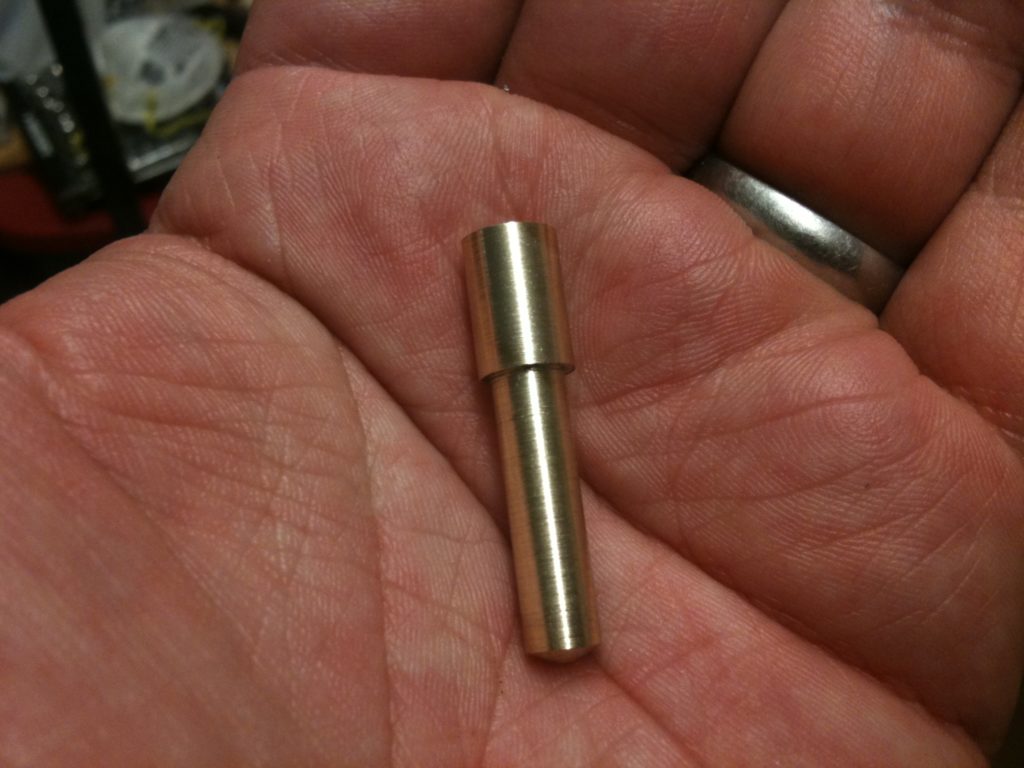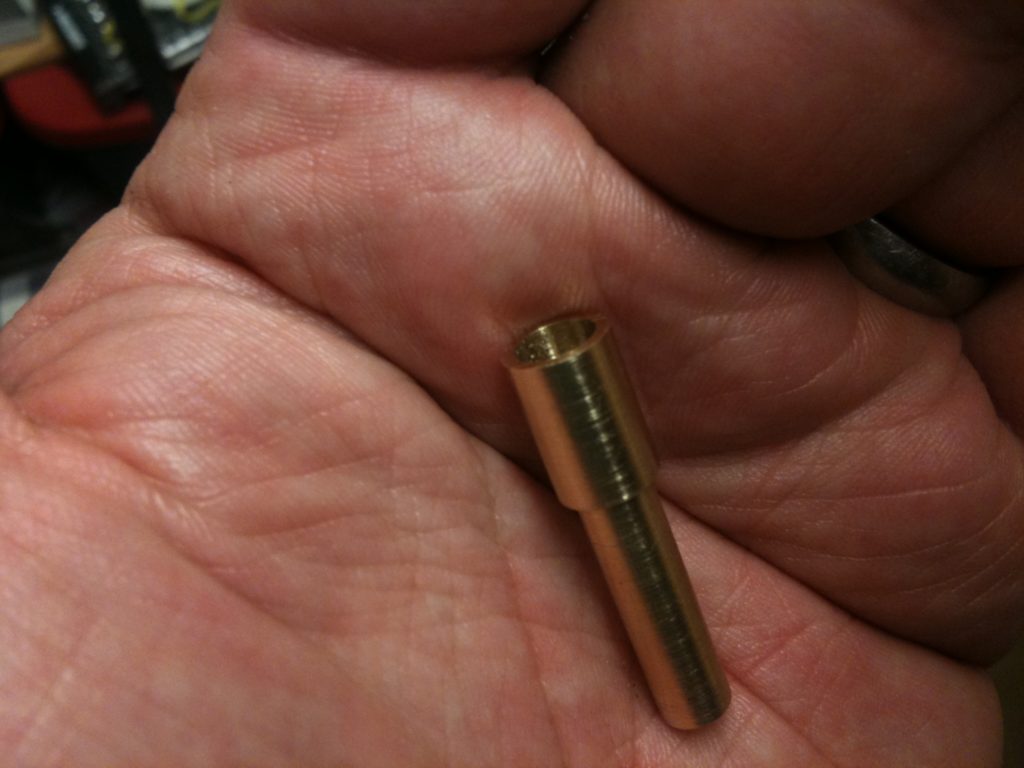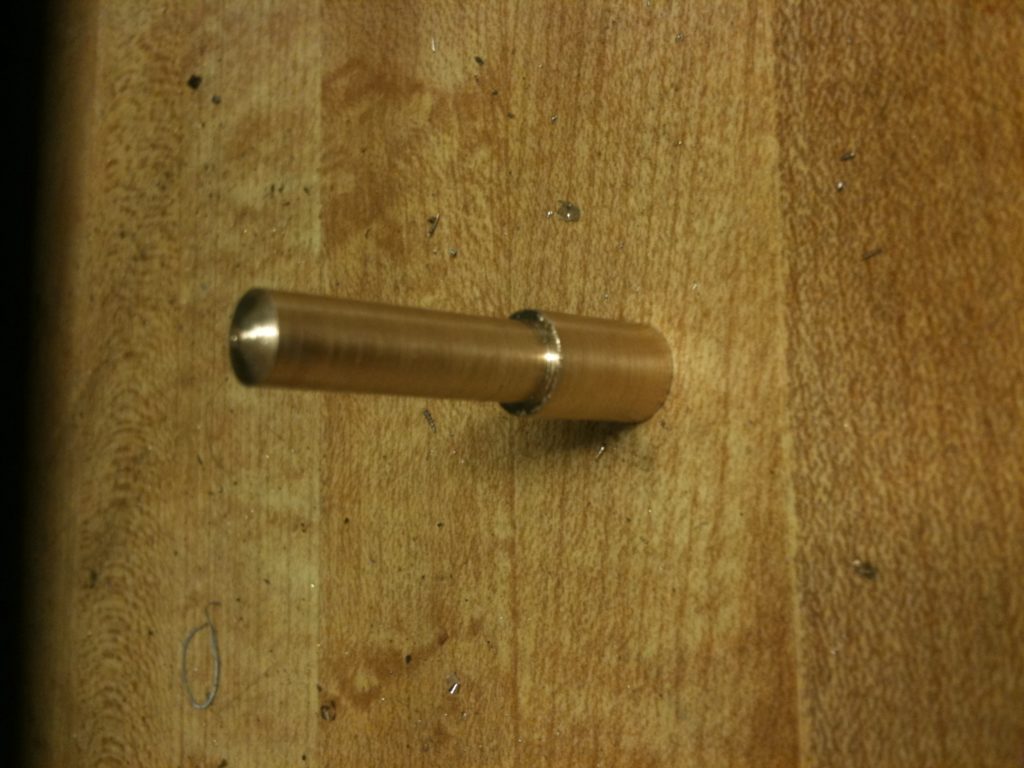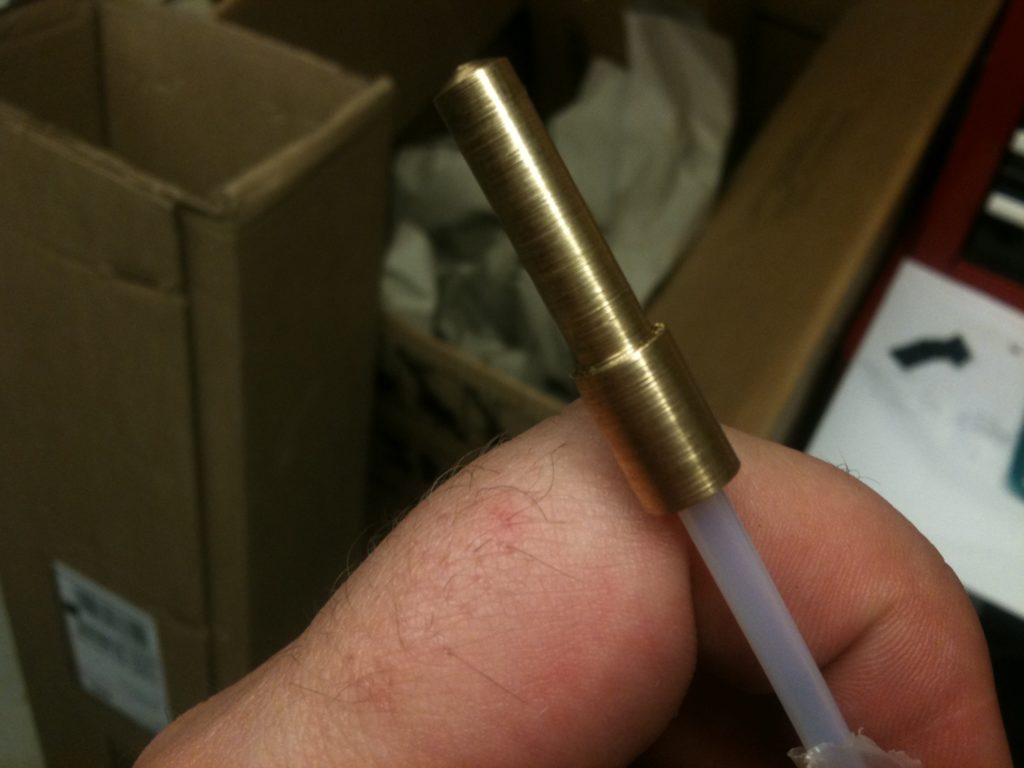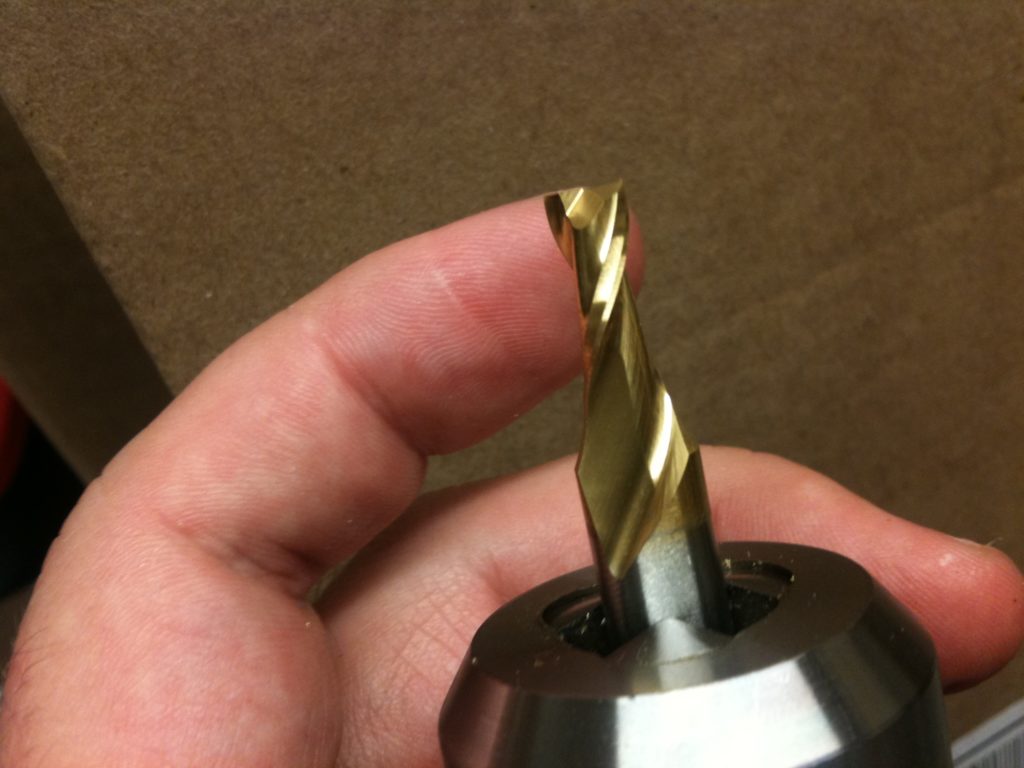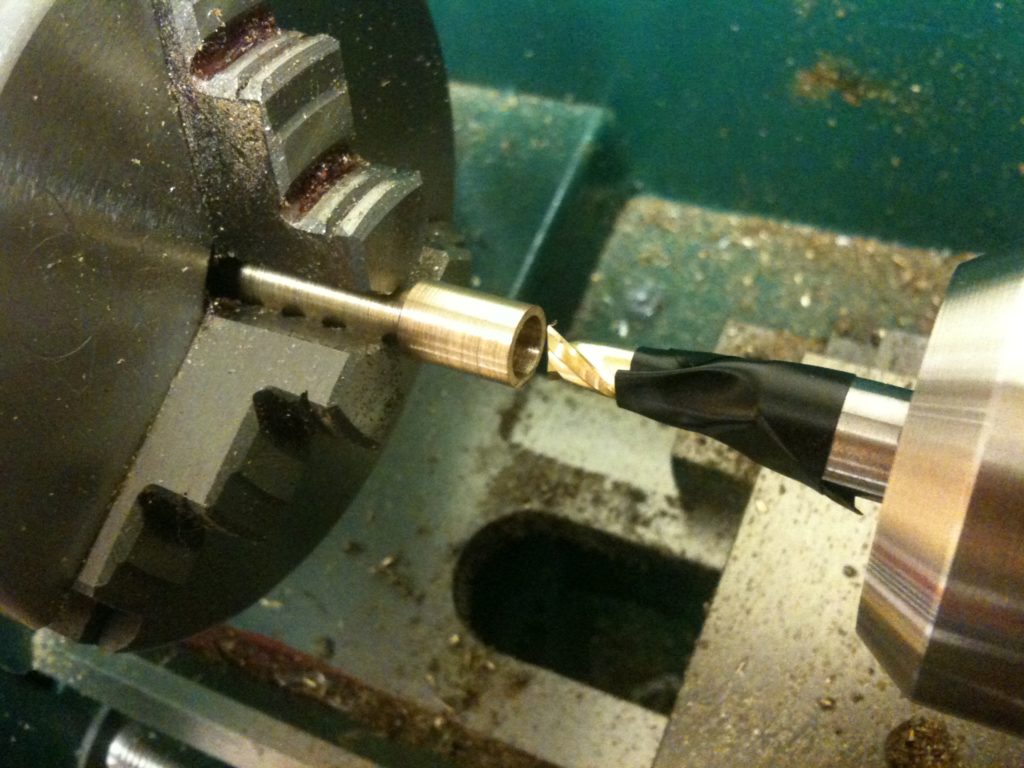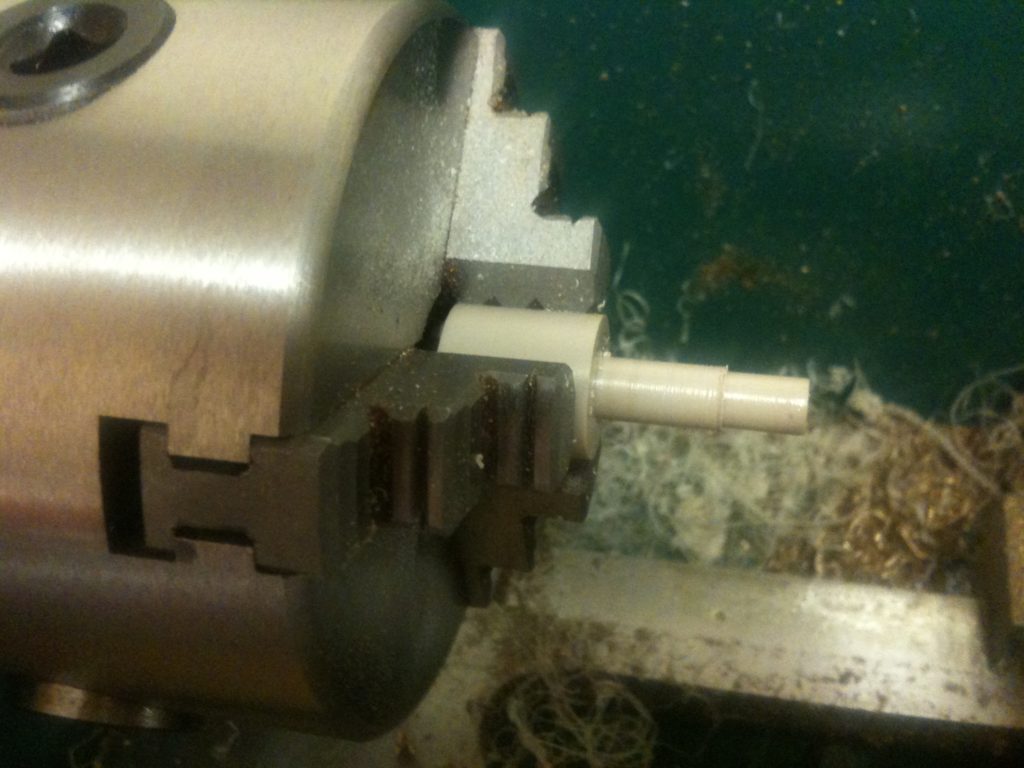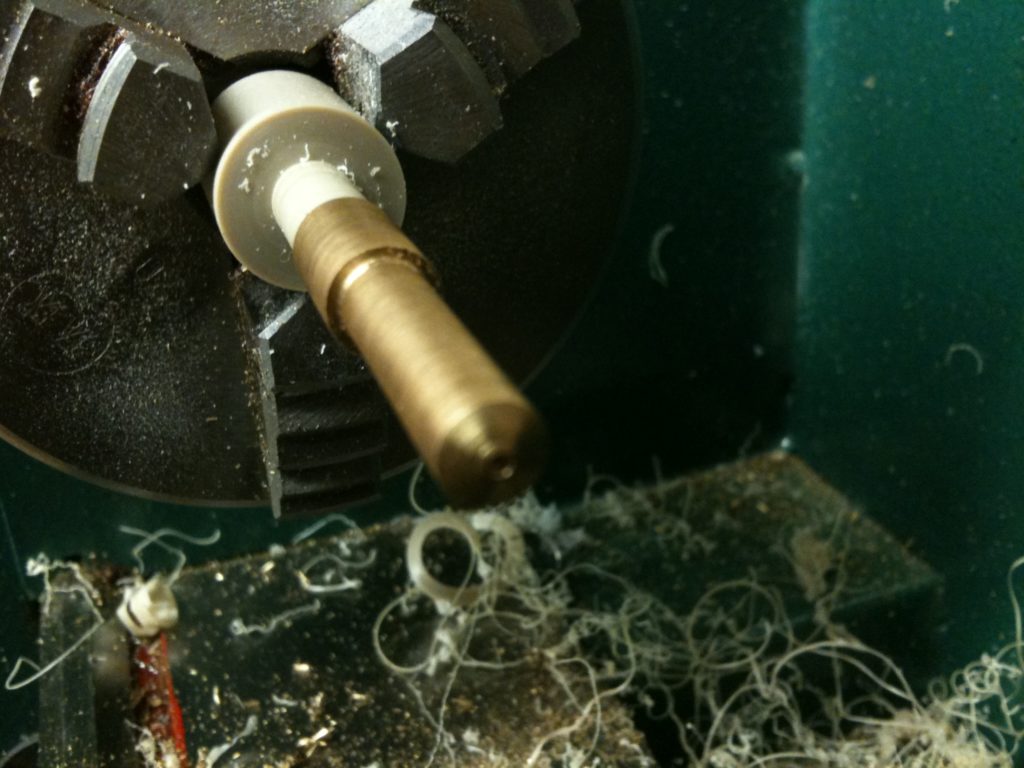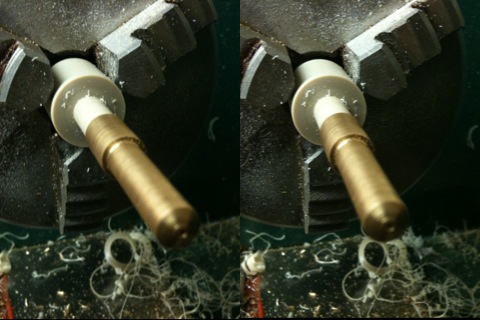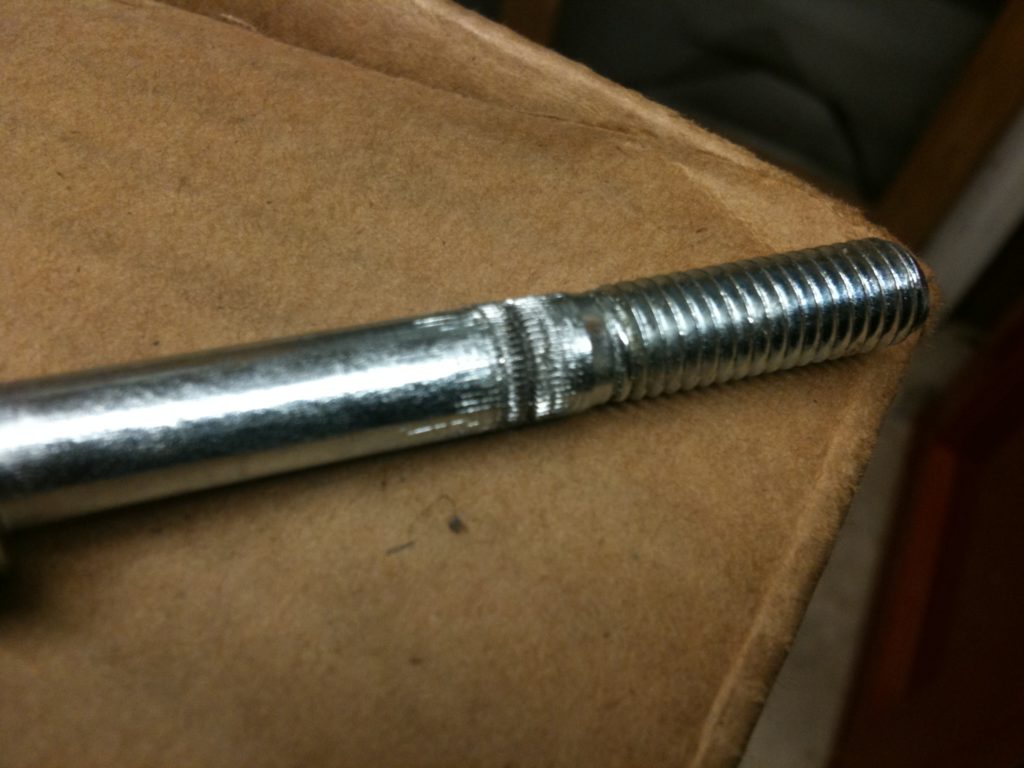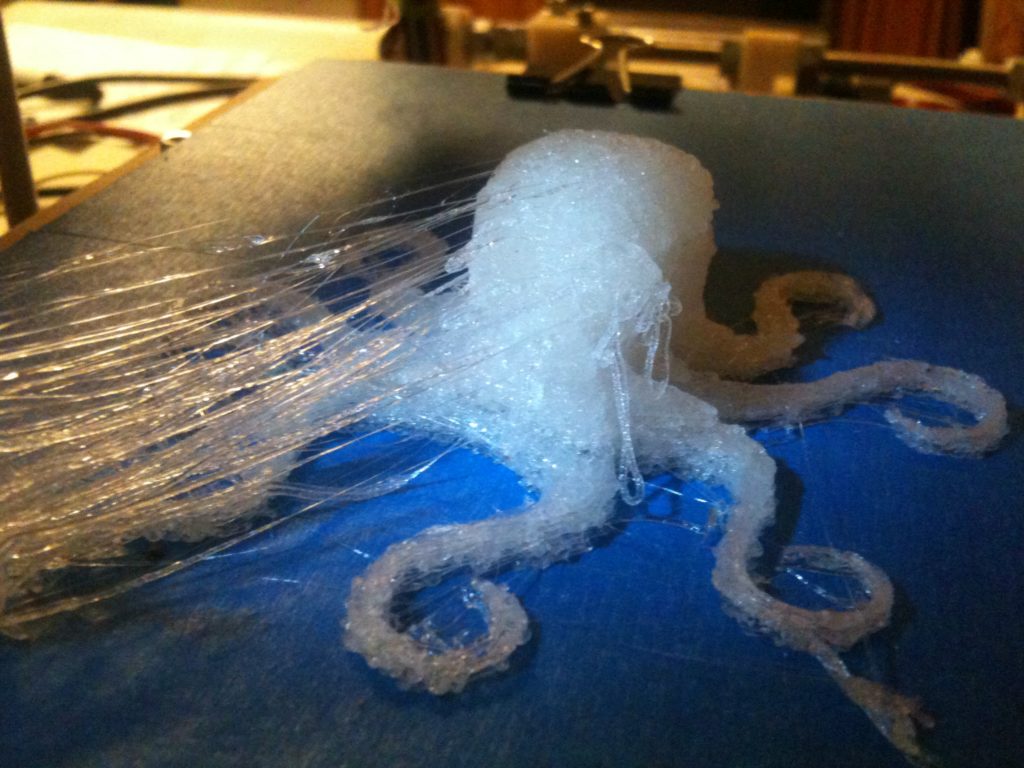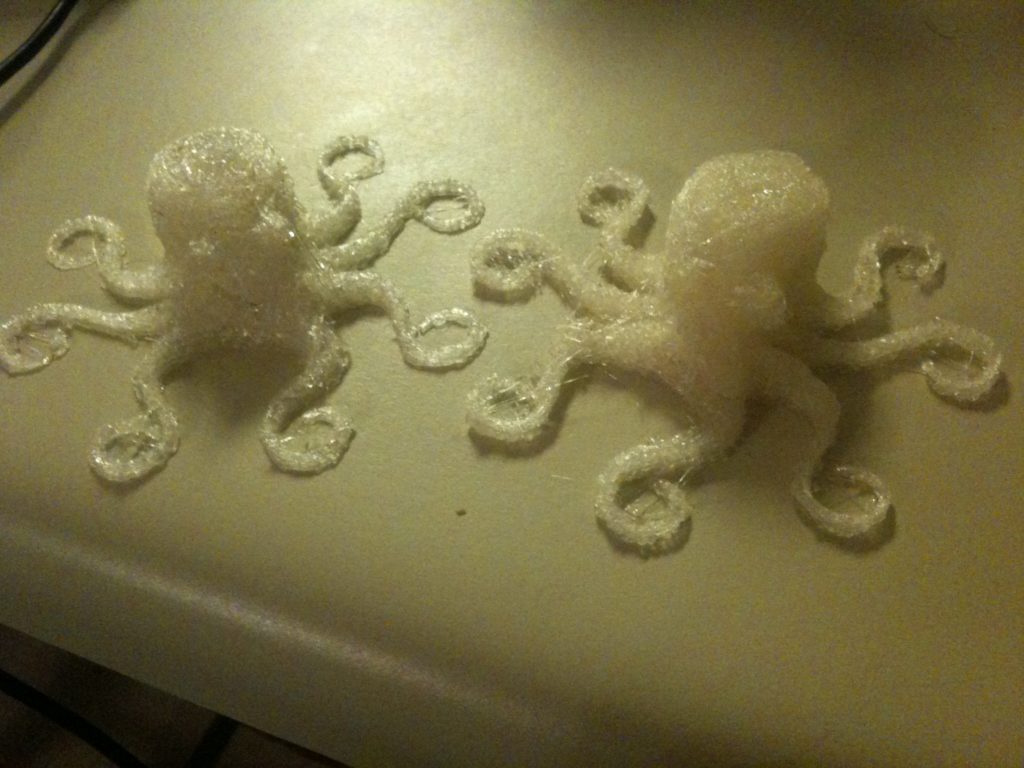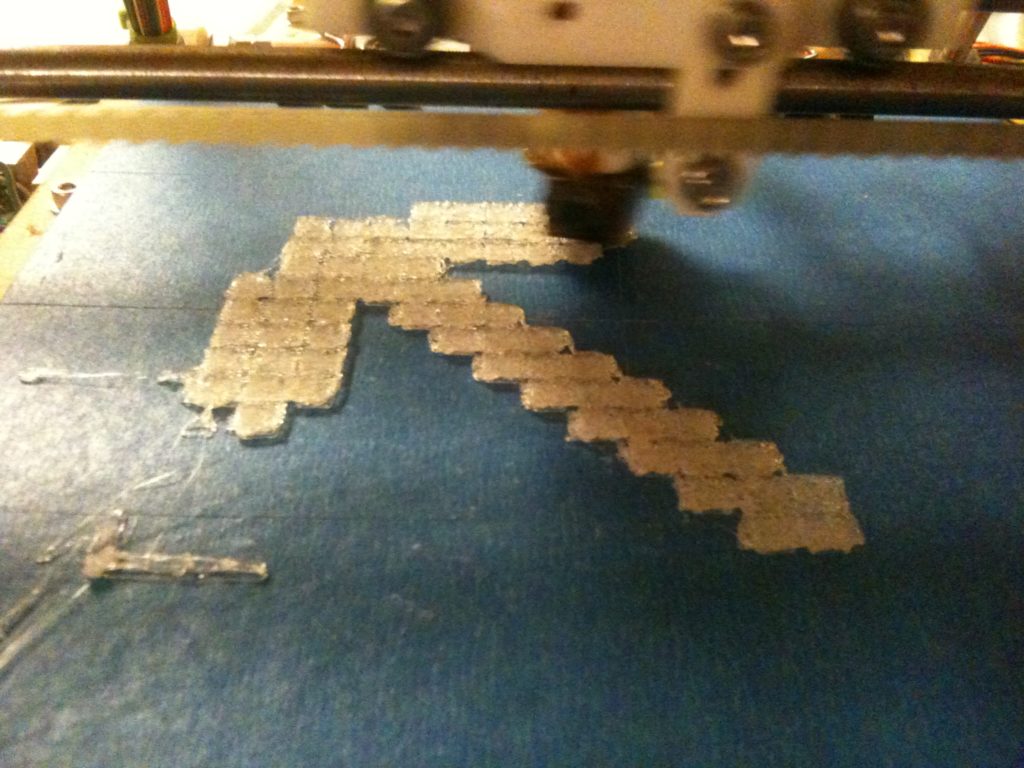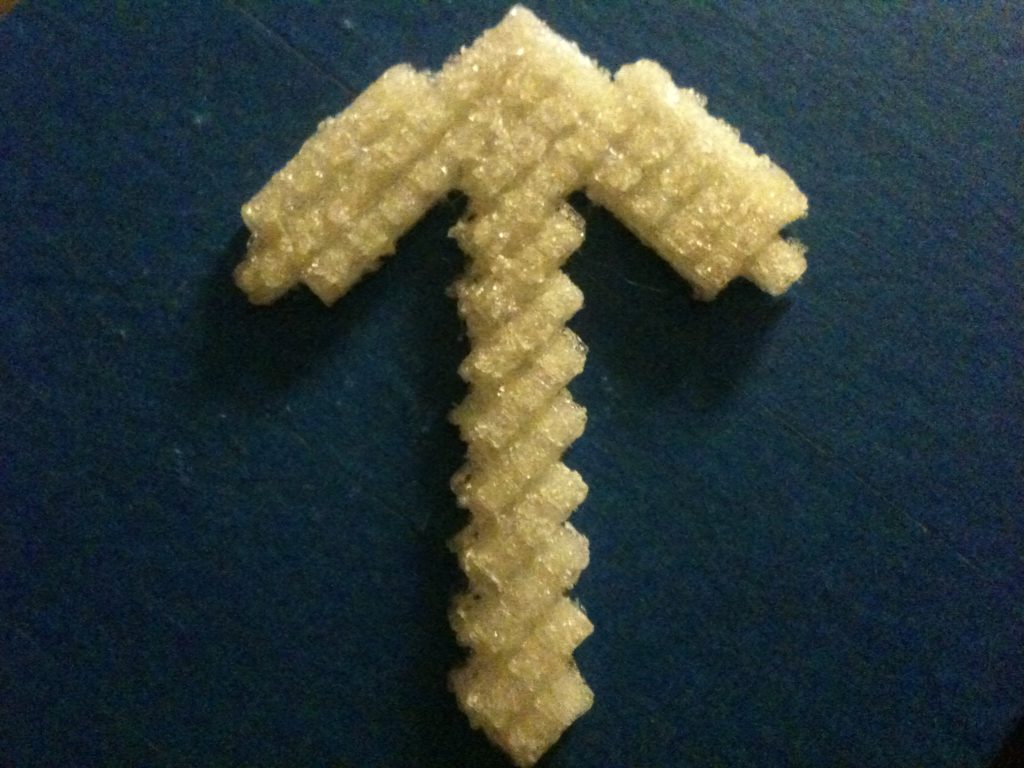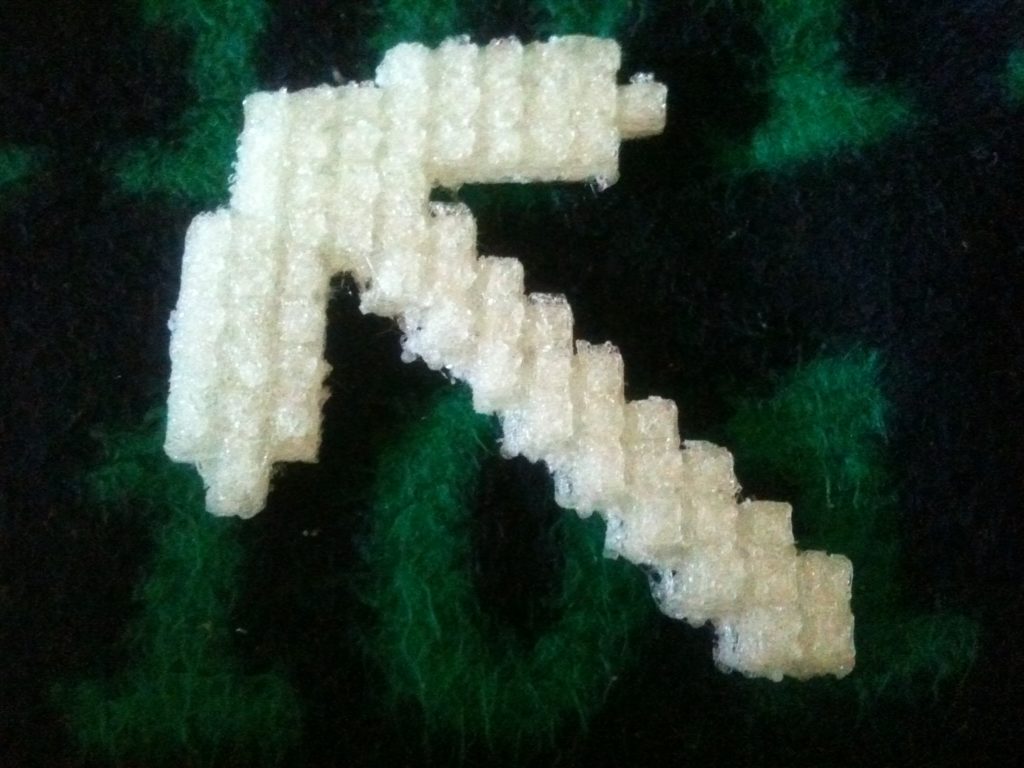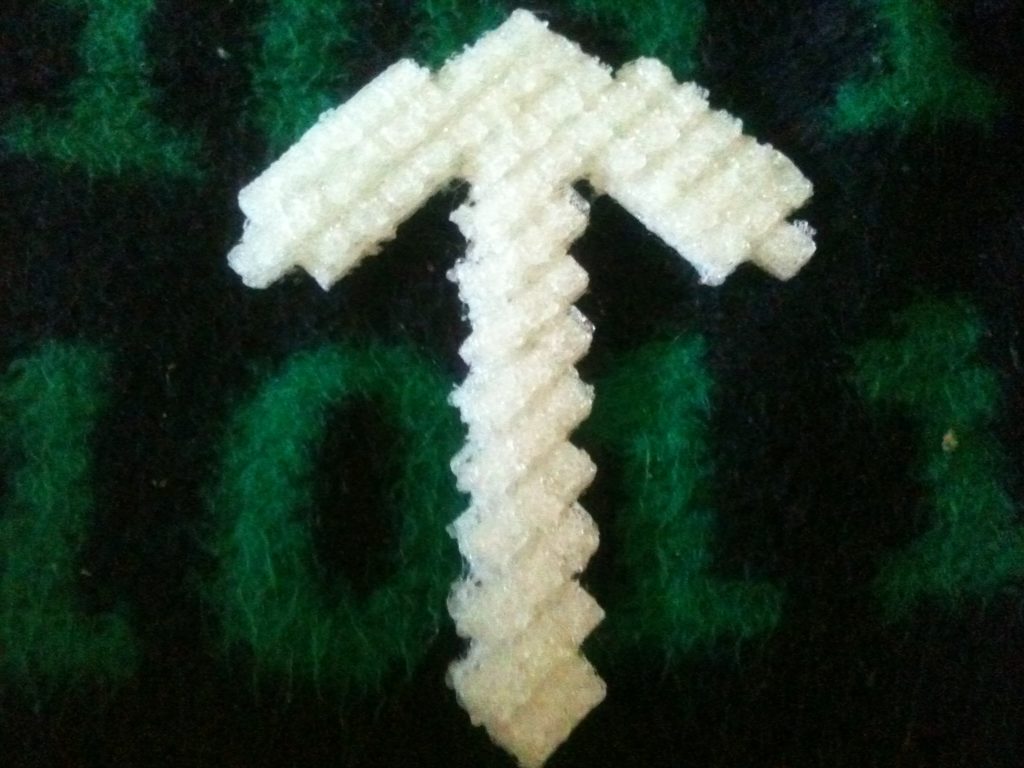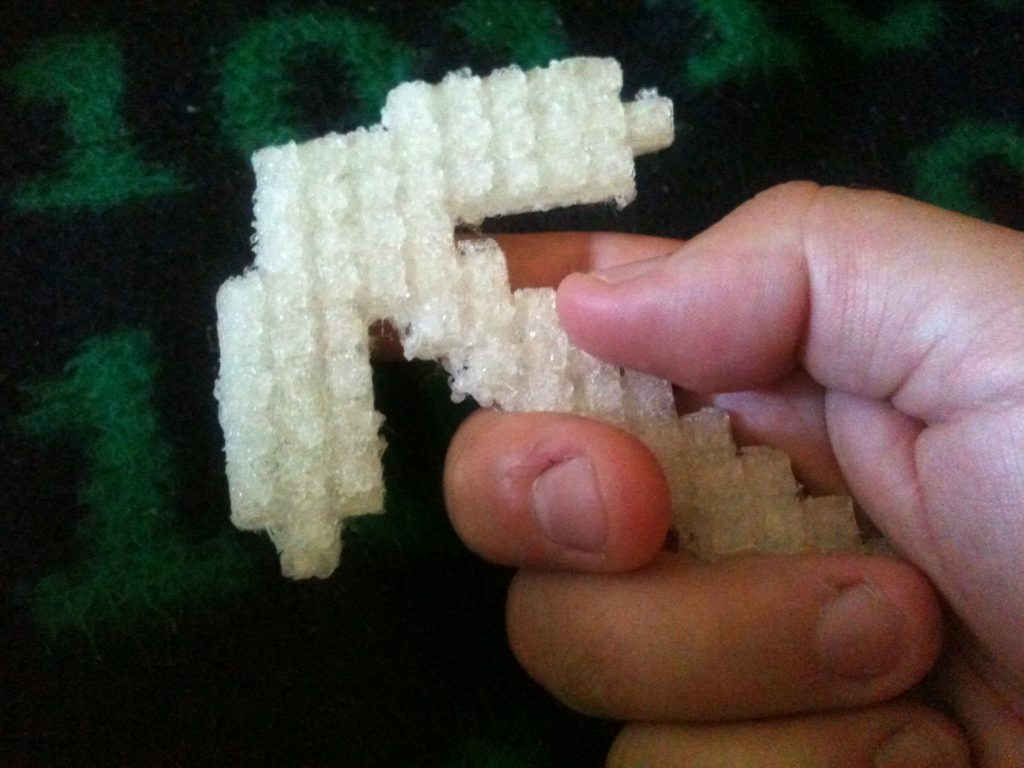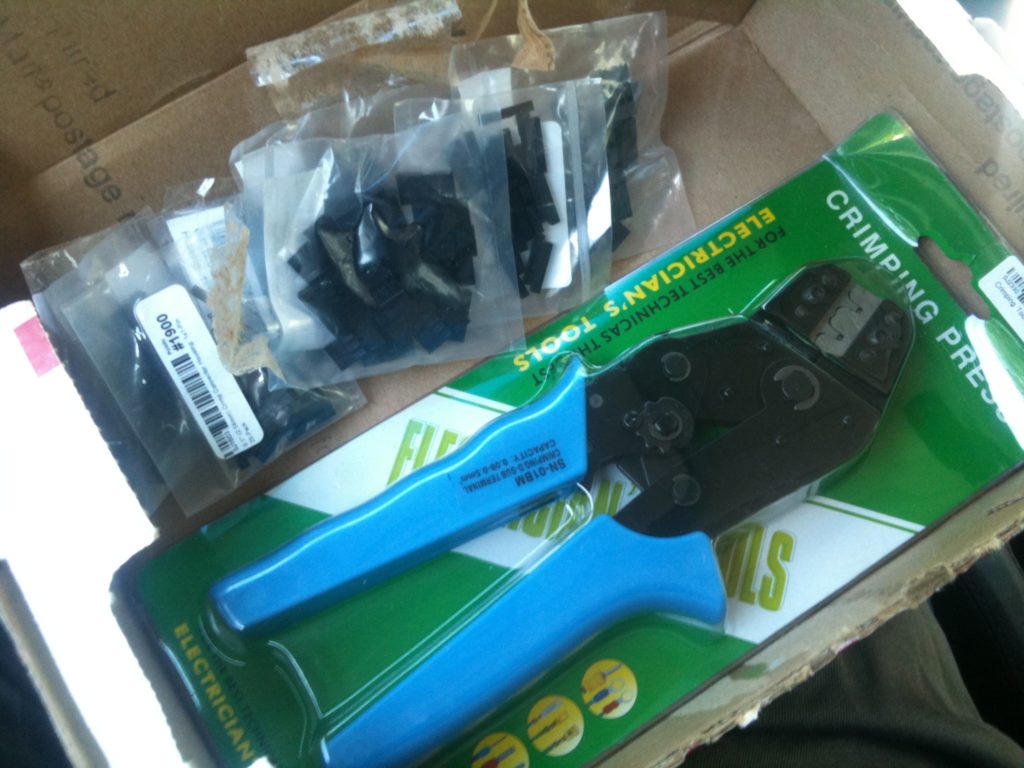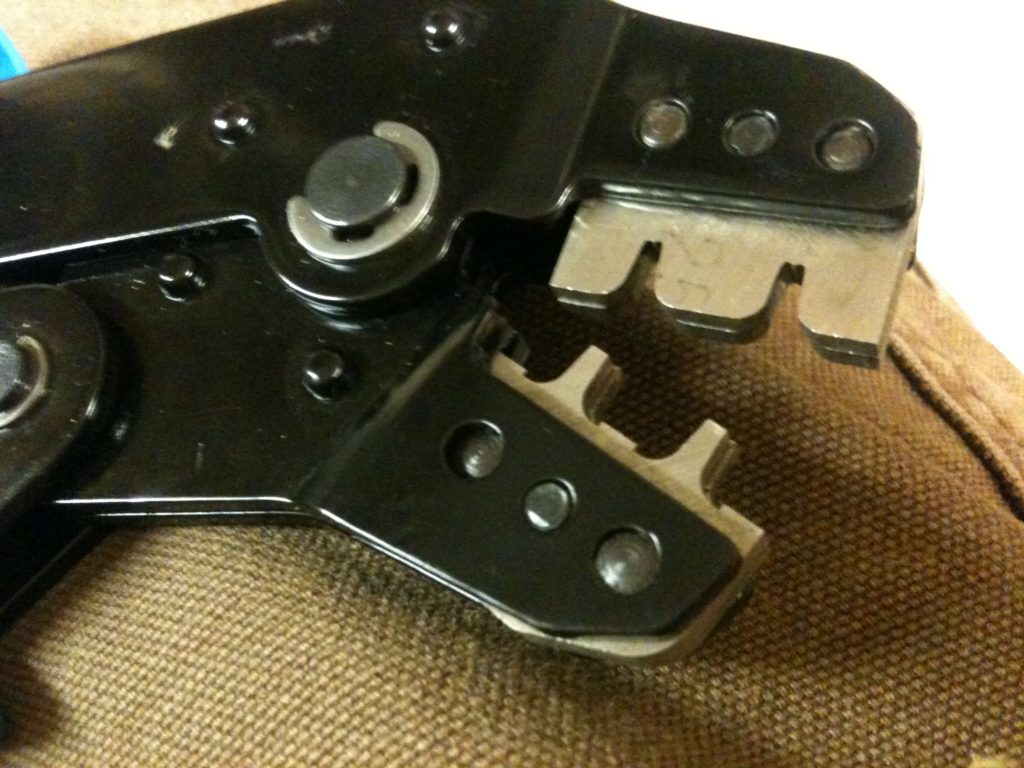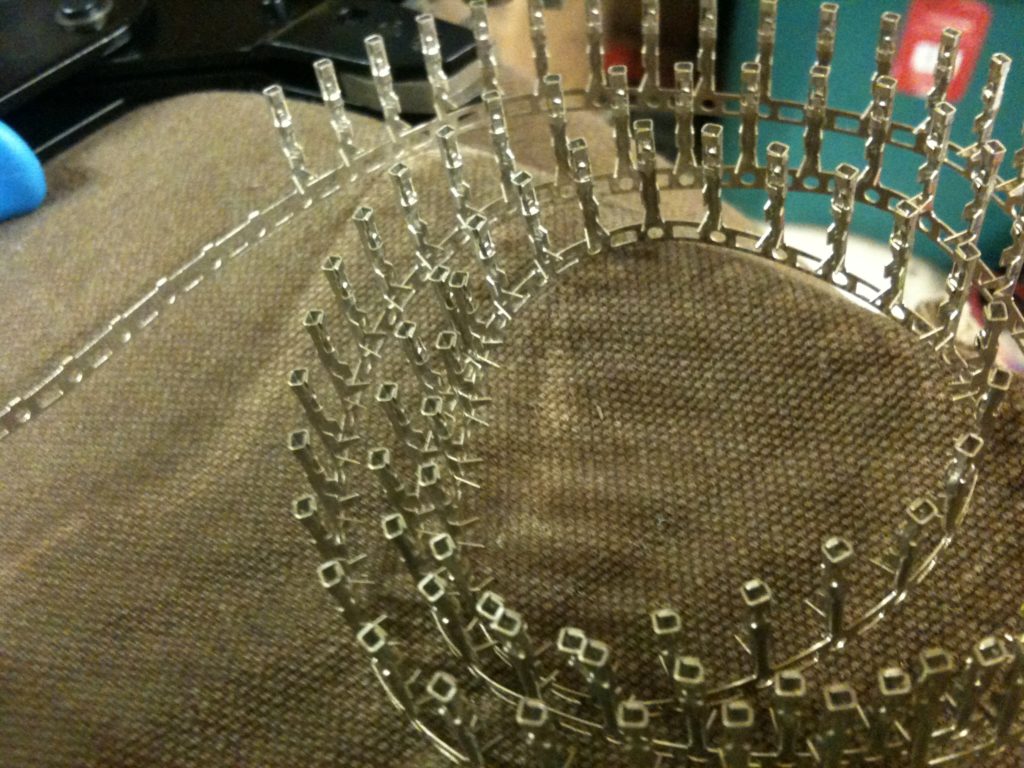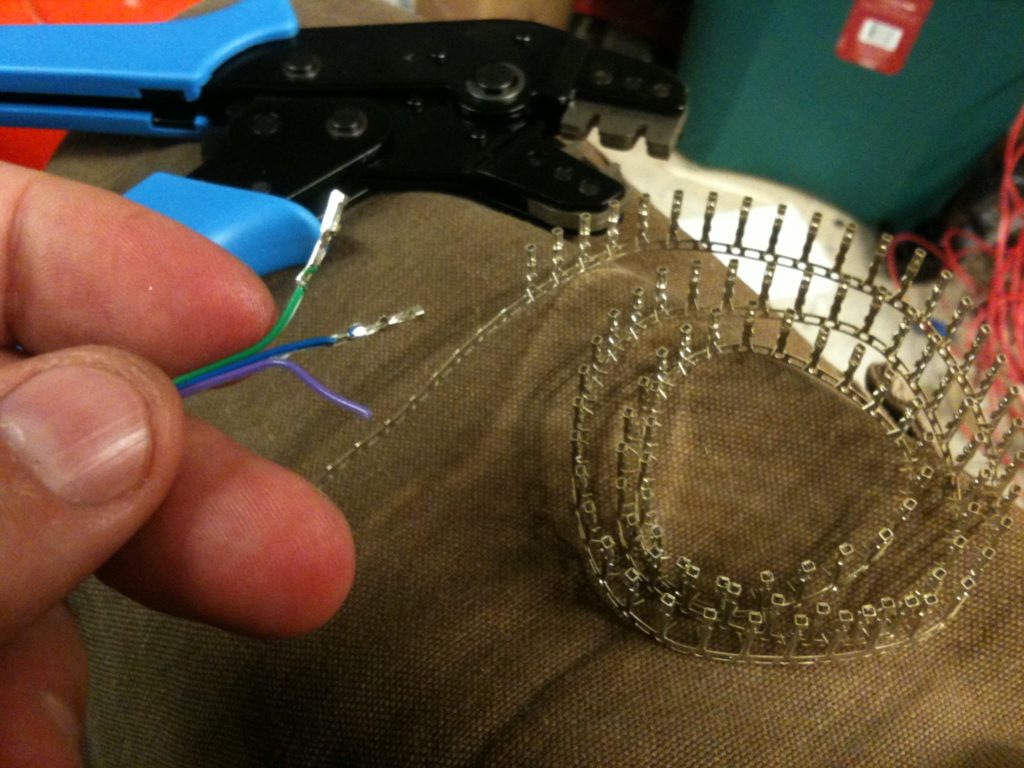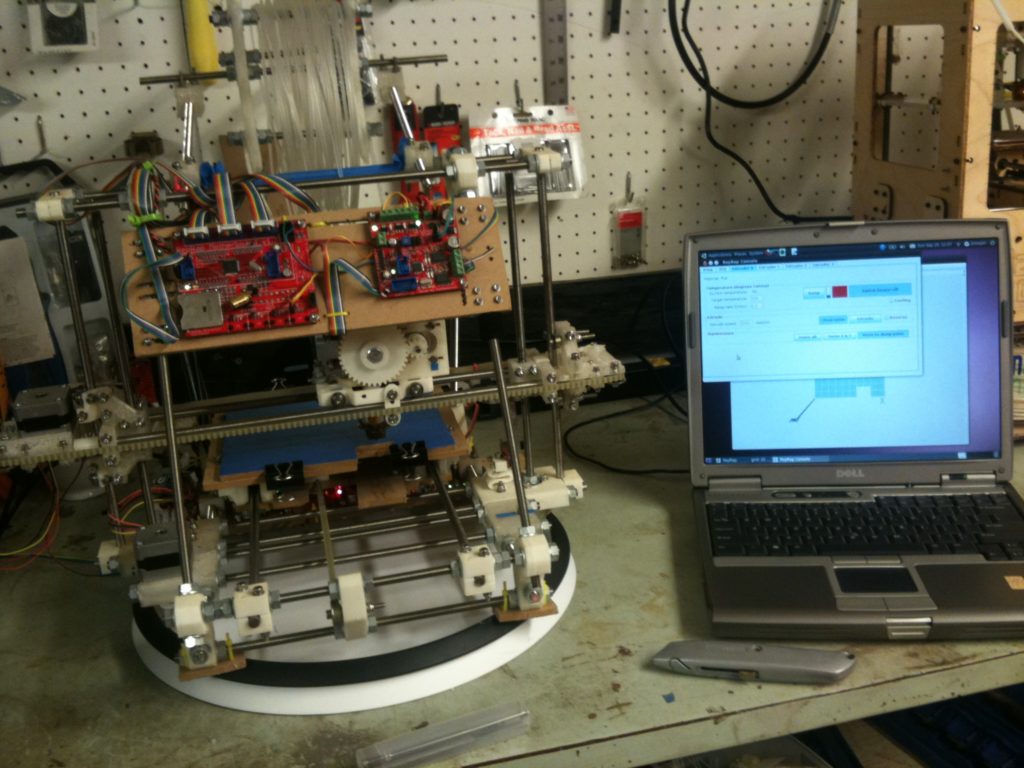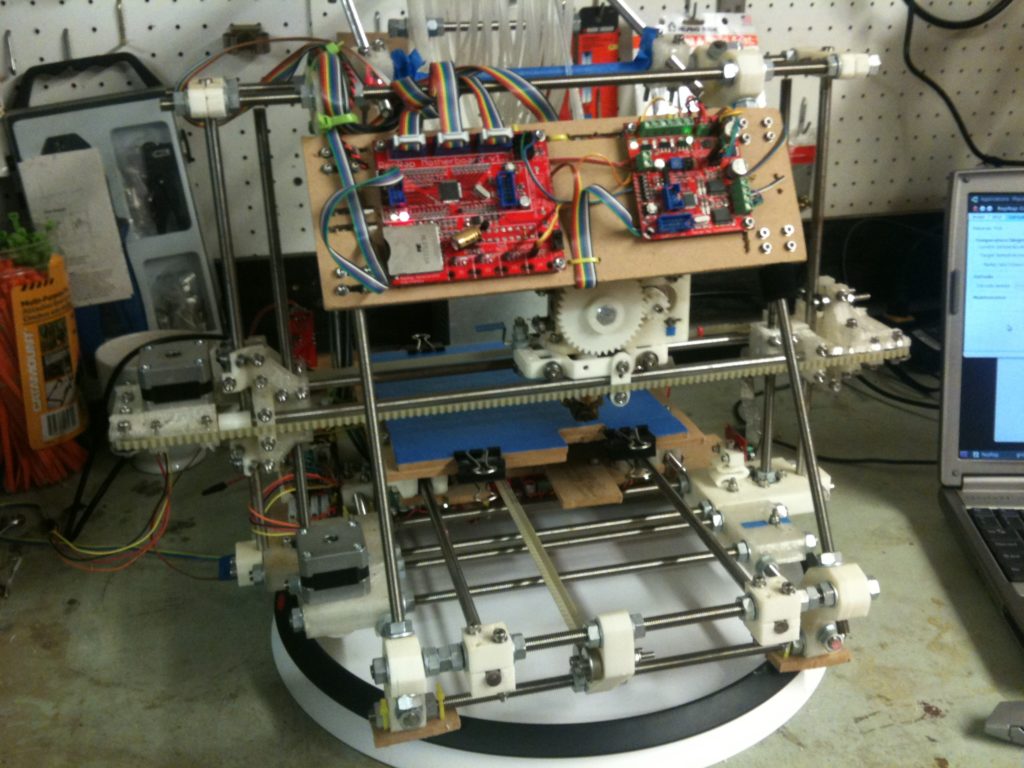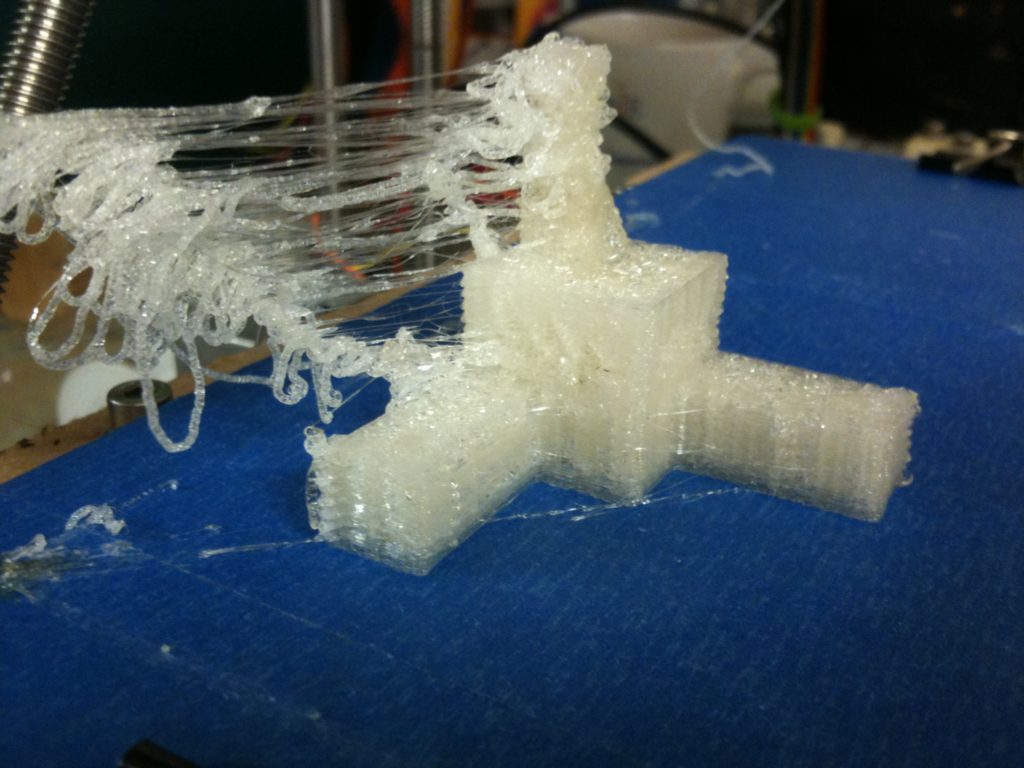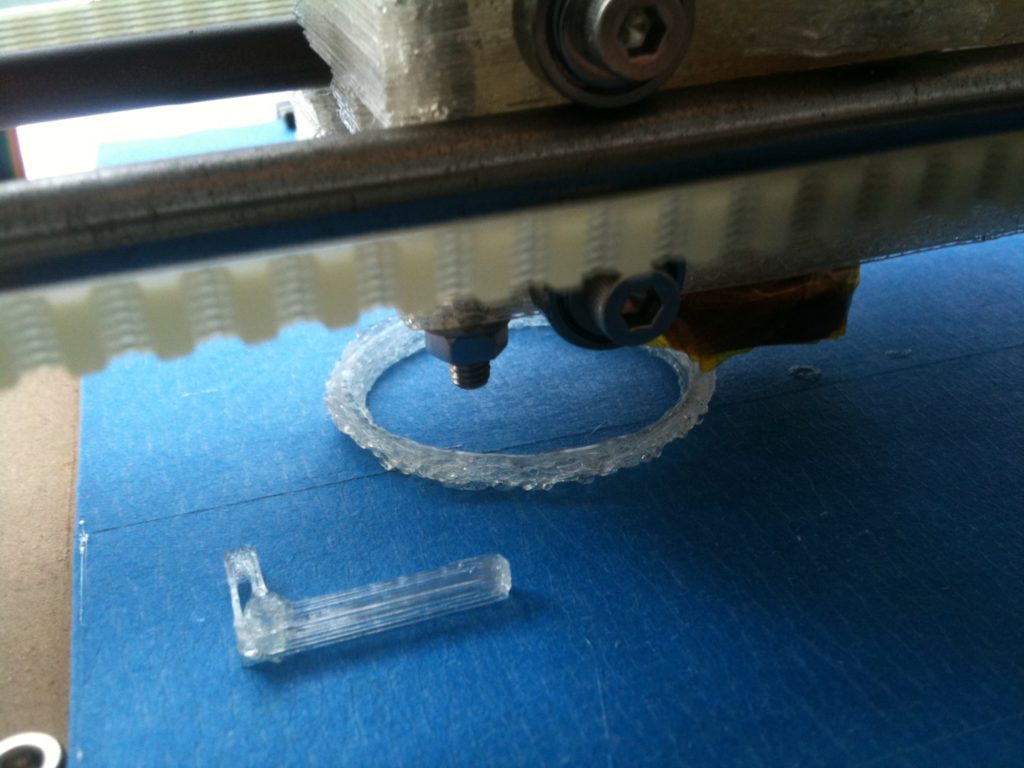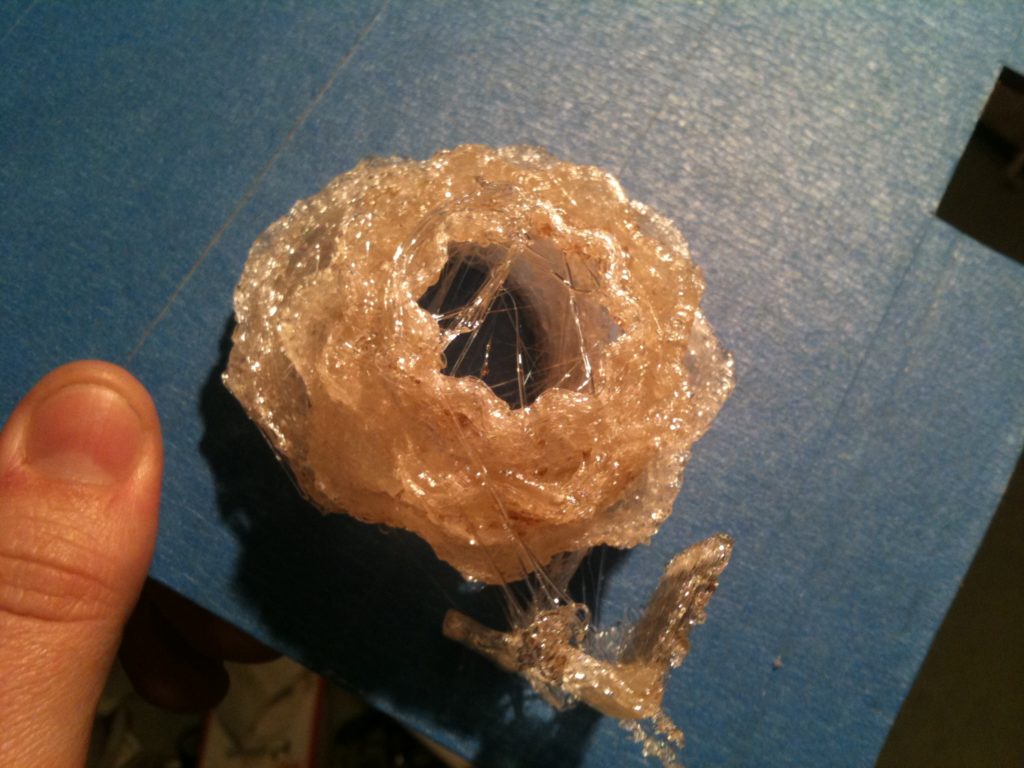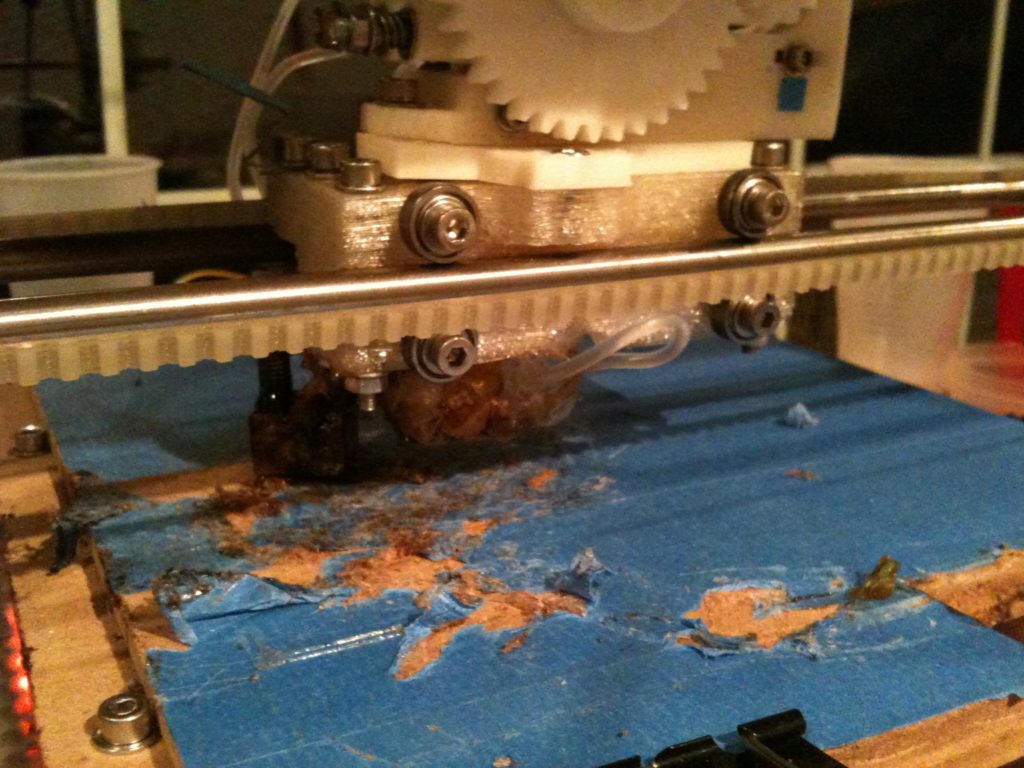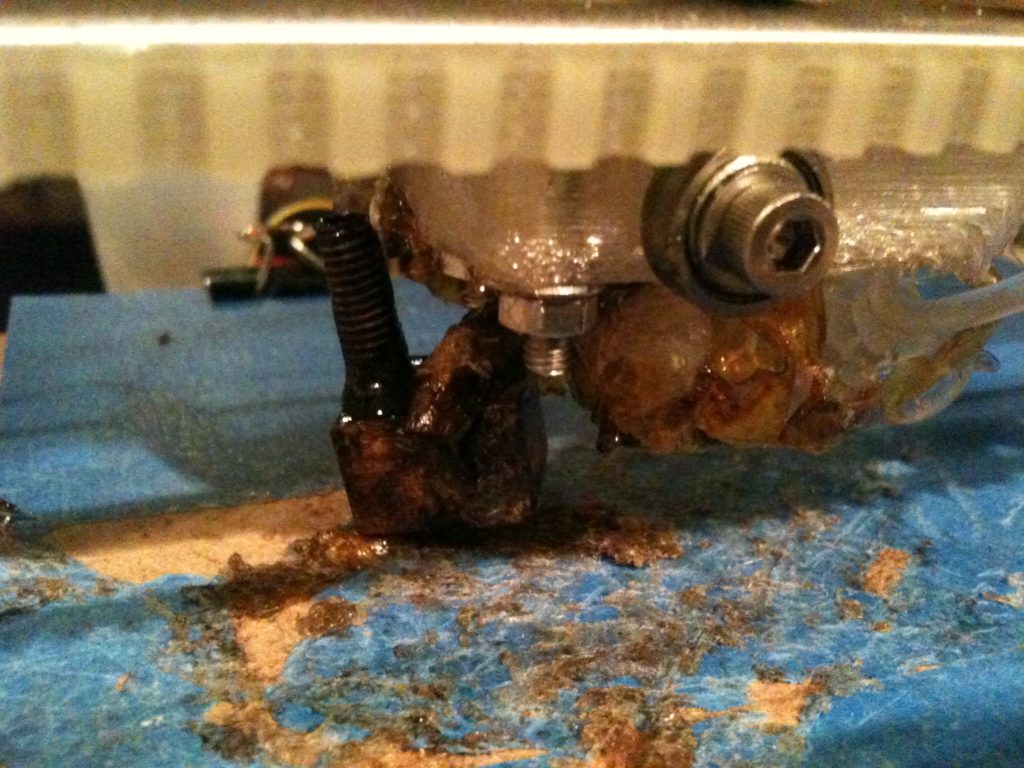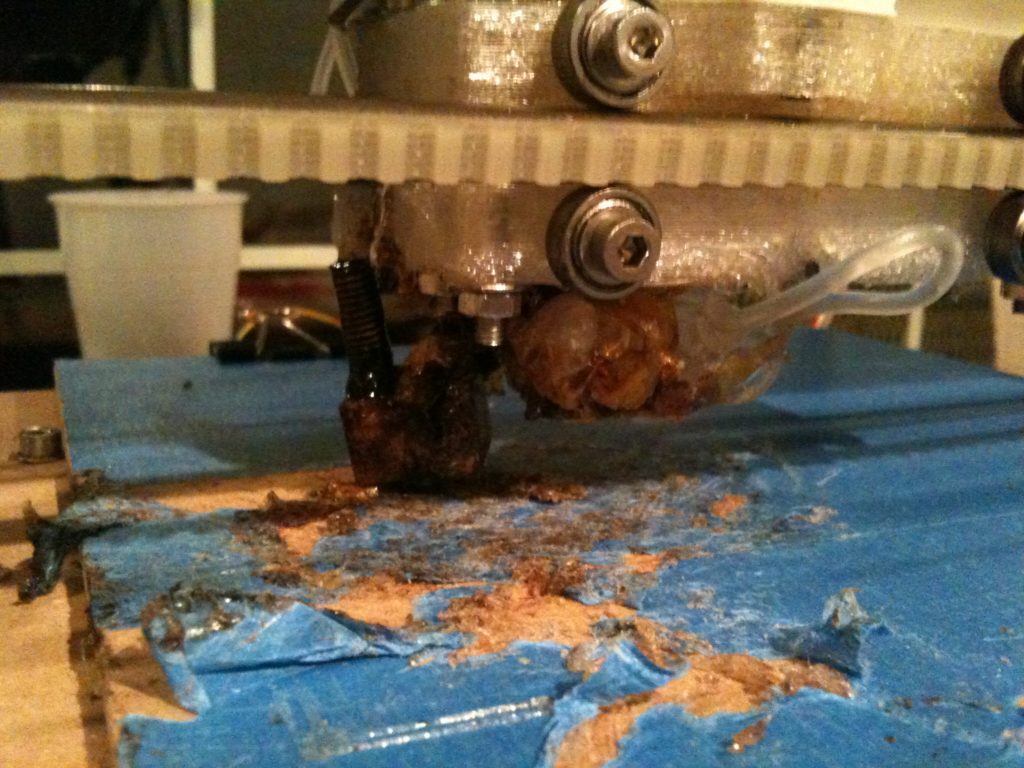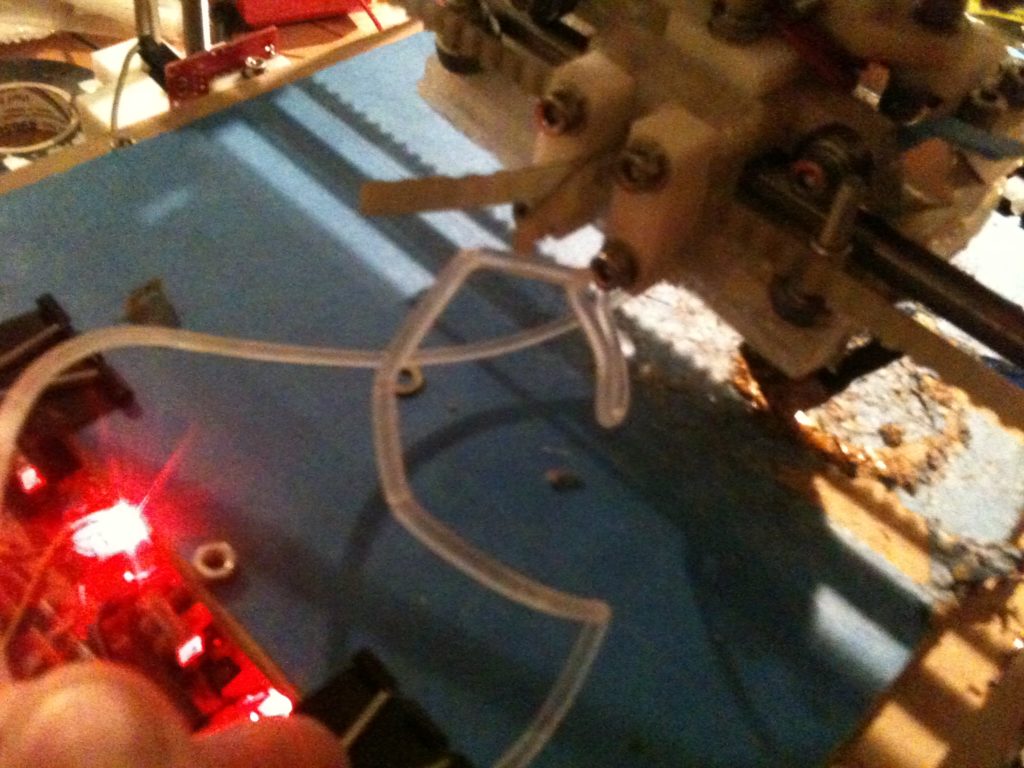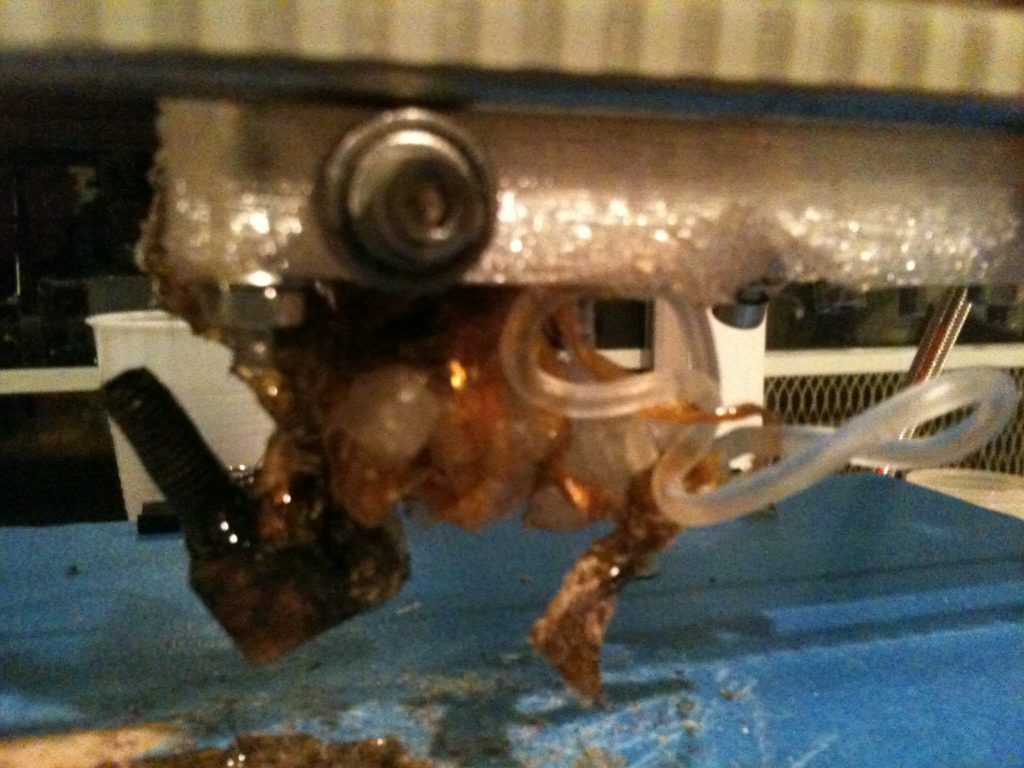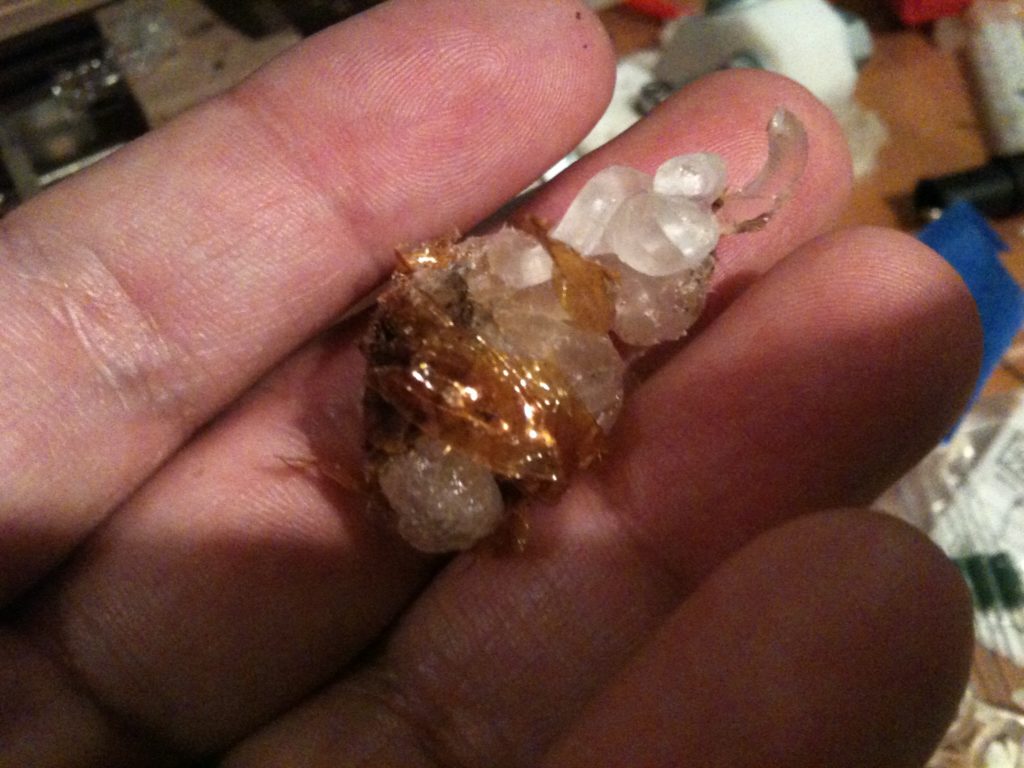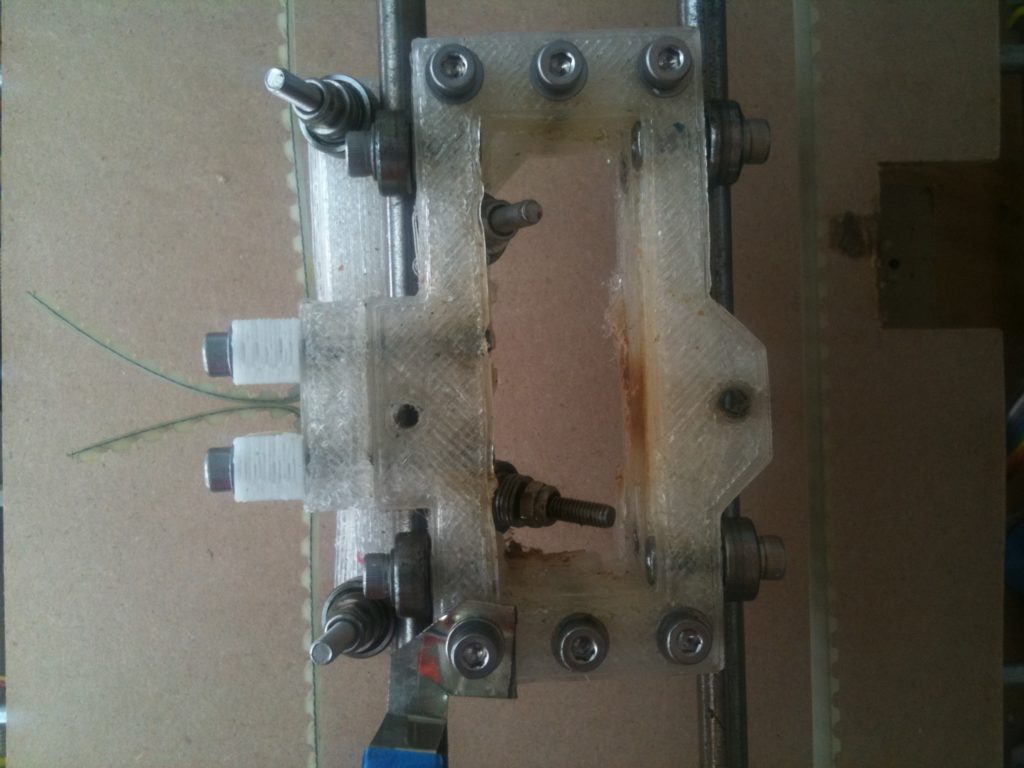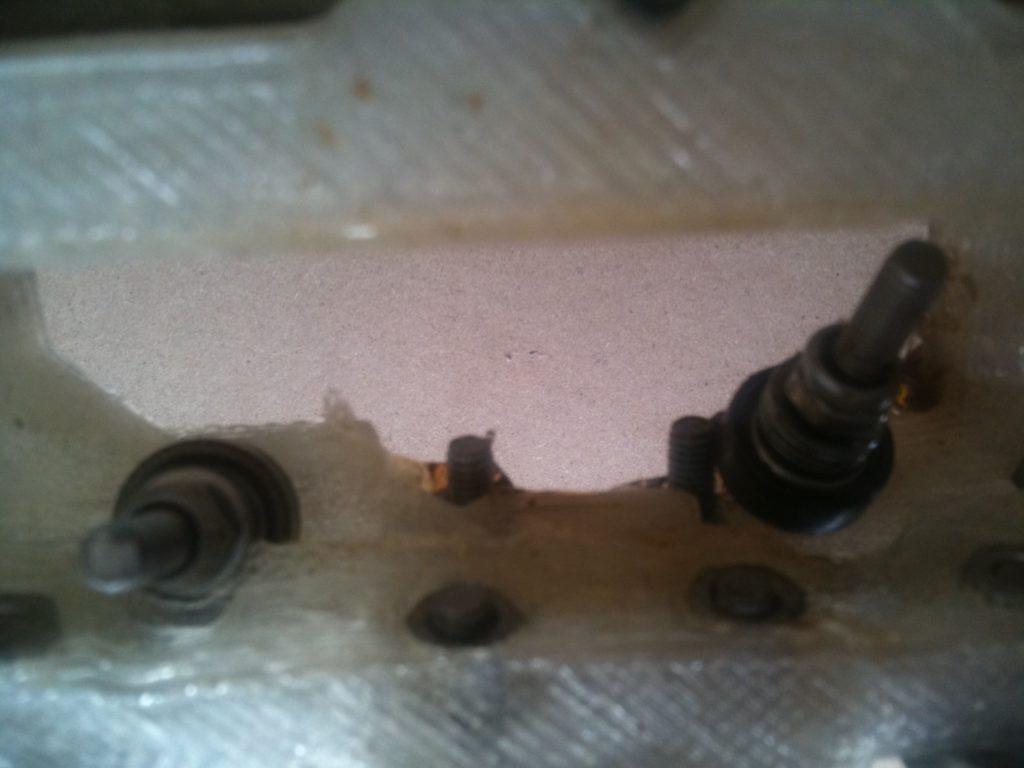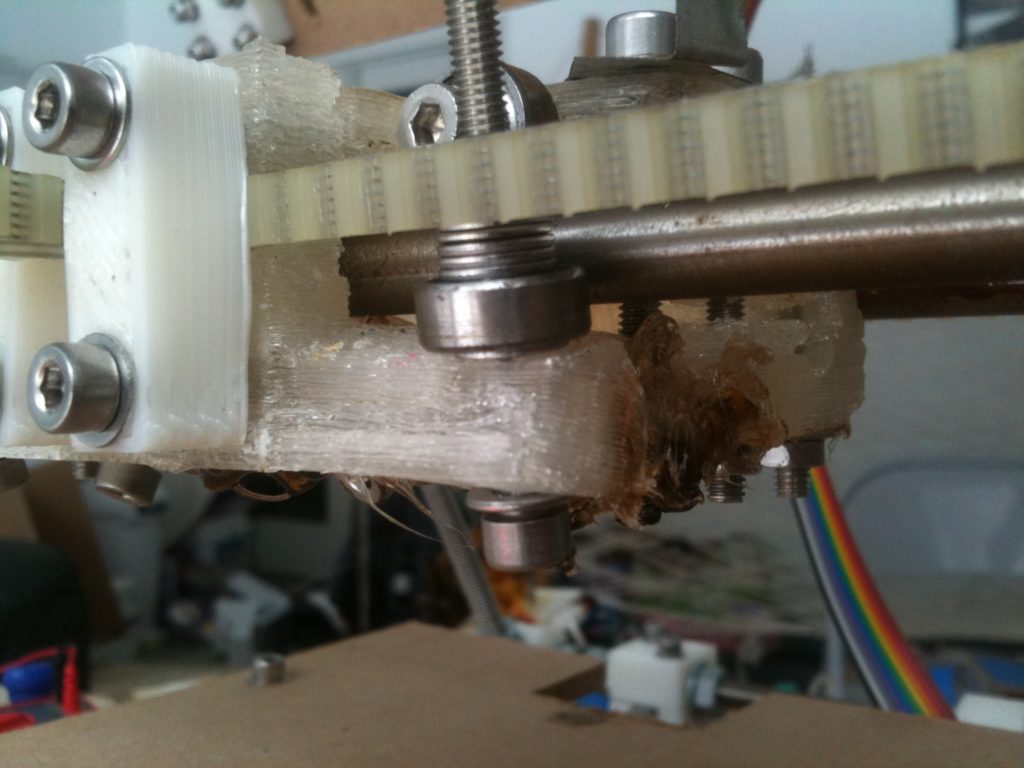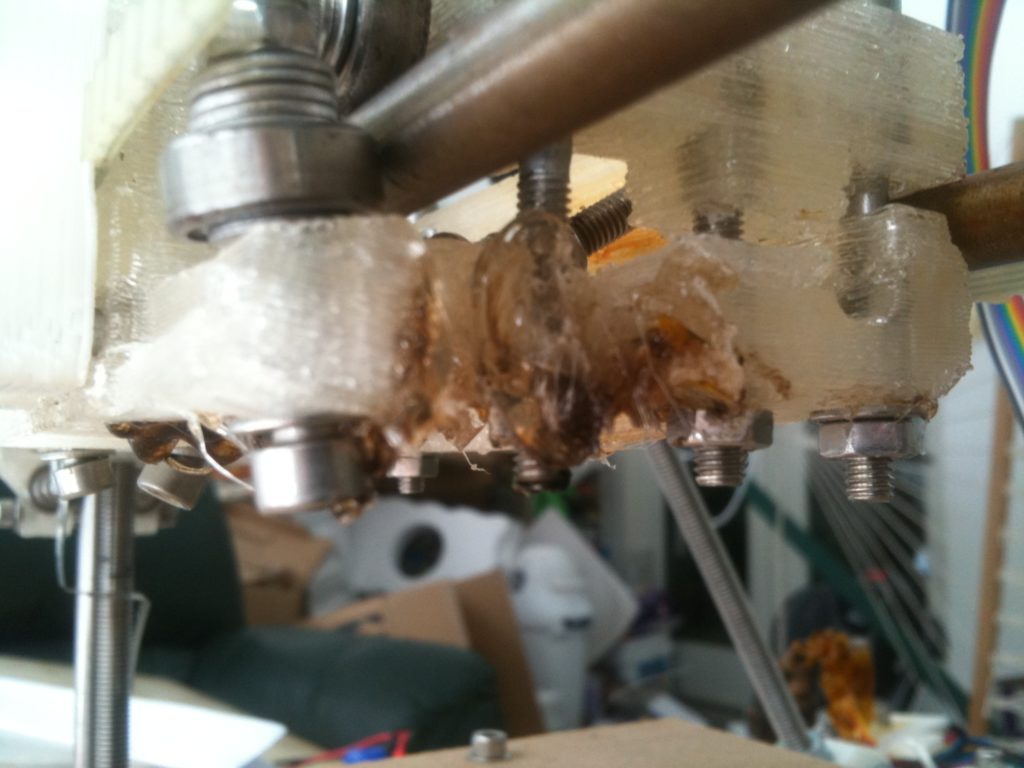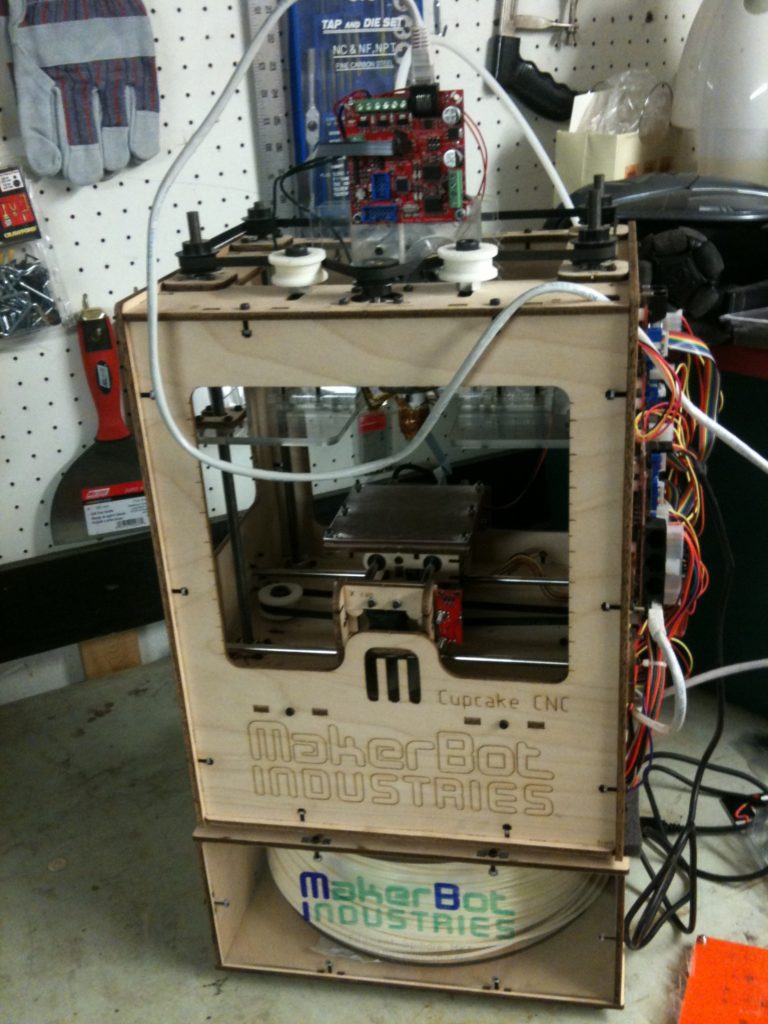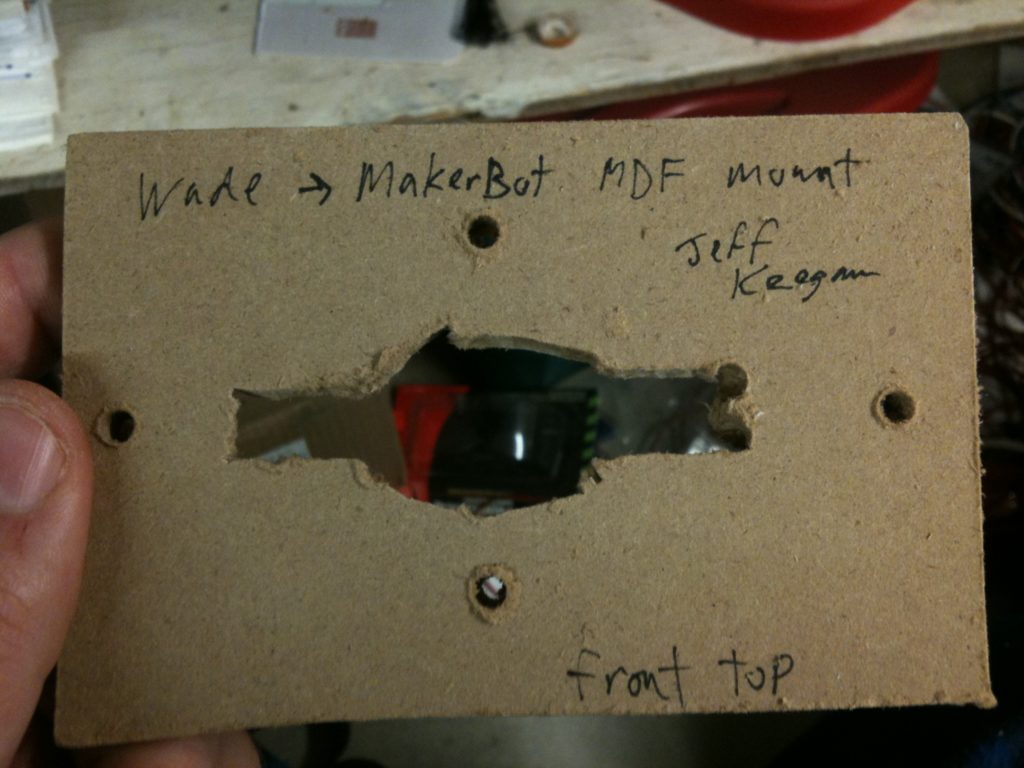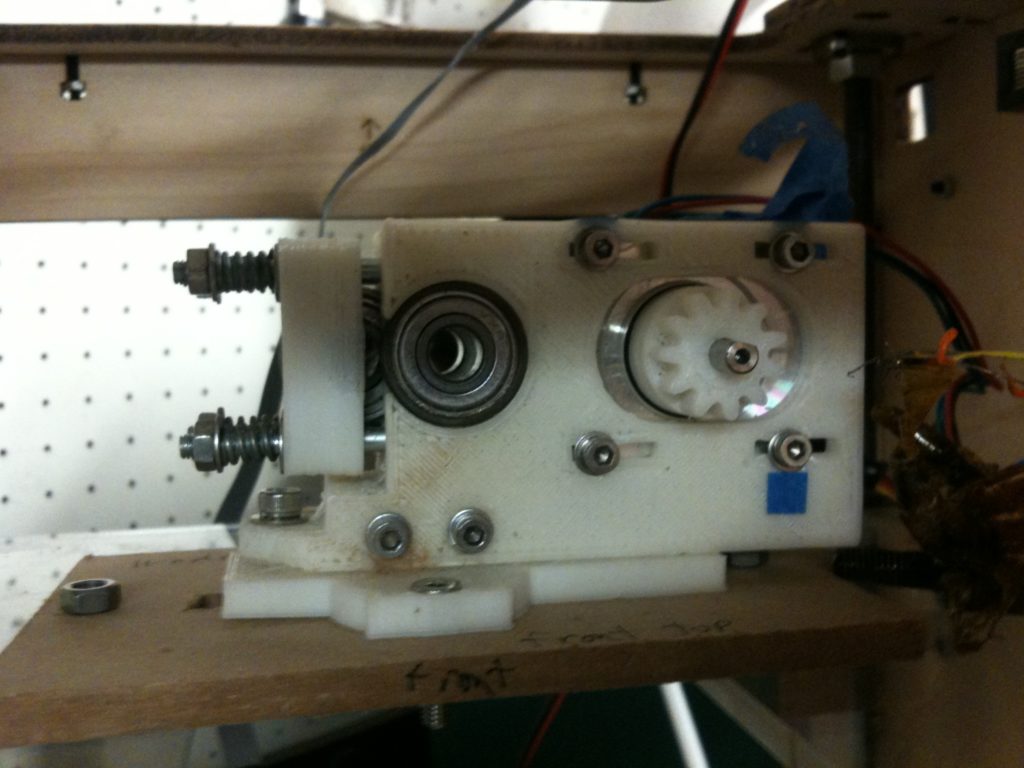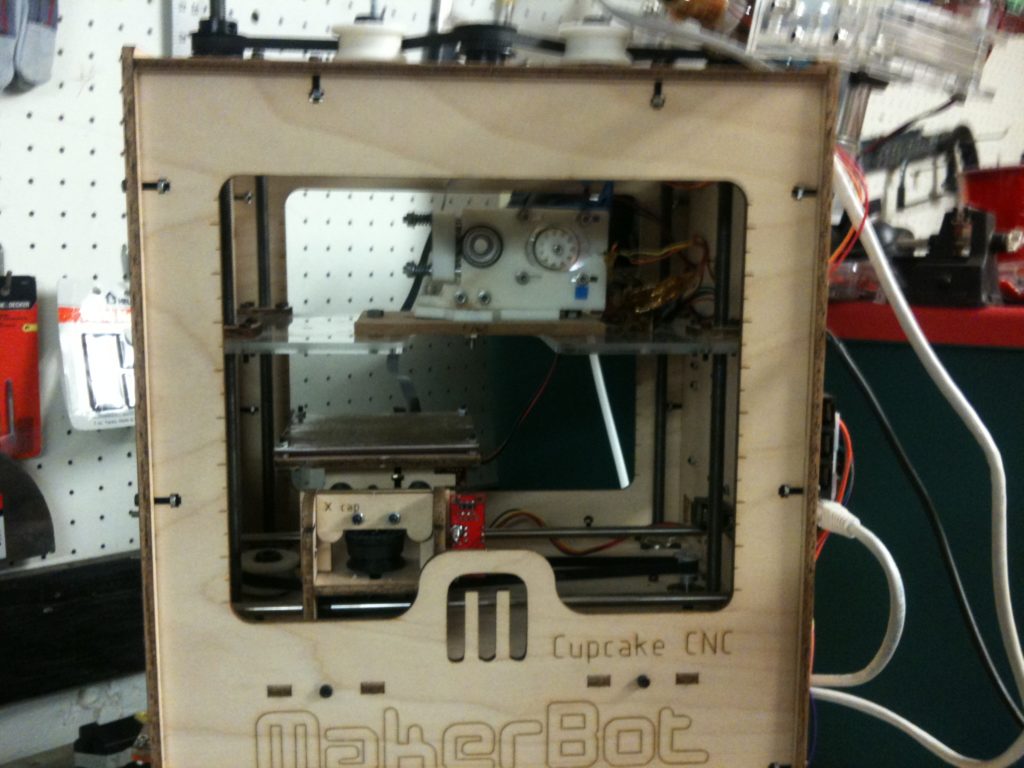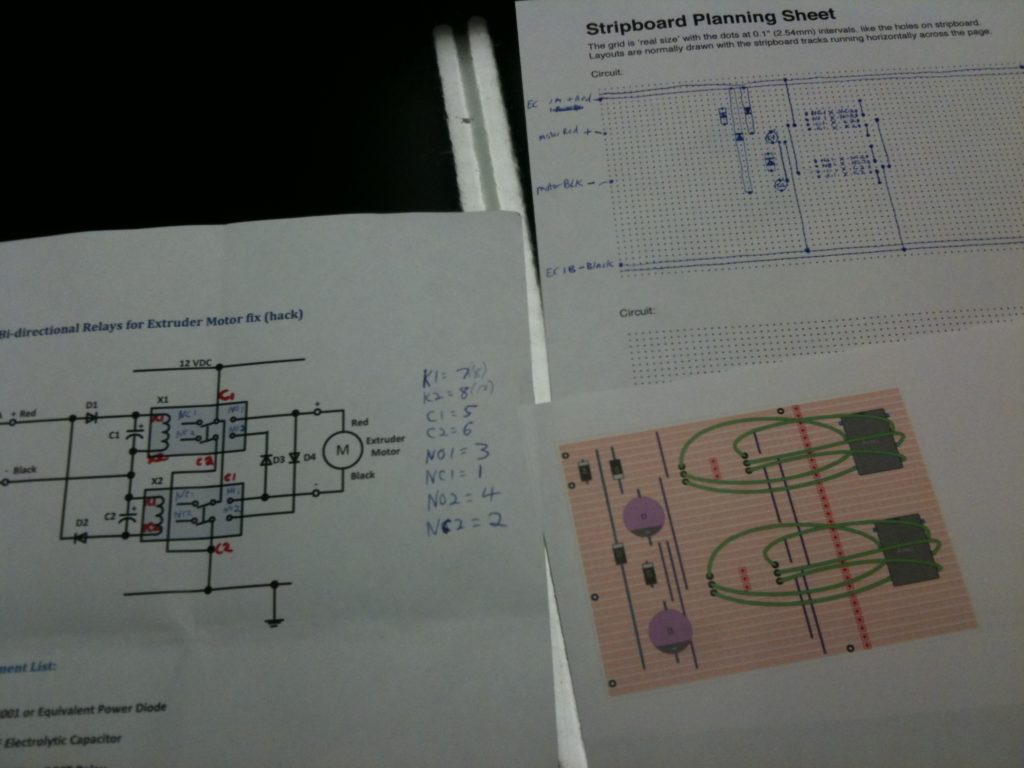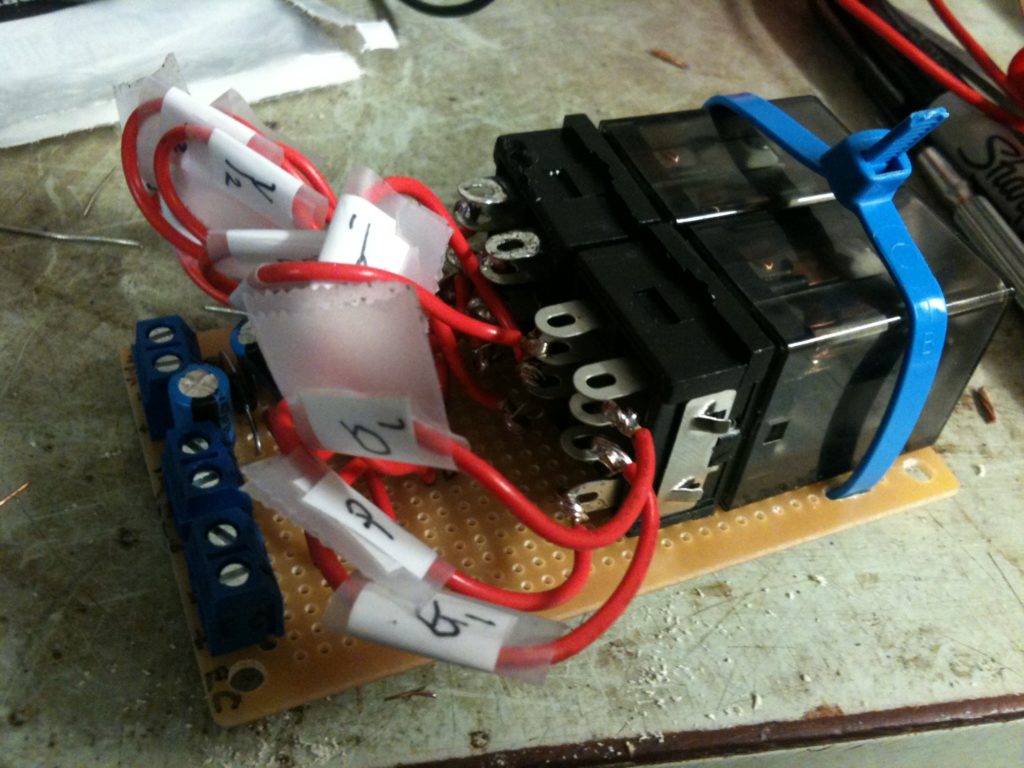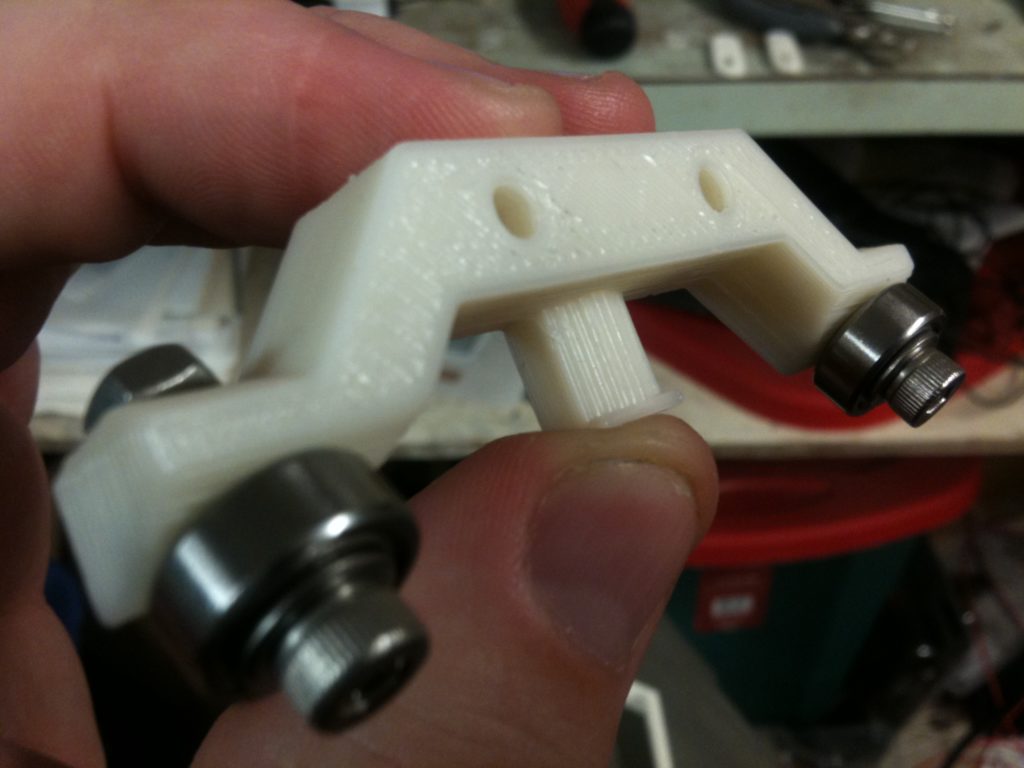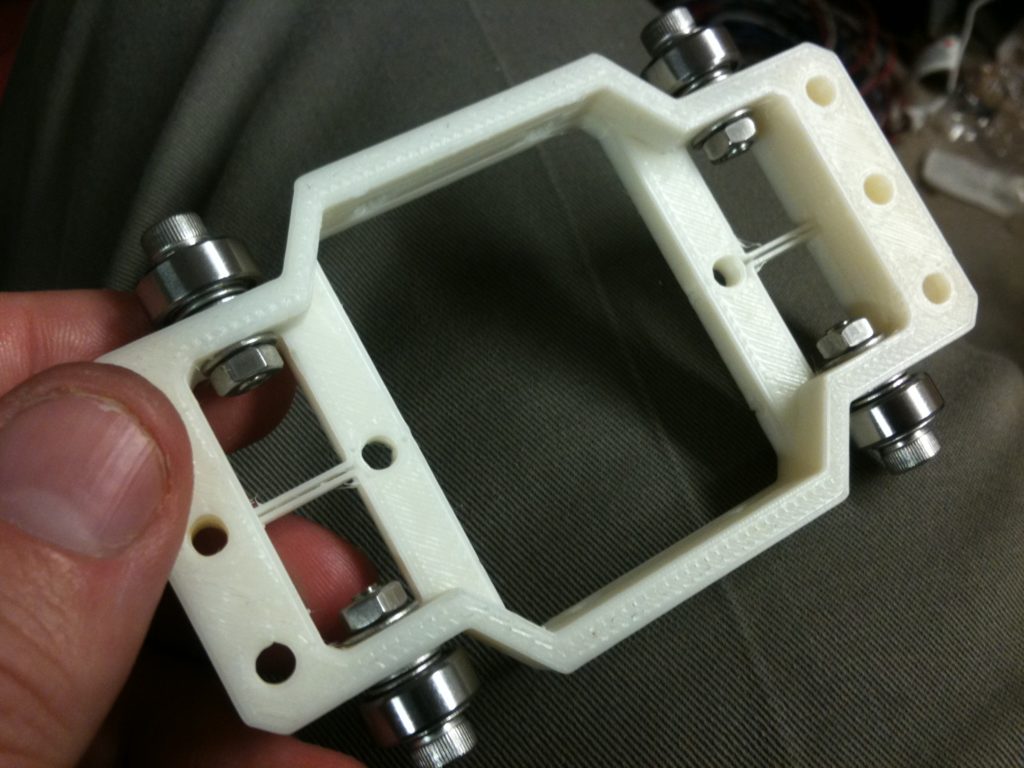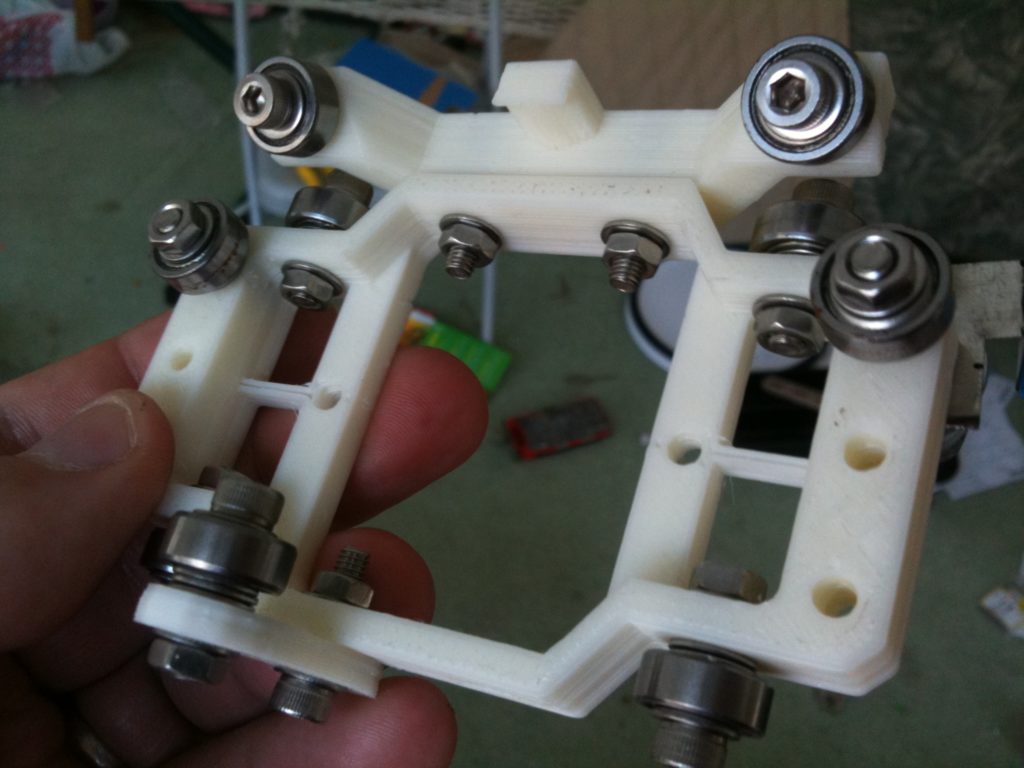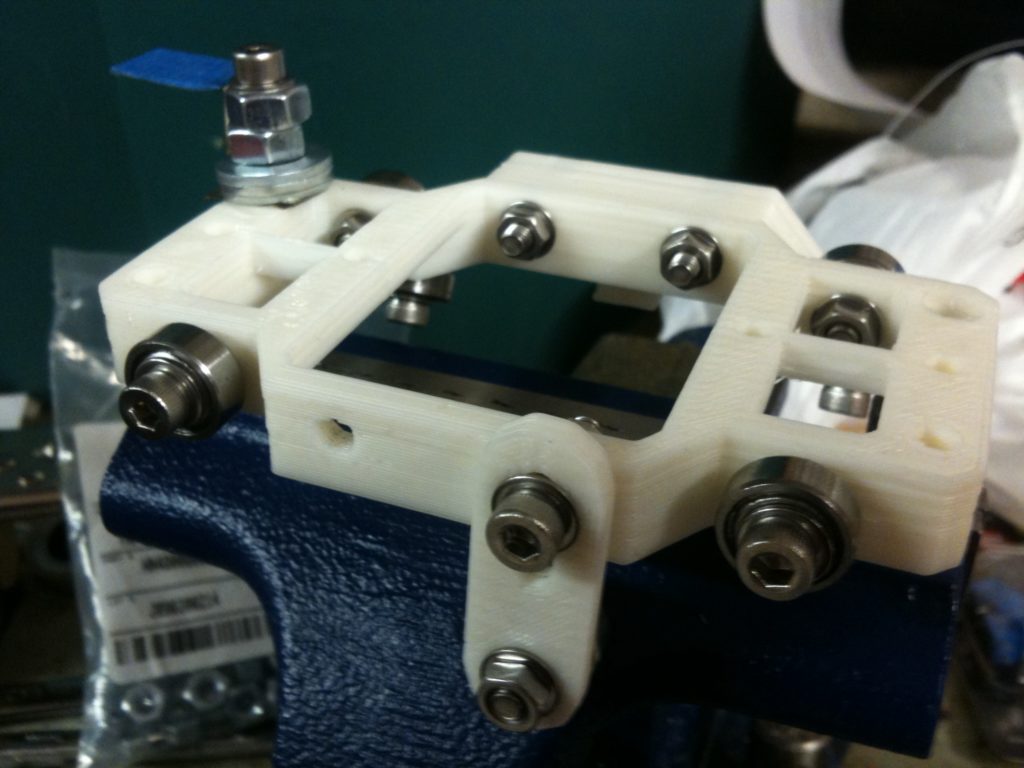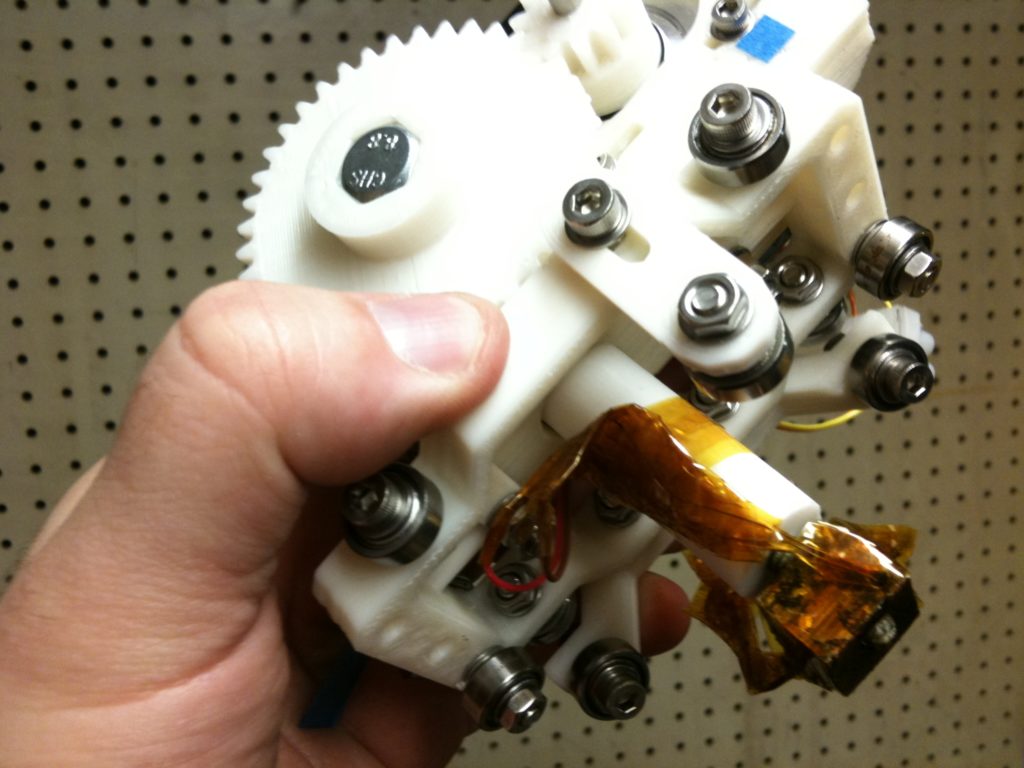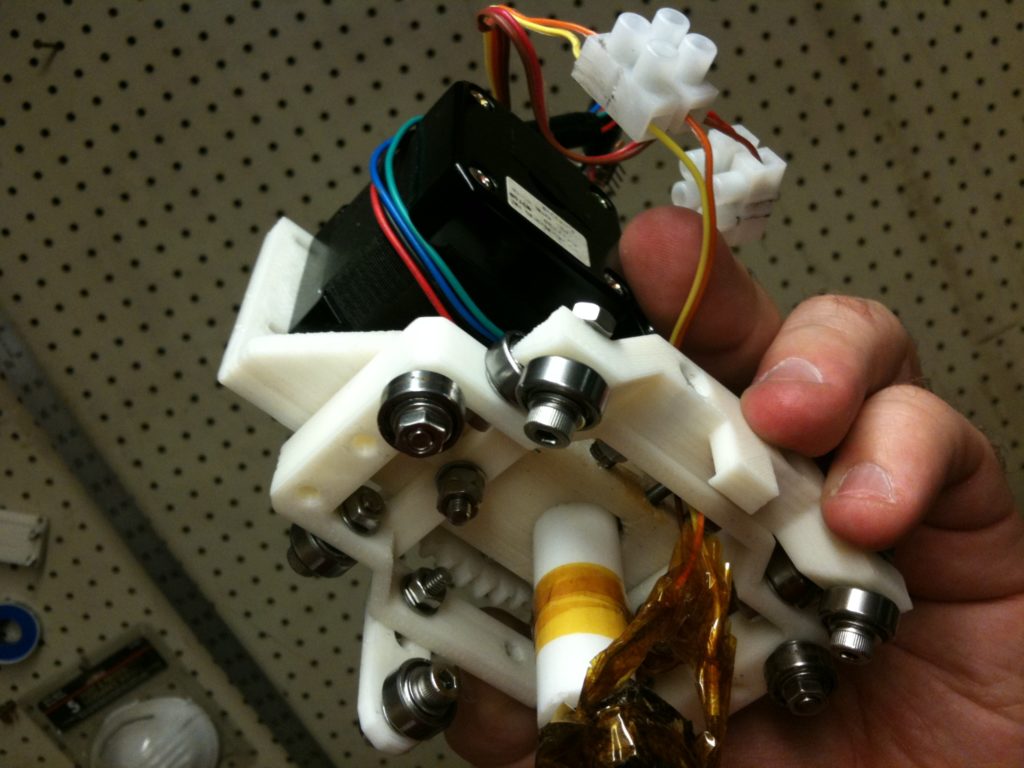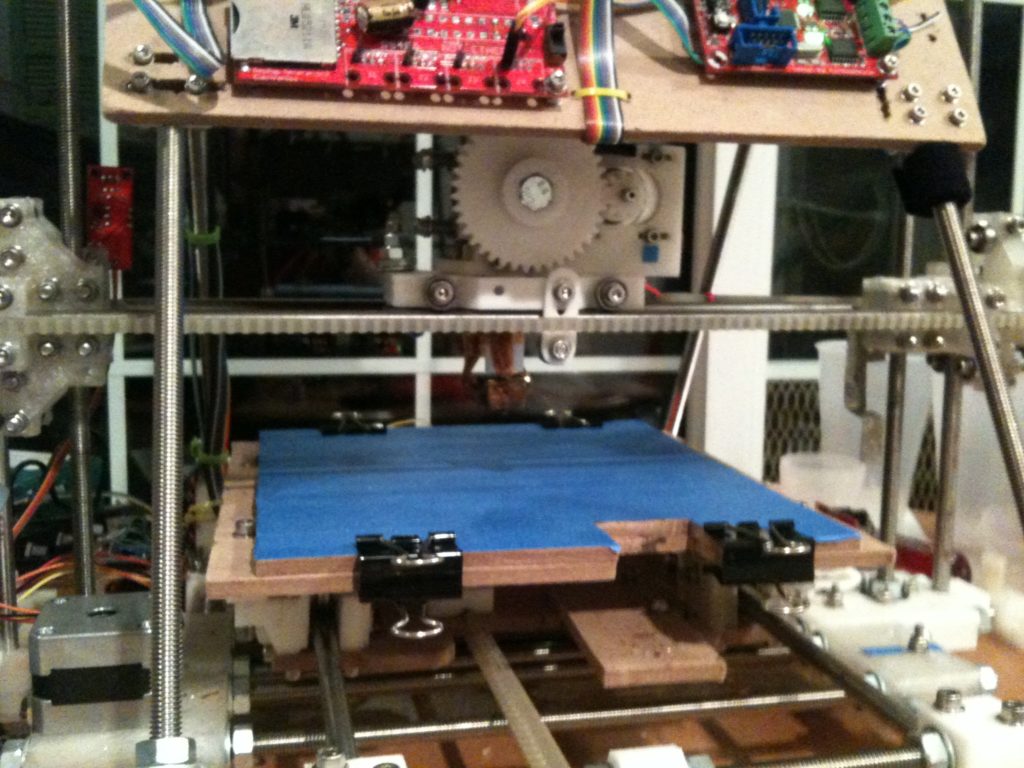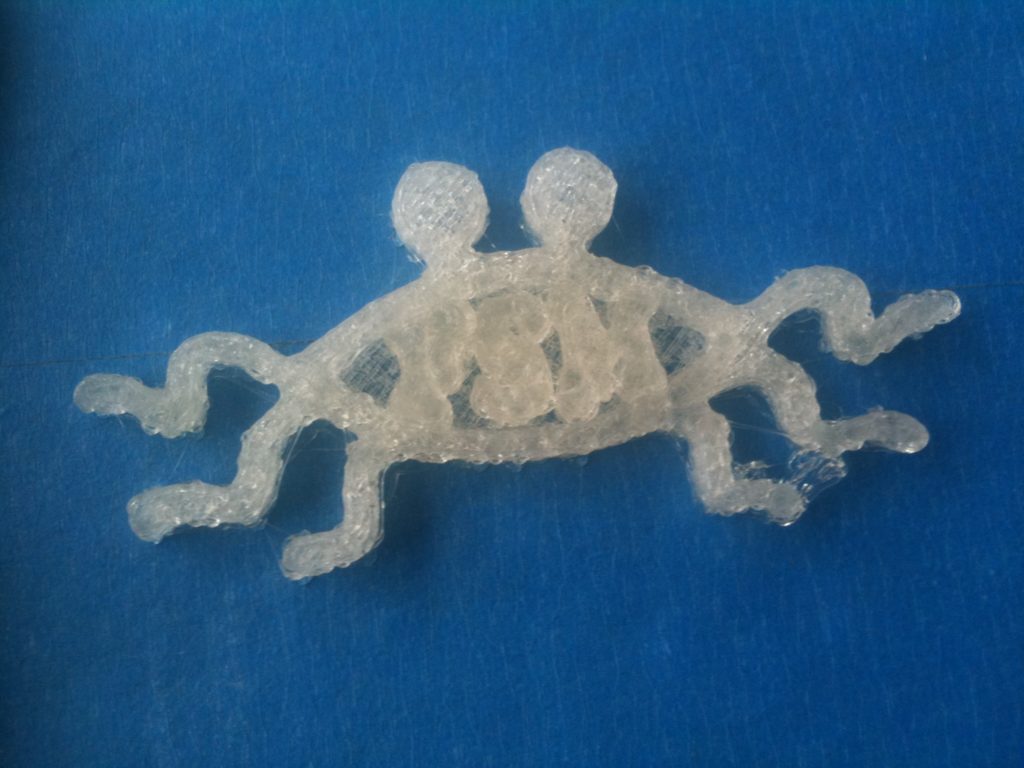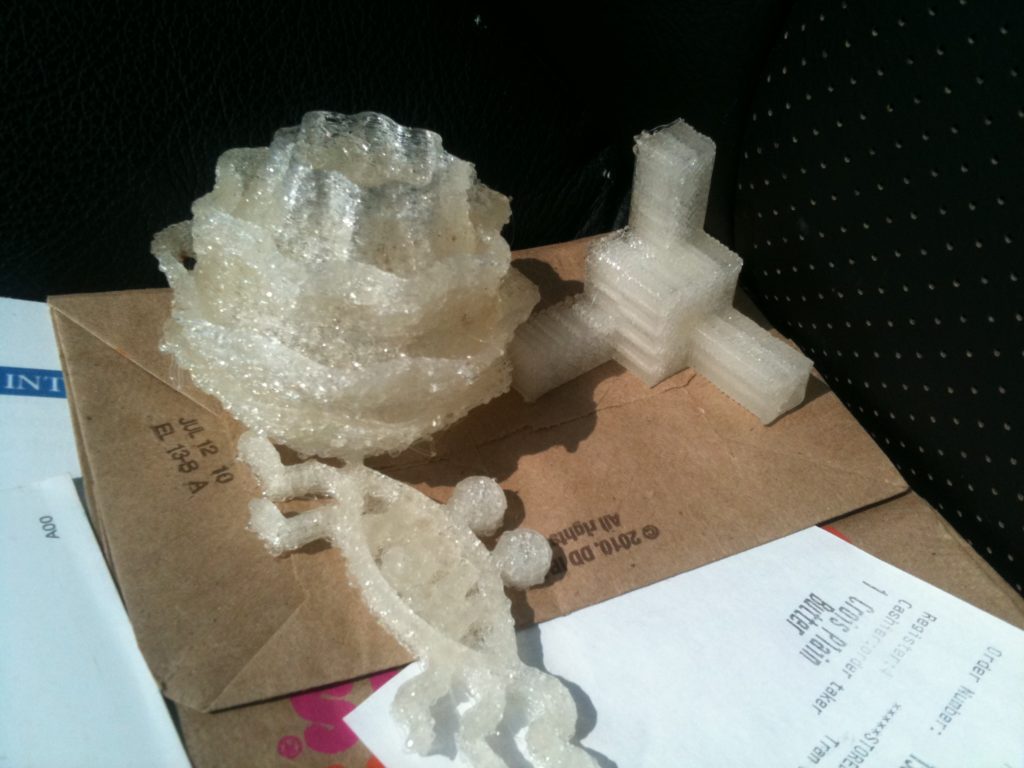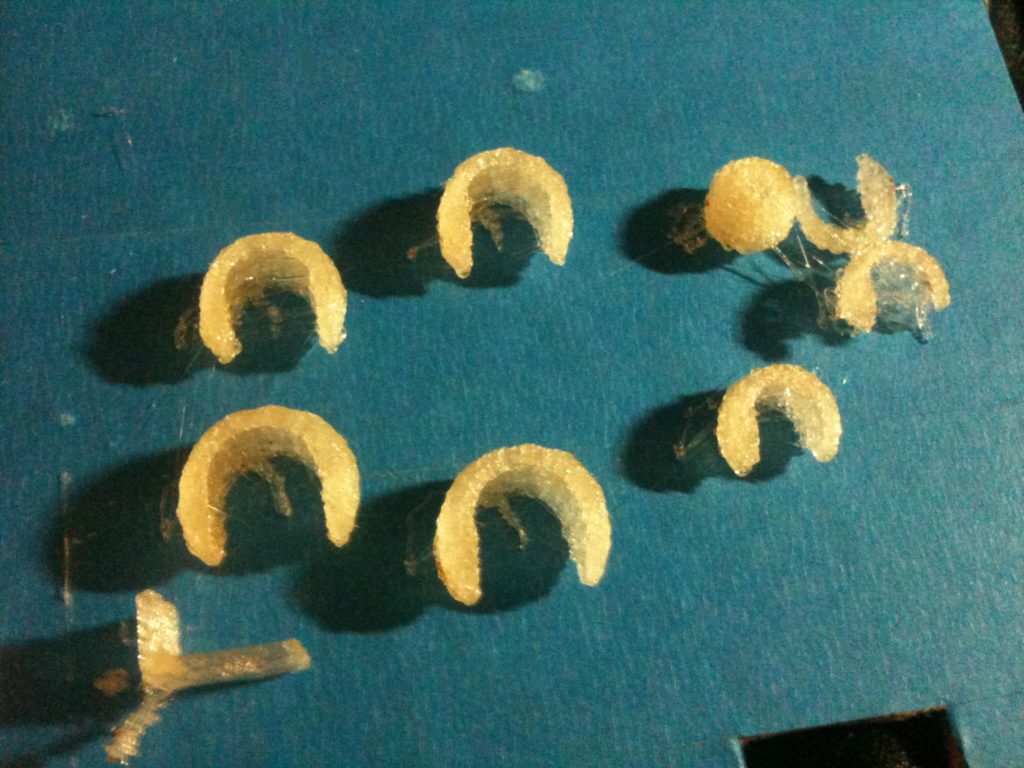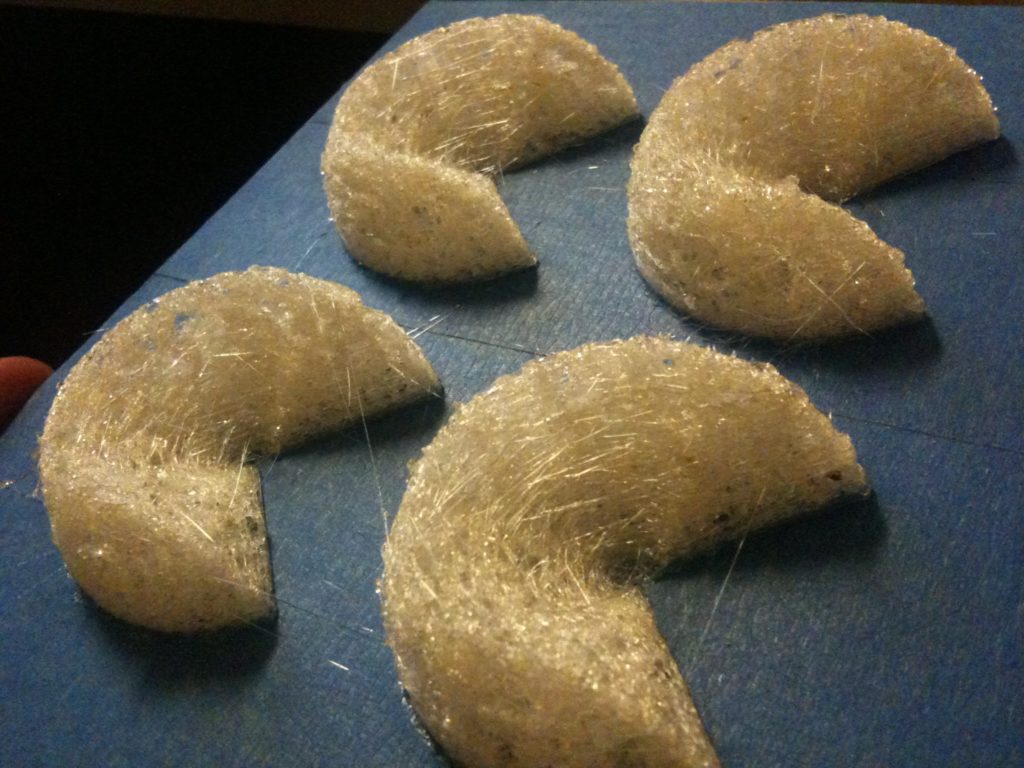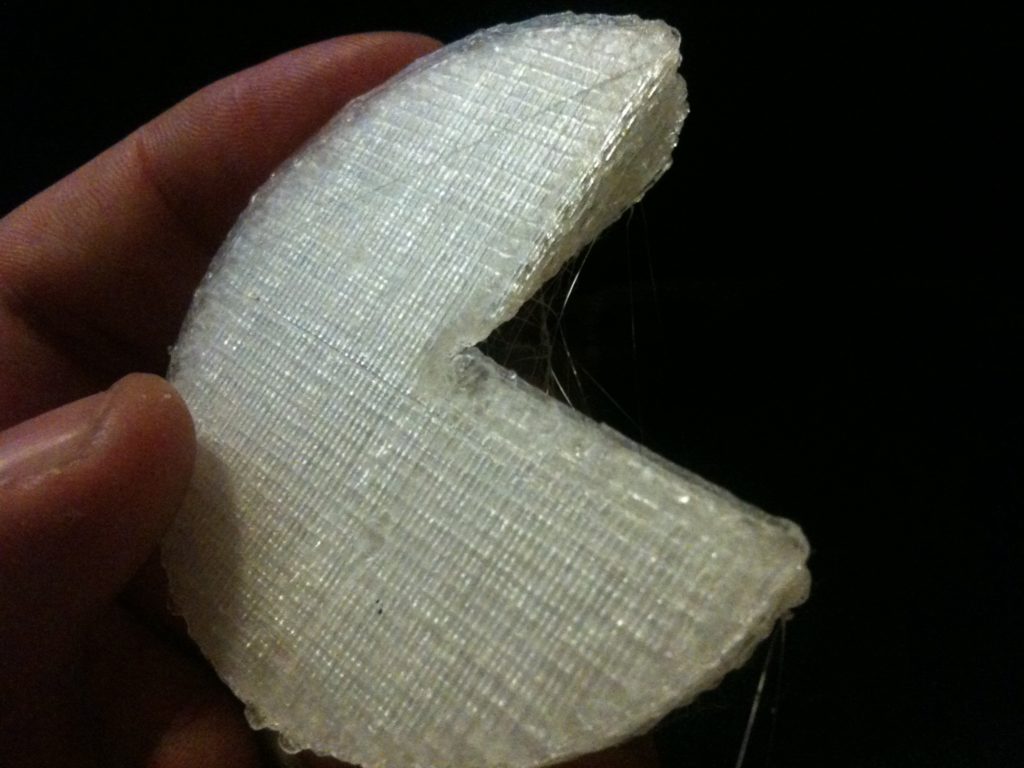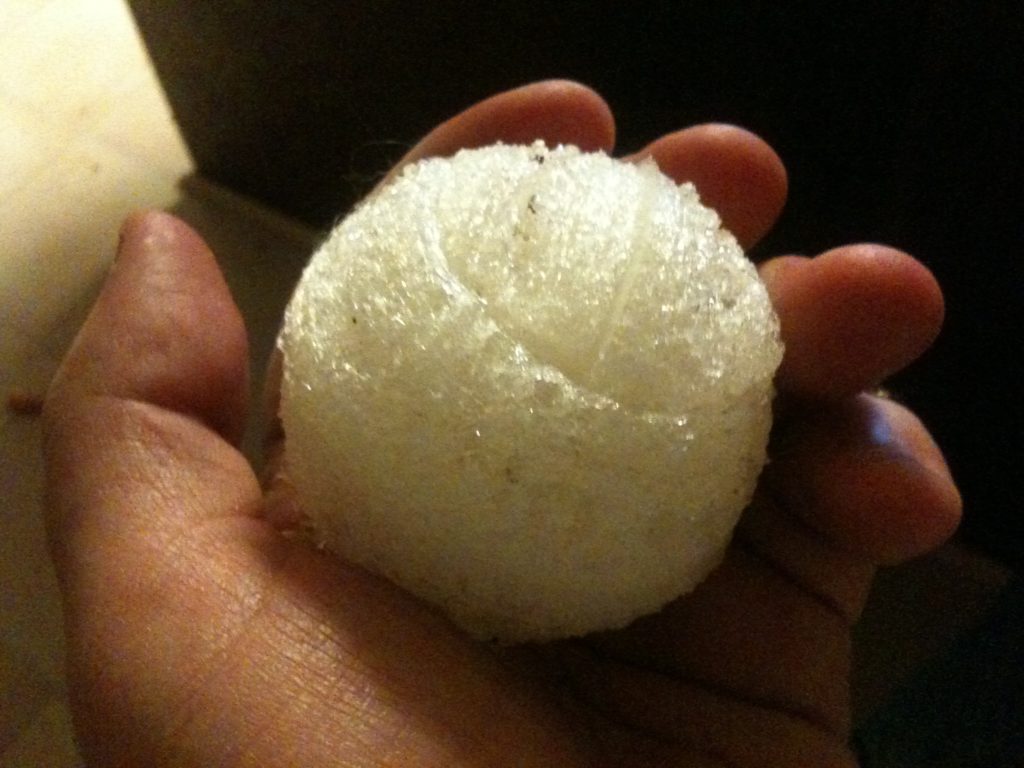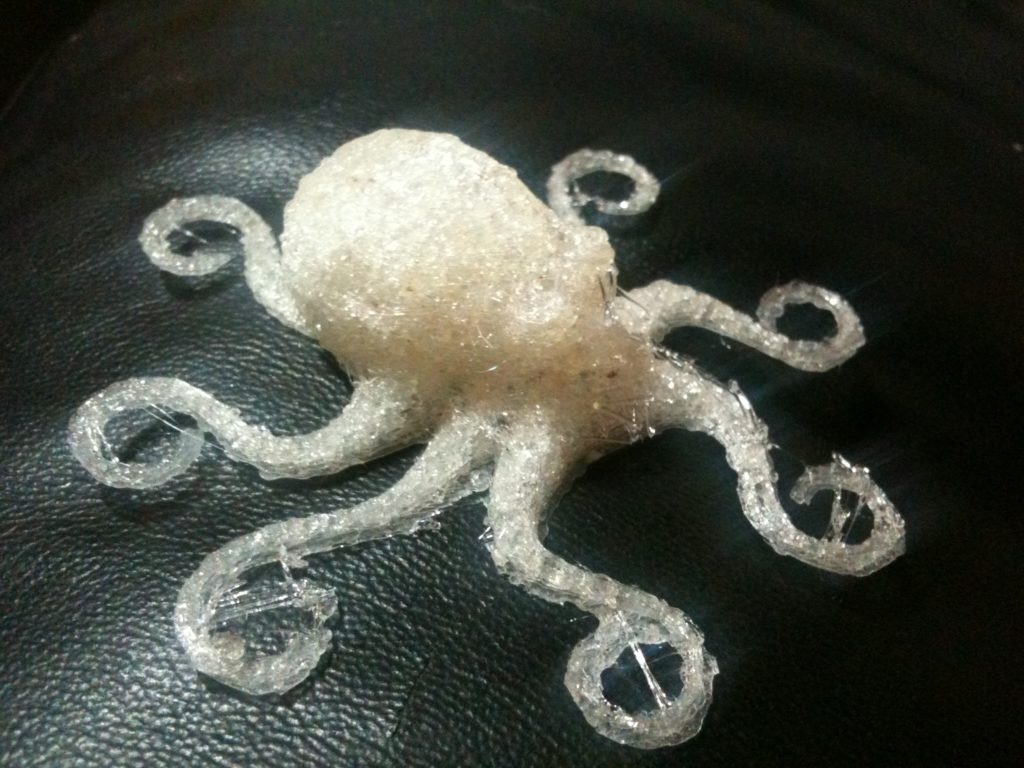[ BE SURE TO READ THE BIT AT THE END ABOUT MAKERFAIRE 2012 ]
I think I’m actually going to have all of my credit cards paid off before I catch up on my RepRap blog. 🙂 [Edit: I wrote that months ago. It turns out, I actually did! Credit cards all paid off. 🙂 ] Here’s another update – at the end of the last post I was caught up to September 25th, 2011. That means that I’m starting this post out about twelve months behind. (When I first typed that sentence, it said seven months behind. Procrastination = bad)
Here’s where things finally started to get good. My friend Chris was now building a Prusa RepRap, and purchased RAMPS 1.4 and a PCB heatbed. That motivated me to finally get around to upgrading my electronics – I was still using the old Gen 3 Makerbot electronics (which only barely did microstepping, and didn’t have a standard way to drive a heatbed). So I too purchased the RAMPS 1.4 electronics and Prusa’s PCB heatbed.
Here’s the last video of my RepRap before I tore it apart:
For those who aren’t familiar with RAMPS, RAMPS stands for RepRap Arduino Mega Pololu Shield. It’s a shield that plugs onto an Arduino Mega, it has Pololu stepper drivers plug into it, and it can support a heatbed and up to two extruders. Here’s what it looked like when it arrived.
I tore all of the original electronics off (actually I left the stepper drivers underneath on the back unused), cut a new piece of MDF, and mounted RAMPS to that. Then I rewired everything up (which was considerably easier since almost everything is on the same board).
This change thankfully also pushed me to make three others:
- I decided to try using Sprinter firmware instead of the RepRap 5D firmware I’d been using.
- I tried out pronterface instead of RepRap Host for control software
- I tried slicing with SFact (a simplified Skeinforge) instead of using the built-in slicing that RepRap Host used to do for me. I’d used Skeinforge before with the Makerbot to make my original RepRap parts, but I’d read that SFact automated lots of the redundant settings and made calibration easier.
Using Sprinter and pronterface, here I am successfully demonstrating working X Y and Z axes:
(Note: After this point my wife and I finally upgraded our phones from older iPhone 3GSes to iPhone 4Ses, so from this point on my pictures will all be higher res and hopefully the video will be more stable.)
Here are a few pics of the new electronics taken with the new phone:
This next video is where I started to really get excited. The excitement was a sliiiight bit premature because I didn’t realize yet that my Z-axis wasn’t going up enough (I needed to slow down the Z speed to accommodate my RepRap which can’t move that fast in Z), so I ended up canceling this print, but I was happy nevertheless:
It turns out I didn’t have my Z speed limit set properly, so it was trying to go up too fast and wasn’t moving. In setting that I also had to fill in other settings, such as layer height. I decided to print some hollow calibration cubes to try to get that right.
(If I add a fan to my x-carriage that should actually let me print at far smaller layer heights, I think)
I tried going smaller. 0.2 looked great until it didn’t:
The back of 0.2 didn’t come out well though:
But still that layer height looks so small..
Then during this print:
the extruder barrel pushed out of the PTFE:
Even though the heater barrel pushed out of the PTFE insulator (a problem that always caused me headaches), I remember not minding at all this time, because things were going so well.
I realized one thing that helps out a lot when fixing your RepRap is actually putting it ON a lazy susan:
So.. I rebuilt the hot-end (twice, as it failed almost immediately the first time), and printed more of the calibration cubes. Here’s the result:
With that progress made, I went back to trying to print a money clip. Here was my nervous mid-print video:
and even further along:
Behold! Apologies for there being so many pictures of this, but this was a huge moment for me. Check out the quality of this money clip:
Watch this video:
And this was even worth a second summary video:
Can you tell I was excited? 🙂
I have so much more to post, but I need to cut it here. There are a lot of really great quality print pictures coming up in the next blog post!
Today is September 23rd, 2012. I just got you all caught up to October 29th, 2011 (about 11 months ago).
In one week I’m heading down to Makerfaire NY 2012 to show off my RepRap (I’ve attended for the past two years but this is the first time I dragged my RepRap down there to exhibit). I’m booth #8736 in the 3D printing village. If you’re in the area, come on down! It’s September 29th and 30th. Makerfaire NY 2012.
(At this rate, you won’t see pictures of that for a year. 😀 )
